ENDING HOMELESSNESS IN AMERICA A BLUEPRINT FOR SUCCESS
ARNOLD STALK, Ph.D


ARNOLD STALK, Ph.D



Copyright © 2023 by Arnold Stalk Ph.D
Cover design by Vegas Visual Design, LLP
Legal, David LeGrand, Esq.
Typesetting and design by Genie L. Huff-Forkner, Vegas Visual Design, LLP
Copy editing Chris Daly, The Better Editor of New England
Copy editing Susan L. Huff
Library of Congress Identifier:
ISBN: 979-8-218-15470-7
ARNOLD STALK, Ph.D (1993)
“I am not waiting any longer to see people suffer living in the streets, tunnels, hillsides, in cars and in overcrowded housing conditions.”
In 2023 the song remains the same…The time to take action is now!”

The information provided in this book is for informational purposes only!
The publisher and the author strongly recommend that you consult with your attorney before beginning any project or program related to the content herein.
The information and/or documents contained in this book do not constitute legal or financial advice and should never be used without first consulting with financial and legal professionals to determine what may be best for your individual needs.
The publisher and the author do not make any guarantee or other promise as to any results that may be obtained from using the content of this book. You should never make any investment decision without first consulting with your own financial advisor and conducting your own research and due diligence. To the maximum extent permitted by law, the publisher and the author disclaim any and all liability in the event any information, commentary, analysis, opinions, advice and/or recommendations contained in this book prove to be inaccurate, incomplete or unreliable, or result in any investment or other losses. Content contained or made available through this book is not intended to and does not constitute legal advice or investment advice and no attorney-client relationship is formed. The publisher and the author are providing this book and its contents on an “as is” basis. Your use of the information in this book is at your own risk and you agree to release and discharge the publisher and the author from any and all claims or causes of action, known or unknown, arising out of the contents of this book.
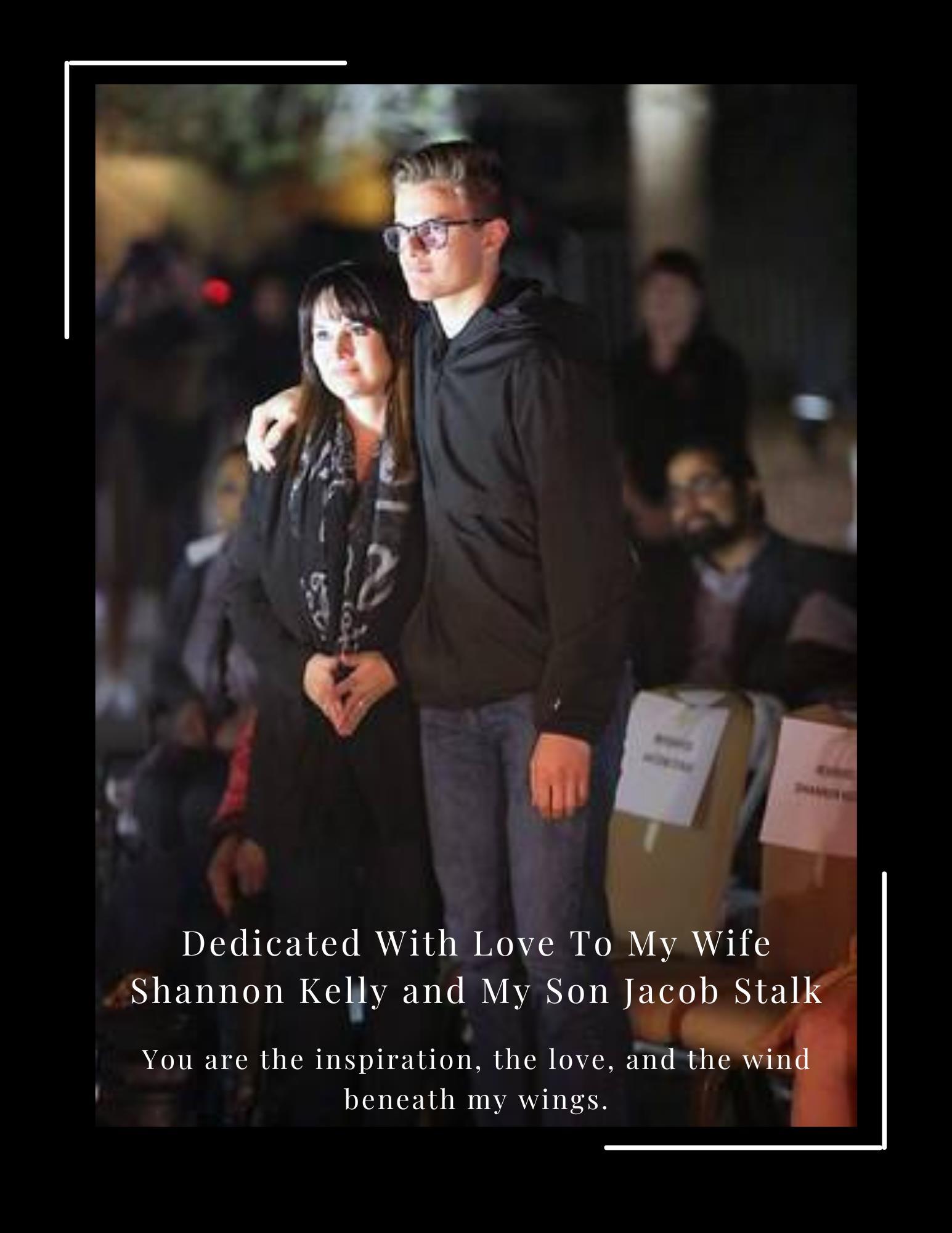









Without the help of Mayor Carolyn Goodman, we would never have accomplished our goals and objectives in helping people.
Pictured here from left to right is Jacob Stalk, me, State of Nevada Governor Joseph Lombardo, First Lady Donna Lombardo and Share Village Las Vegas Board Member Shannon Kelly. Thank you to the Lombardo family, we are truly grateful for your longtime support and friendship.



Special thanks to Julie and John Fogerty and their family, true friends of SHARE Village Las Vegas and our United States Veterans.
are priceless to us all.
A special thank you to Mary Beth Sewald who I first met when she was the Executive Director of the Nevada Broadcasters Association. She has been a longtime supporter of SHARE Village/Veterans Village, always there when you need her. She is now president of the Vegas Chamber, and I can't think of a better person in our community to represent businesses and organizations in the city of Las Vegas.

Special thanks to Julie Murray, Founder Moonridge Philanthropy Advisors. Anybody who knows of or has worked with Julie Murray knows that her impact on communities is astounding.


Thank you, Doug Puppel for always giving my voice a place to be heard. Your years of support and camaraderie are priceless.


Robyn
(center
Founder of Choice Leadership University, your energy, excitement and passion are truly inspirational, thank you for all you do.
Resorts World Las Vegas. We are grateful for your years of support and look forward to many more.
Steve Wynn, we are humbled and grateful for all that the you and the Wynn Las Vegas hve done to make our progress possible at SHARE Village Las Vegas.




Thank you,
been an inspiration in all that we do.
THE LAS VEGAS RAIDERS WALK THEIR TALK DAY AFTER DAY. THEY ARE “ ALL IN” IN OUR COMMUNITY. I knew that they were family to us since the first meeting we ever had. They do not just take PR photo ops. THEY SUIT UP AND SHOW UP!


Irene Lazaridis Navis
From left to right me, Wendy Grant, my longtime Assistant and longtime resident at Share Village: Kathi Thomas Gibson and Steven Harsin who we worked closely with from The City of Las Vegas. All were integral parts of our growth and expansion through great times and not so great times along our journey. It is truly a marathon.
2018 A huge thanks to SANDS CARES, Ms. Lorraine Kalayanaprapruit, Facilities & Sustainability Manager. Your tireless commitment to the Las Vegas community is priceless. Thank you for all you do!


 2014 This was the first donation that the Wynn team members brought to Veterans Village many years ago. This has been a wonderful journey that is just getting started!
Kenny Chavetz, (pictured center with folded flag). You were the catalyst of our treasured partnership with the Wynn. Your enthusiasm and energy have truly
2014 This was the first donation that the Wynn team members brought to Veterans Village many years ago. This has been a wonderful journey that is just getting started!
Kenny Chavetz, (pictured center with folded flag). You were the catalyst of our treasured partnership with the Wynn. Your enthusiasm and energy have truly
“Asweexpressourgratitude,wemustneverforgetthatthehighestappreciation isnottoutterwords,buttolivebythem.” JohnF.Kennedy2017 Special thanks to Sands Cares, the Venetian, Palazzo and Sands EXPO for this amazing contribution to Veterans Village Las Vegas. Amazing!


After much internal deliberating, I decided to write my own foreword for this book. Ending homelessness in America is a lifelong commitment that I made to myself and as a result of many inquiries from colleagues, professionals and friends and others that I have encountered over the years to document my history and how to accomplish projects that I have done so that others could replicate my work.
As a child I grew up in Culver City, California, about a half block from the old MGM Studios (which is now Sony pictures as well), just minutes from the 40-acre “back lot movie studio” where movies and television shows such as “Gone with the Wind,” “The Wizard of Oz,” “The Andy Griffith Show,” “I Love Lucy” and many hundreds, if not thousands, of other TV and movie programs were made.
These movie sets and studios were my first exposure to architecture, planning and urban design resulting from years of me sneaking under the fences around the perimeter of the studio lots with my sketchpad. Looking at the replicas of the streets of cities like New York and Paris and seeing many old movies and westerns sparked an interest in me in treating form context as it related to architecture in the cities around the world.
I did not realize, in my early years, that by doing that I had set out on my educational path, or how important my simultaneous interest in Disneyland would be. I had no idea as to the complexities in the intensity of the thought process that went on in Walt Disney‘s mind at that point, but I knew something special was happening regarding the way that that one theme park became an iconic international tourist attraction and gigantic exposition. I remember very well the General Electric Carousel of Progress in Disneyland, Anaheim California. This exhibit was created by Walt Disney and WED Enterprises as the prime feature of the General Electric Pavilion for the 1964 New York World’s Fair. The attraction was moved to Tomorrowland at “Disneyland in Anaheim and remained there from 1967 until 1973.

It was an archival theater in the round that provided the joining of the industrial and urban world complex that Disney created through decades of experimentation in time. With each passing decade, Disney was able to illustrate how the world was changing at that point in time.

This culminated when this new theater in the round ride/exhibit was over. I remember walking down the hallway of that exhibit to encounter one of Walt Disney's visions, a scale model of a future city he called Epcot, a revolutionary prototypical community of tomorrow. It was an amazing three-dimensional peek at the future from the creative mind of mind of Disney which included, but was not limited to, a nuclear reactor and other cutting-edge components that he put into this master plan vision. As Disney moved to Florida from California, he implemented many of the ideas from those models, which we know today as Epcot, Celebration and the monorail system that links all the park's hotels. If power brokers, urban planners, and designers take a good look at Disneyworld and the many wonderful things that were laid out as part of it, they'll see that Walt Disney found many answers to perennial problems and put them on display for the world to replicate.
Prior to 1970, California was an economic and industrial powerhouse, but signs of urban and industrial decline began to appear in the 1980s. I was fortunate enough to experience life during Southern California‘s financial peak in the 1960s and 1970s while working for my father, Seymour Stalk, in Huntington Park, California. Our family owned a small business called Huntington Park paint company.
Since 1974, I’ve dedicated my life to the betterment of communities and society in the United States and abroad. As a graduate of Southern California Institute of Architecture in 1979, my education has allowed me to explore areas of urban development and given me many opportunities to serve for more than four decades.

The state was in the middle of an economic and industrial explosion such as in the cities of South Gate, Pico Rivera, Vernon, and others which saw the industrial revolution in America come to life and then start to decline. Factories run by Ford, General Motors, Chevrolet, Bethlehem Steel, Dupont Paint and Coatings, Lucky Aircraft, Goodyear, Firestone and many others employed tens of thousands of people. It was there that I also witnessed the once preeminent economic machine meet eventual demise, the working factories replaced by warehouses stocked with goods from abroad, principally China.
 Photo credit: Las Vegas Review Journal
Photo credit: Las Vegas Review Journal
It was there during these times of the rise and fall, while working for my father at his paint store as a young kid attending Sci-Arc, that I discovered the beauty and wonder of industrial technology and design.

Walt Disney was a genius and visionary extraordinaire. It is my hope that when I leave this planet, I can say that Disney, who was my idol, was the biggest, most single visionary that had the most influence on my professional life to date.

“
”
I don’t want to go to any more conferences and talk about it, I don’t want to hand out water bottles when it gets hot. I’ve been building housing for four decades. Those of us who are in it know the problem. It’s time to stop the talking. I want to build housing. ”
Arnold Stalk, Ph.D Founder, SHARE Village Las Vegas, 2010.
Currently, Dr. Arnold Stalk, is the Principal of Stalk Consulting, a Las Vegas-based full-service firm specializing in “Start-To-Finish” planning, urban design, redevelopment, governmental relations, real estate acquisitions, property management and property financing projects. Originally from Southern California, Arnold began his renowned career in 1977 with a master’s degree in Architecture from Southern California Institute of Architecture (Sci-Arc) and holds a Ph.D.
For more than four decades he has been responsible for dozens of notable residential, industrial and commercial projects throughout the United States, Haiti and China in both the public and private sector.
As a professor of architecture, he's taught and lectured at California State University, Northridge; Southern California Institute of Architecture; University of California, Los Angeles (UCLA); University of Southern California (USC);

California Polytechnic University, Pomona; and University of Nevada, Las Vegas (UNLV). Previously a licensed general contractor in the state of California and currently a licensed real estate agent, property manager, and expert witness in the state of Nevada.
During his career he's served as a board member for numerous non-profit organizations and formed his own non-profit, SHARE, in 1994 that is dedicated to the development of supportive housing and services for our United States Veterans, low-income families and seniors. As the founder of Veterans Village, SHARE’s flagship project, he's developed an innovative and unique approach to the creation of comprehensive housing with intensive support services.
His work has been recognized by numerous prestigious organizations and has been awarded with many honors including by First Lady Michelle Obama at the 2016 State of The Union for the creation of housing for homeless Veterans and the National Daily Points of Light Award from the White House, Presidents George H.W. Bush and George W. Bush.


Special thanks in memoriam to Tyrone Thompson. A humanitarian, dedicated public servant, an advocate on behalf of those who have no voice, a community leader, A true patriot and friend of our United States Veterans. Loved by many. You will be missed.
 2016 Former First Lady Michelle Obama with Dr. Arnold Stalk, State of the Union Address.
2016 Former First Lady Michelle Obama with Dr. Arnold Stalk, State of the Union Address.
#1 Keep politics out of the whole process. Focus on getting into the action of building housing so people can live with respect and dignity.
#2 Create a master plan. This master plan could be developed in urban cities, counties and rural counties across the USA.
#3 Create public and private partnerships, implementing ideas, concepts and dreams to build affordable housing.
We cannot spend our way out of the homeless problem.

We need to invent new ways of thinking and generate ideas. Ideas that can go from:
• Vision
• Concept
• Prototype
• Fabrication
#4 Master planning to end homelessness to include the specific creation of emergency shelters (1–90-day stays), transitional housing (91–180-day stays) and permanent rental housing models to be built on scattered sites within residential neighborhood contexts.
#5 Create a local, statewide and federal overhaul of all planning codes. This will encourage and incentivize new developments of all types, increase density bonuses by public and private partnerships.
#6 Amend and overhaul the local, state and federal building codes which will dramatically reduce the bureaucratic delays and irrelevant costs that drive up the cost of development and construction.
#7 Create an Affordable Housing Trust Fund of evolving funds made available to nonprofit and for-profit organizations. This would create a constant supply of funds for and allow loans for new housing and rehabilitation of existing structures.
#8 Create a public/private citizens’ panel to provide constant and interactive communication tools between governmental entities, financial institutions, neighborhood voices and developers.
#9 Streamline all approval processes to adopt local, state and federal legislation which will mandate a project’s length of time limit for all approvals to expedite the production and implementation of emergency shelters, transitional housing and permanent housing models.
#10 Create and adopt annual and five-year work programs backed up with legislation which details and will delineate project concepts, goals, development timelines and build-outs of emergency shelters, transitional housing and permanent housing models.
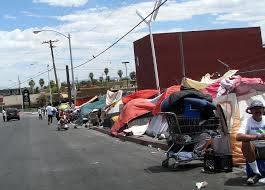


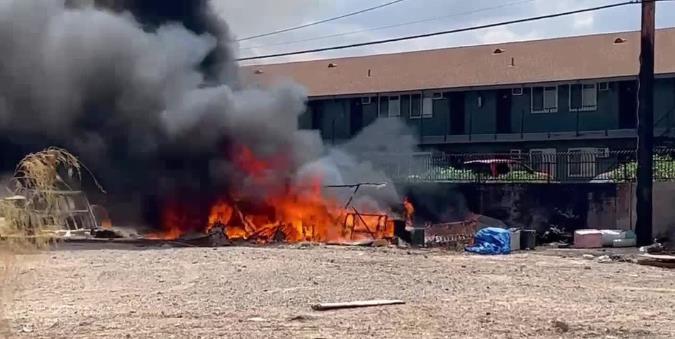


The single biggest cause of chronic poverty and homelessness in the United States is the lack of special needs housing with intensive supportive services. This a very aggressive and comprehensive plan that we are embarking on, and I am confident that this model for affordable housing can be achieved with public and private sector partners, collaborations and support from the public at large. We do not have to see people suffer living in the street's tunnels, hillsides, in cars and in overcrowded housing conditions.
The ONLY way to END homelessness is to BUILD AFFORDABLE housing with supportive services. The time to act is now!
The fear of not having life’s most basic necessities such as; food, clothing and shelter, is taxing on the human spirt physically, mentally and emotionally. The human spirit relies on certain basics including food security, income security, basic needs security, healthcare and mental healthcare security.
Homelessness does not discriminate. It affects men, women and children. Homelessness does not care about race, gender, sexual preference or how an individual identifies. It affects both the young and the elderly, veterans and civilians.
More than 60% of individuals in the United States are one paycheck away from homelessness.


• Little to no inventory of affordable housing.

• Lack of access to medical/mental health services.
• Lack of access to healthy food.
• Lack of affordable and reliable public transportation.
• Lack of access to government benefits (i.e., VA Benefits, TANF, SNAP and MABAD, SSA and SSD).
• Lack of publicly funded addiction and recovery services.
• Lack of skills training and job training.
• Lack of employment referrals/resources.
• Lack of cooperation between agencies.
• No centralization of services.
• Minimal access to affordable legal services.
• Lack of public accountability for the safety and security for all.


This is an excerpt of All In: The Federal Strategic Plan to Prevent and End Homelessness. Read the full plan at usich.gov/fsp.
“Housing is a social determinant of health, meaning lack of stable housing has a negative impact on overall health and life expectancy. Tens of thousands of people die every year due to the dangerous conditions of living without stable housing conditions that have worsened due to climate change and the rise in extreme weather. For those who survive, the trauma caused by homelessness can have a lasting impact even after a person moves back into housing. Children who have experienced homelessness are more likely to experience serious health conditions and to become more vulnerable to abuse and violence.”

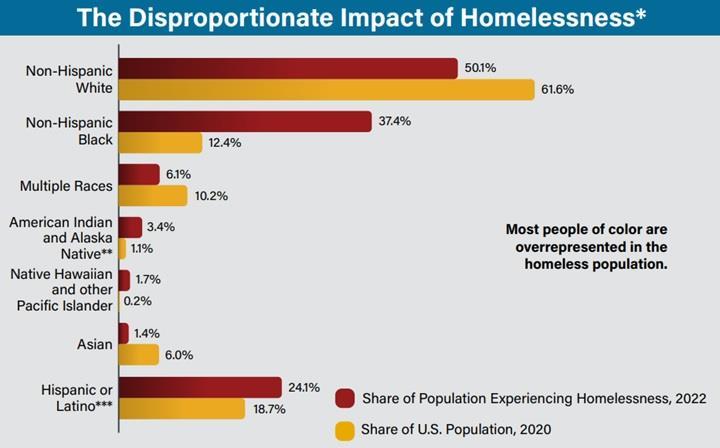

The SHARE Village Las Vegas mobile application gives immediate access to emergency resources and information in the palm of your hand.




Access to information is the key to escaping the vicious cycle of homelessness and poverty in our country. We have unlocked an easy one-step method for people to become strong and independent. The mobile application serves as a directory to emergency services and information for housing, medical and mental health services, food and nutrition, supplies, emergency relief and more.
The SHARE Village Las Vegas mobile app is available for download in both the Google Play Store and the Apple App Store. To preview and download the application please visit http://m.appbuild.io/sharevil

This innovation captures the true spirit of agency and individual collaborations in our community.
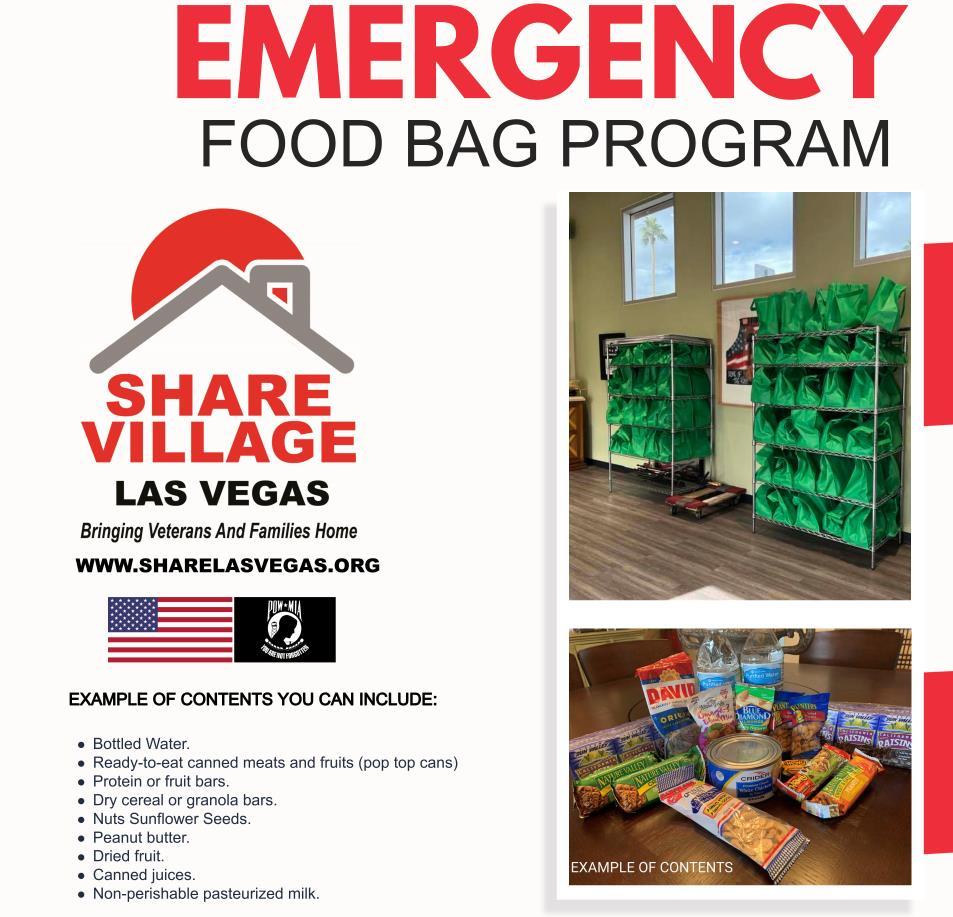



My educational background and my first experiences.

1974
At the New School of Architecture−Southern California Institute of Architecture−Circa 1973-1974−I was in the first graduating class 1977 and then completed my Masters Degree in 1979.


 Sci-Arc (Southern California Institute of Architecture) www.sciarc.edu
Southern California Institute of architecture between 1974 and 1977. The school building was in a converted factory and housed about 300 students at its peak. It was a big giant think tank to me.
Sci-Arc (Southern California Institute of Architecture) www.sciarc.edu
Southern California Institute of architecture between 1974 and 1977. The school building was in a converted factory and housed about 300 students at its peak. It was a big giant think tank to me.
Vista Volunteer Offices
I was a student at the Southern California Institute of Architecture/Sci-Arc in the summer of 1973. My mentor, Raymond Kappe, strongly suggested that I do an internship as a Vista volunteer, in service to America.
I then went down to the community design center in downtown Los Angeles, which in those days were headquartered at the historic Broadway Arcade Building.


I was very fortunate to work under the direction of architects who were engaged in community and public benefit projects. The first project I worked on was called the United American Indian Involvement center.
I went on to work as a volunteer technician/intern under these licensed architects for three summers in a row. We also did the first methadone clinic with Volunteers of America for heroin addicts on Skid Row in LA.
We also did transitional housing for people coming out of homelessness. It was a real eye-opener for me as a kid who’d grown up in a suburb called Culver City, California.
I was able to use it as a steppingstone which not only established my track record in design but also gave me knowledge of building times, what buildings were made of, building systems and design of facilities.
I recently did a cursory check on Los Angeles Community Design Center and the last listing shows them in, Wilmington, California which is near San Pedro and the coast, and it is permanently closed.

Vista volunteers in the Vista program later went onto be called AmeriCorps. Little did I know that this would be the basis for my interest in working with people of all incomes and the homeless. I still remember those days very clearly and don’t regret a minute of volunteering.
Working at the Broadway Spring Arcade Building got me to thinking about empty buildings, which downtown Los Angeles had a plethora of, and converting those buildings. I had no idea this would later lead me to doing my thesis on converting old downtown buildings in the financial district into affordable housing. These were truly my routes and the days in which I began thinking critically as opposed to not thinking much!
United American Indian Involvement Center. First Methadone Clinic for heroin addicts, Los Angeles, CA 1975-76
The takeaway from this chapter is twofold. One is to establish my track record and gain the knowledge of building times. Number two is to gain a sense of compassion and humanistic feelings for people that struggle with homelessness and lack of affordable housing.
The Broadway/Spring Arcade Building, Downtown Los Angeles, California. LA Community Design Center Offices in 1975-1977.It is unimaginable to think that this photo of me and my Mom was taken 50 years ago. I was a student at the Southern California Institute of Architecture (SciArc) in Santa Monica, California and our amazing school is celebrating 50 years since its founding.


I later went on the teach at Sci-Arc for 14 years and served on the Board of Directors as a Faculty Representative on the Board. It was an unforgettable experience.



 Sci-Arc ARCH (Architectural Response Housing) Design Studio 1992
Arnold Stalk with Mother, Bette Stalk at Sci-Arc Design Studio Circa (1975).
Pictured here is Ray Kappe, my former professor at Sci-Arc, with his wife, Shelly Kappe. They changed my life and trajectory forever.
Sci-Arc ARCH (Architectural Response Housing) Design Studio 1992
Arnold Stalk with Mother, Bette Stalk at Sci-Arc Design Studio Circa (1975).
Pictured here is Ray Kappe, my former professor at Sci-Arc, with his wife, Shelly Kappe. They changed my life and trajectory forever.
Thank you, Ray and Shelly Kappe, for the opportunity to allow me to dream and grow as a person.
Although other avant-garde, alternative schools of architecture, like the Bauhaus and Black Mountain College, only lasted 10 years or so, SCI-Arc has now reached its fiftieth anniversary, due to Ray Kappe's having created it with enough flexibility to withstand the changes of the last half century. On SCI-ARC’s fortieth anniversary, in 2012, congratulatory banners were hung all over the city. Ray Kappe, as Founding Director, was honored by the L.A. City Council, and that day was declared "SCI-ARC day in L.A."
This year, with its graduates working, practicing, writing and teaching, all over the world, SCI-ARC has been celebrating its success of the last fifty years. SCI-ARC's success was achieved through the combined efforts of its talented and dedicated faculty, students and staff, all working together to develop this very special school.
And now, SCI-ARC is looking forward to it's next successful fifty years.



Fifty-year old Southern California Institute of Architecture SCI-ARC, the unique, non-profit, world renowned school of architecture, was created by well-known, awarded and published architect, Ray Kappe, who became SCI-ARC's visionary Founding Director. He previously founded the successful 3 1/2 year old Architecture Program at California Polytechnic State University, Pomona, but due to an unsympathetic and unsupportive administration, and after a student/faculty demonstration with "Kappe Now" tee shirts, "our Godfather building posters, with Kappe's image, and helicopters patrolling overhead in support of Kappe's program”, he decided to resign the Chairmanship and start "The New School" in a 20,000 sq. ft. building he leased on the corner of Berkeley & Nebraska Streets, in Santa Monica, California, in 1972. He was joined by six of his talented, dedicated faculty members and 75 students from Cal Poly and around the U.S. and Canada.
Education is the single most important issue in one’s personal academic growth. This photo was taken at Sci-Arc (Southern California Institute of Architecture) where I attended as a student, a Board member and as a professor directing "ARCH" (Architectural Response to Community Housing) urban studio. It was years of a "Think Tank" environment that taught me many things about the built environment and solving critical social problems.
At SCI-ARC's 50th Anniversary "Main Event" Gala and fund raiser for student scholarships, its talented, dedicated, Founding Faculty: (left to right) Ahde Lahti, Bill Simonian, Thom Mayne, Glen Small, Shelly Kappe, and Jim Stafford, as well as Founding Director Ray Kappe, posthumously, were recognized with honorary Masters of Architecture Degrees.

Kappe gave "The New School" it's official name, the Southern California Institute of Architecture, with the memorable acronym of SCI-ARC. SCI-ARC became internationally well known and influential, very soon, and achieved professional accreditation in just four years. Ray Kappe’s directorship included: buying land in Topanga Canyon for experimental structures and inspiring the creation of the videotaped "Design Forum Public Lectures" archive. Coordinated by Shelly Kappe, it is now available on YouTube and considered internationally to be a very important architectural resource. For 35 years beginning in 1978, over 1,000 SCI-ARC students participated in its European Studies Program, living and studying in the historic villa in Vico Morcote (Lugano), Switzerland, acquired and restored by SCI-ARC. From there, they took field trips, experiencing the most important architecture of Europe.
Ray Kappe and Shelly Kappe retired in 1987, after fifteen successful years. However, they continued to be involved, with Ray Kappe serving on the Board of Directors, and by leading student exchanges with schools in Berlin.

Also, in 2002, Ray Kappe was appointed Interim Director to help the school, transition between directorships.
SCI-ARC's second director was Michael Rotondi, who added more classes with cultural emphasis and led the school to achieve WASC (Western Association of Collegiate Schools of Architecture) membership. He was followed by Neil Denari, who moved SCI-ARC to the early L.A., reinforced concrete building of the former Santa Fe Freight Depot in downtown Los Angeles. The historic building was chosen by Ray Kappe, who wanted SCI-ARC to contribute to the renaissance of the downtown area. Eric Moss became the fourth director, and during his tenure, SCI-ARC achieved building ownership by buying its building, located in the Arts District, close to the Los Angeles River, where the city began. It is now its permanent home. SCI-ARC's fifth and current director is Hernan Alonso Diaz. He has kept SCI-ARC going well during the challenge of the pandemic, including remote and in-person classes.
SCI-Arc Commemorates 50th Anniversary – Photo Credit: SCIArc www.sciarc.edu/news/2022/50th-main-event .
Source: www.sciarc.edu
And on to a journey to learn how to find solutions to affordable housing problems.
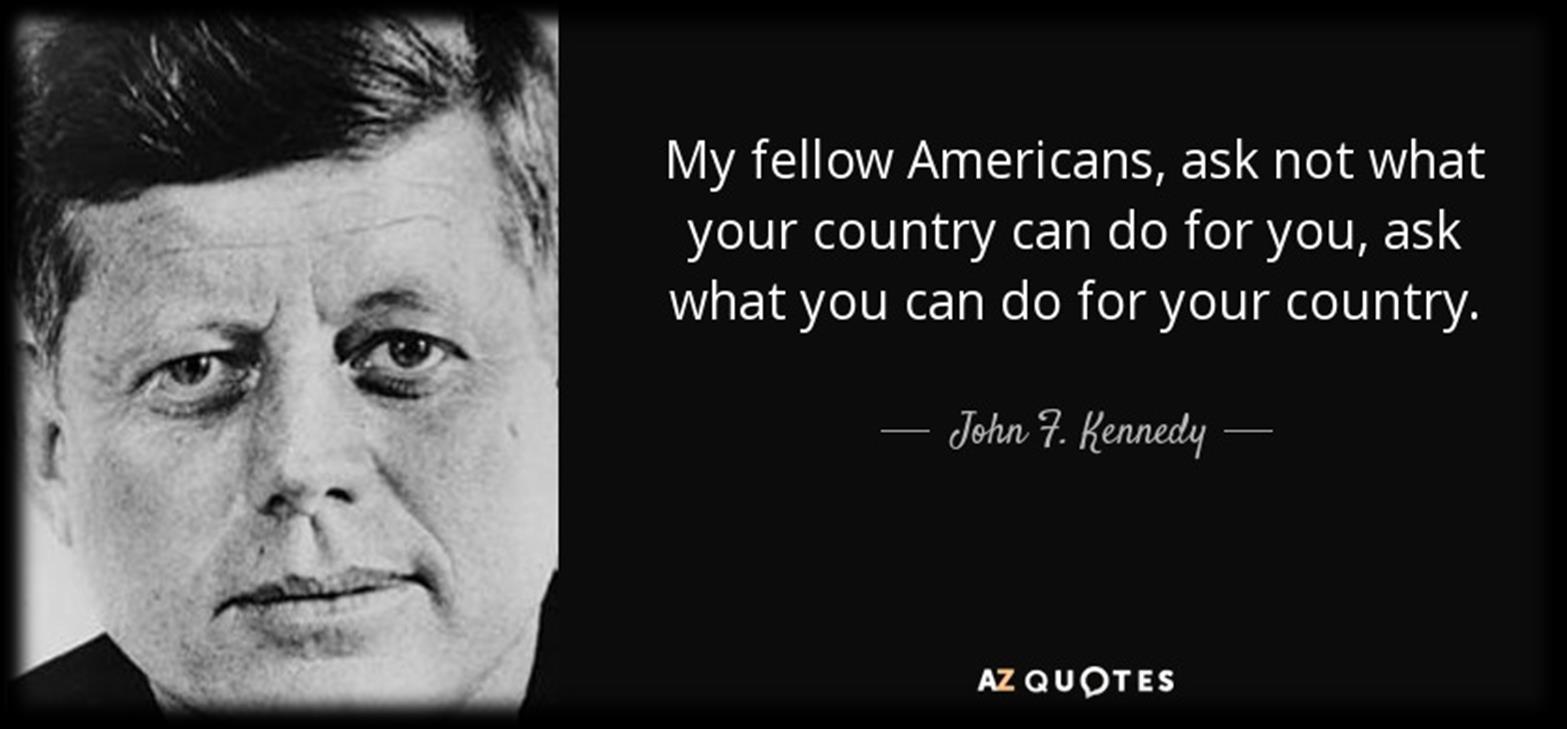


• A home is not in the streets.
• A home is not in a tunnel.
• A home is not on the side of a freeway embankment.

• A shopping cart is not a home.
The only way to solve the homeless problem in America is to build affordable housing with supportive and intensive wraparound services.

EVERYONE DESERVES A HOME- HONOR, DIGNITY & RESPECT

Nonprofit start-ups/ Los Angeles, California
During the 1980s I worked with a woman named Ruth Schwartz (now deceased) who was the Chief Executive Officer/President of Shelter Partnership in Los Angeles, California. (www.shelterpartnership.org)
For over 30 years Shelter Partnership has provided new donated goods to an established network of over 273 non-profit agencies serving the homeless in Los Angeles County. This experience enables Shelter Partnership to accept donations of new products and get them to where they are needed most. Shelter Partnership is responding to the current crisis by providing essential supplies like emergency blankets, diapers and socks to its network of agencies.
By this time, I had garnered certain expertise and knowledge of how to organize people, professionals, consultants, labor union members, building material suppliers, building contractors and many trades that were necessary to renovate buildings.
This was a super niche for me at that point because nobody else was doing this, in Southern California at least.
Valley Shelter for the Homeless, North Hollywood, California
Valley Shelter for the Homeless was an “Ultra grass roots” project that came from my involvement with the San Fernando Valley Interfaith Council. (http://www.vic-la.org ) This was a group of wellmeaning people of all faiths that came together to start housing homeless individuals and mainly families into a broken-down slum dwelling/motel in the San Fernando Valley. None of us really knew what we were doing but the organization had soul. We patched together donations from the community and from local churches and I convinced the city of Los Angeles to help fund the acquisition of the motel.

One day right after we started to renovate the facility, Valerie Harper and Jon Voight walked into the old motel lobby and offered to help. They heard about us in news reports as the internet was not yet invented.

It was at that moment that I realized the world can change when a small band of citizens from ALL walks of life can, in fact, be a part of the change. Ms. Harper and Mr. Voight not only gave financially to develop our shelter, they also gave support to our team through inspiration and positive energy. While I mourn her loss, I know that Valerie Harper is in a peaceful place in heaven.
House of Ruth Shelter, East Los Angeles, California (www.houseofruth.org)
The House of Ruth Shelter was one of the first very small neighborhood infill family homeless shelters in Los Angeles, California. It was one of a handful of projects that I was asked to help start in terms of rehabilitating older buildings. I worked in conjunction with the shelter partnership of Los Angeles to rehabilitate an old home that was located in East Los Angeles, California. We always worked with licensed and experienced professionals i.e., general building contractors and other project professionals. I was the owner’s representative in many instances, and I was feeling my way through this process. It was here that I learned the first steps on how to work with the bureaucracy in the State of California, HUD (www.hud.gov) and other governmental agencies. Through the redevelopment agency in the city of Los Angeles I helped create places of respect and dignity, as opposed to people living in the streets.
(www.epath.org)
Step Up delivers compassionate support to people experiencing serious mental health issues and persons who are experiencing chronic homelessness, to help them recover, stabilize, and integrate into the community.
Through dynamic partnerships, we provide positive social and learning environments, vocational training, permanent supportive housing opportunities and recovery services to empower individuals to cultivate lives of hope and dignity. We exercise innovative leadership and advocacy to increase public understanding, support and acceptance of all people living with serious mental health issues.
Habitat for Humanity of The San Fernando Valley (https://locator.lacounty.gov/lac/Location/3176055/ habitat-for-humanity san-fernando-and-santaclarita-valleys)
It was from Habitat for Humanity that I learned how to organize volunteers, procure donations from building material suppliers, work with a community to renovate community buildings, apartment complexes and single-family residences. The program provides housing services for veterans, families of veterans and honorably discharged veterans in the San Fernando and Santa Clarita Valley areas.
I had the honor of meeting President Jimmy Carter at a groundbreaking for one of our Habitat for Humanity projects in California in the 1990s.
It was President Carter and people like Mother Theresa and others through the years that have inspired me to help those in need, and those who have no voice to help leave the planet a little better place in which to live. He will always have a special place in my life for caring so much about people.

The Los Angeles LGBT Center (www.lalgbtcenter.org) has cared for, championed and celebrated LGBT individuals and families in Los Angeles and beyond since our founders first began providing services in 1969. When I was an owner's representative for this organization in the 1980s, it was known as The Gay and Lesbian Community Service Center. Today, the center serves more LGBT people than any other organization in the world. We are an unstoppable force in the fight against bigotry and the struggle to build a better world; a world in which LGBT people are healthy, equal and complete members of society. We are also a lean, efficient organization earning GuideStar’s Silver Seal of Transparency and have been awarded Charity Navigator’s highest rating for more than ten consecutive years (a status achieved by only three percent of the nation’s charities). I was again at the ground floor helping organizations grow through facility renovations and buildings to carry out mission statements, goals and objectives.
The Filipino American Service Center in Los Angeles, California, was a one-stop center located in the heart of downtown Los Angeles. This was my first experience with the one-stop center concept where people could get services under one roof. Let me assure you it was very grassroots, but we mobilized United Way, the Red Cross, the city of Los Angeles, and the University of Southern California based General Hospital. It was very difficult to get this started but my main point in citing all of these examples is to carry the message to never give up on what you believe in. No matter how much opposition you get. Never stop believing.
Immanuel Church of Christ was in south central Los Angeles, California. The pastor was a woman whose mission was to go into the trenches and help people directly regardless of where they came from, who they were, what they were, and above all what color they were. I helped this amazingly small but mighty organization procure basic building materials to construct a pantry closet which was called in those days a food collection center and clothing collection as well.
This pastor inspired me and showed me at a very early part of my career to help people in need no matter what.
Gentry Village is in North Hollywood, California. It is a six plex meaning that it is six apartments located on a scattered vacant infill site within an immature neighborhood. The purpose of this project was twofold. First was to construct an affordable housing apartment in 90 days or less. The second was to provide badly needed affordable housing. We worked with the city of Los Angeles, the county of Los Angeles, the state of California, the Department of Housing and Urban Development, and a myriad of other bureaucratic agencies to prove this theory. My model of course in those days, was Habitat for Humanity. I copied their playbook! As always, we had a very thin budget, and I was able to rally and organize general contractors to take this project on. I always center the opening of these projects around holidays for PR and organizational promotion purposes. This project opened on Christmas Eve in the late 1980s and received an enormous amount of positive press coverage. It is yet another example that through organizational skills, determination and a drive from within to get things done you can accomplish anything.
Triangle House is in East Los Angeles, California. It is located next door to what was known as the Cesar Chavez Family Shelter. Transitional housing was an unknown concept in the mid to late 1980s. The idea was to take a family from an emergency shelter and homeless situation. Our nonprofit organization at the time had received the first of what was known as McKinney funds from the federal government. The funding/legislation included the ability to house families coming out of an emergency shelter and place them into affordable housing and then essentially get financially independent and move out on their own into housing.
This idea really appealed to me because it’s not enough to just provide basic shelter. A master plan must be developed within each organization to help people get off the streets permanently. Without this type of transition, in my opinion, all the rest of this temporary shelter business is a total waste of time. We will never solve this problem of homelessness through a band-aid approach.
“Housing advocates, saying it is time for Los Angeles corporations and prominent citizens to tackle the city’s rental housing crisis, on Monday opened Triangle House, a low-rent apartment built for 40% less than what it would cost the city to construct.

The high-tech, eight-unit complex in Boyle Heights, looking more like a designer building in Marina del Rey than a refuge for eight previously homeless families, was privately financed and built with lowcost techniques by the LA Family Housing Corp., a nonprofit group specializing in family-oriented housing for the poor.”
The Pediatric Aids Clinic in Los Angeles, is a project to treat children that have contracted HIV or have developed AIDS. In 1986, there was very little known about AIDS or how to treat it. I was always brought into projects that had no money, no location, but had one key ingredient which was a great idea and people who believed in it. This later became a specialized unit at General Hospital in Los Angeles.

With my Dad, Seymour Stalk, United States Navy Veteran, 1988 at our grand opening of Triangle House transitional housing for homeless families in East Los Angeles, California. So proud of this photo. YES Transitional housing for homeless families in 1988.
 Pediatric AIDS Clinic, Cedars-Sinai Medical Center, Los Angeles, California.
Pediatric AIDS Clinic, Cedars-Sinai Medical Center, Los Angeles, California.

Golden Passages transitional housing was a residence for released offenders. Once again, in the late 1980s, this was unheard of. I worked with the Los Angeles County Sheriff‘s office in a nonprofit organization to lease a house which planted the seed for people who had served their time and had been released from incarceration to live in transitional housing with basic supportive services.
Nonprofit start-ups Southern Nevada
SHARE
(Supportive Housing and Resources for the Elderly)
This nonprofit organization was started by me, Karin Rogers, and Mayor Jan Laverty Jones. This organization was formed to build housing for the elderly, but nothing really happened with it for quite a few years. When I decided to start housing veterans, we kept the name the same thereby avoiding a lengthy wait time period to start our nonprofit housing corporation. We had about $200 in the bank, no employees, no projects, only a dream. In this book, I have no greater message to than when you have a dream, pursue it. Go for it. Never give up. Always pursue your mission and keep a clear vision and a laser focus on moving forward.
In its early years, SHARE maintained a very low profile in the community, but the notion of a startup nonprofit family-based organization always was appealing to me.
Having been through several great boards of directors' memberships in my history at that point and having had a few not-so-great experiences, I promised myself I would never pursue a large board of directors. Let me be clear though, if you have the right combination on the board, you can move mountains. At the time of printing this book, I can honestly say that throughout all the battles, the great times, the bumpy roads, SHARE has been responsible for helping house thousands of homeless people in Southern Nevada. We are the innkeeper, we are the catalyst, we are the essence of grassroots organization and service to our community. www.sharelasvegas.org
Salvation Army Family Service Building, downtown Las Vegas. This was originally the M*A*S*H Crisis Intervention Center that we opened in 1994. Crisis intervention is a streamlined and proven operation to prevent homelessness before homelessness occurs. It worked when I opened my first center in 1990 and it works today.

Circa 1995 in downtown Las Vegas at The Shade Tree Shelter (original building) with my former boss, Former City of Las Vegas Mayor Jan Laverty Jones, Montel Williams, Brother Brown and, in the background humanitarian extraordinaire, Linda Lera Randle EL. This was honoring National Homeless Persons Memorial Day.
Not pictured here are Terrie D'Antonio, Elizabeth Quillin, Marjorie Polly, Brad Jerbic, and others who were on the ground and went through all the battles to help homeless people here in downtown Las Vegas.



The year was 1994. I was Housing Division Chief for the city of Las Vegas. I had moved to Las Vegas from California having spent the first 37 years of my life there and moved on to replicating my projects from California to Nevada. This entailed starting up several nonprofit organizations and being part of them.
Circa 1995 with Earvin "Magic" Johnson in West Las Vegas. Magic was supporting our homeless projects doing a PSA when I was Housing Division Chief with The City of Las Vegas advocating for funds from the private sector and in Washington, D.C.

What was true in 1995 is true more than ever today. Build housing of all types for people in need with intensive supportive services.

Habitat for Humanity of Southern Nevada This chapter was incorporated and running as a new start up in southern Nevada when I first went to work for the ccity of Las Vegas. I worked closely with their board of directors as the city donated 10 vacant lots to Habitat for Humanity in Southern Nevada. I still, to this day, keep in touch with many of these board members, in one way or another in my business travels. I later joined that board of directors and served on that board for approximately five years.
Christmas in April of Southern Nevada. While working as Housing Division Chief of The City of Las Vegas, I was approached by the President of Southwest Gas, Mr. Keith Stewart, and Miss Beth Gaylor. They introduced me to a project called Christmas in April which was at that time based out of a local chapter in Arizona. This organization was an ultra-grassroots nonprofit which was organized to help seniors and people with disabilities rehabilitate their houses. It was an amazing story, and I was hooked immediately. In the first year, we proceeded to rehab two single family houses. We received help from NV Energy and Southwest Gas employees. We had a very rough time because we were staffed 100% volunteer with no paid employees. Today it is extremely fashionable and popular for corporations to ask their employees for help on community projects. In the mid-1990s it was unheard of. This grassroots effort developed over the years into a dynamic and thriving nonprofit organization. I went on to be president of this organization for two years and we became a very impactful and helpful group. Today the organization is known as Rebuilding Together. www.rebuildingtogether.org

The first one room schoolhouse in a homeless shelter in Los Angeles, California.
The first one-stop center crisis intervention center for the homeless in Los Angeles, California.
The first renovation and transformation of a historic home into an AIDS hospice in Los Angeles, California.
The first conversion and renovation of a roadside motel in North Hollywood, California, into a homeless center.
The first renovation and conversion of an Art Deco office building/medical clinic in Los Angeles, California, into a homeless shelter for families.
The first pediatric aids clinic in a hospital in Los Angeles, California.
The first childcare center and homeless shelter in East Los Angeles, California.
The first ground-up newly built facility for children with HIV and AIDS in Las Vegas, Nevada.
The first one-stop crisis intervention center at a homeless shelter in downtown Las Vegas, Nevada.
The first ocean container housing village for individuals and families in Las Vegas, Nevada.
The first multipurpose center/food pantry/veteran's plaza in Las Vegas, Nevada
A step-by-step guide to get you started.

Make a list of three (3) people that you trust completely in business and life, this could be your Board of Directors.
Organizing your dreams. First and foremost, create a mission statement. Identify your specific project in
When considering where to begin to form your nonprofit organization, one must first consider their own comfort level in navigating the legalities. There are many services available that will assist you in creating your entity. If you fancy yourself more of the DIY sort, we’ve assembled a few resources to set you on the path of starting your nonprofit organization.
Begin your journey with some internet research. It’s important to note that I am not an attorney or legal professional. The resources and information and suggestions shared here are based on my own experience. I strongly recommend that you dig deeper and seek feedback from industry colleagues and ALWAYS seek the advice of an attorney before beginning any business venture.

• Keep it short and concise. Strive to sum up your company's mission in a few short sentiments.
• Consider your long-term goals.
• Don’t limit yourself, it’s okay to set broad objectives.
• Don’t be afraid to ask for feedback from your trusted inner circle and other trusted colleagues such as professional consultants or industry peers.
• Most importantly, don’t be afraid to change or modify your mission statement as your nonprofit grows and evolves.
For the purposes of this publication, I have assembled a few resources to get you started.
www.brytebridge.com
www.legalzoom.com
www.irs.gov
As with any business, there are certain nonnegotiable steps that must be taken.
First steps first. In the case of forming a nonprofit organization, you’ll need to obtain your 501(c)(3) tax identification number from the Internal Revenue Service. To learn more about the 501(c)(3) designation visit the IRS website. https://www.irs.gov/charities-andnonprofits.
When considering the creation of a nonprofit organization, you must first identify the need you are seeking to fulfill in the community. By creating a needs assessment, you can begin to define how your organization will bridge the gap between the public and private sectors.
Exempt organizations fall into very specific areas in the eyes of the Internal Revenue Service (IRS) and are reserved solely for specified purposes such as religious, charitable, scientific, testing for public safety, literary, educational or other specified purposes. Always consult with an attorney or call the IRS directly.
Research similar organizations in your city and other states. The competition for funding is fierce! Whether you are seeking to fund your project via public or private sources you need to stand out.
Answering this one simple question may very well be the key to defining the type of nonprofit organization you want to start.
Depending on the size of your community, there may be several organizations already serving the niche you are considering.

At this point you need to determine if you are seeking to create an operational organization that provides direct services or if your nonprofit organization would better serve your community and cause through collaborations and philanthropic support by creating a nonprofit foundation.
Interview three (3) licensed Attorneys. Always consult a reputable Attorney regarding all legal matters relative to your organization. Contact your local bar association to help you identify firms that work specifically in the area or industry you are looking to serve.
In the State of Nevada, the Bar Association offers a referral service. They will help match you to three firms that work in your area.
Attorneys participating in the referral program offer an initial consultation for a very nominal fee. To learn more about this program in Nevada visit. https://nvbar.org for all specific details. Similar programs exist throughout the country and can be easily found with a simple internet search.
A nonprofit is a business! To approach this endeavor with any other mindset is a recipe for only disaster.
Interview a minimum of (3) three Certified Public Accountants. It’s important to select a CPA that understands the unique needs of a nonprofit organization. Not only will they be maintaining your internal financial records, they are largely the key to ensuring the good standing of your organization and the continuation of your nonprofit status.
The NASBA( National Association of State Boards of Accountants) https://nasba.org/stateboards/ is an ideal place to begin your search. In the State of Nevada, you can consult with the Nevada Board of Accountancy: https://www.nvaccountantcy.com.

All business nonprofits included need a plan.
A well-crafted business plan will be one of the most used tools throughout the life of your nonprofit.
To get started there are many resources, templates, and samples online to get you started. Remember, these are intended to guide you through the process. Your business plan should be unique and accurately identify and describe your organization and its financial feasibility.
The three main purposes of your business plan are to outline a growth strategy, determine your financial needs and to attract donors and/or investors.
It is highly recommended that you consult with licensed and highly recommended consultants when retaining professional help in all areas of your nonprofit organization.
There are a myriad of consultants that can aid in the many different areas and have a wide array of skills. When retaining professional help and/or consultants for various areas of your development it’s highly recommended that you only consult with licensed and highly recommended or highly regarded firms or individuals.
Some examples of Consulting Firms and what they offer include:
• Fundraising Consultant
• Grant Writing Consultant
• Technology Consultant
• Human Resources Consultant
• Accounting Consultant
• Special Events/Events Consultant
• Board Development
Learning from others that have already invested the blood, sweat and tears that come with starting a nonprofit organization can save you a lot of time, stress and money by helping you streamline the process.
Donorbox is an excellent resource for assisting in writing your nonprofit business plan. https://donorbox.org/nonprofit-blog/nonprofitbusiness-plan
Incorporating your nonprofit organization begins with your state’s Secretary of State office.
Fees and forms vary from state to state, visit https://www.e-secretaryofstate.com/ to locate your state’s office. In most cases the process of incorporation can be done completely online.
During this filing process you’ll also submit your Common Business Registration to register your business with the Department of Taxation. This is also the time to submit your 505(c) exemption to the IRS using Form 1023 or Form 1023-EZ. Once you receive your tax exemption you can apply for your state’s tax exemptions.
Before you begin, you’ll need some basic information in order.
• Your entity name
• Your EIN # from the IRS
• A Board of Directors
• An appointed Resident Agent
• Bylaws
• Conflict of Interest Policy
Additional items may be added by your consultants.
When choosing a bank, avoid online only, gimmicky banks that taunt you with special discounts and incentives for nonprofits. Choose a banking institution or credit union in your area that offers a brick-and-mortar branch office. Most larger banks offer accounts with minimal monthly fees or minimum balance requirements.
If your organization is going to have paid staff, you’ll want to consider opening a separate account for your payroll and make sure that payroll processing is included in the account and follows all applicable laws.

Depending on your state’s rules you may need to register for Charitable Solicitation (fundraising) Most states require that any nonprofit soliciting donations registers to do so on an annual basis.
Accuracy at this point is paramount! I cannot stress this point enough. If you are uneasy and are not comfortable navigating through the online process of these filings, it’s highly recommended enlist the assistance of a professional service or consultancy firm to complete the process for you or guide you.
Building your Advisory board is your first opportunity to garner support for your cause.
This is an ideal time to nurture political support from elected officials and candidates and solidify business relationships that share your common interests and social responsibility goals.
Who you know is very important!
Setting up your online presence and creating your printed collateral are the first tools you’ll need to begin for advocating support for your mission.
First and foremost, you need a logo that clearly communicates your name and your mission. Work with and invest in a professional graphic designer. This is the single most important piece in building your brand. Choosing a designer that understands your mission and your brand persona will save you time, energy and money in the long run. As you begin to advocate for your cause your graphic designer will be a key player in delivering your message, both in person and digitally.

For in-person meetings at a minimum you’ll need business cards and a flyer or brochure that highlights the bullet points of your mission. Additionally, for written correspondence you’ll need letterhead, envelopes and return address labels.
Get online!
Investing in a well-designed website is essential. Your website is more often than not the first impression your organization makes. Your online persona is how today's donors, supporters and investors connect with your brand/cause.
What you’ll need to get to publish your website:
• Domain Name
• Hosting
• SSL Certificate









• Professional Email
Work with a professional designer to assist in curating your content, organizing your information and developing your SEO (search engine optimization) strategy.
Get ready to start connecting with the public. Launching social media profiles should coincide with your website build. Strategically building buzz for your launch is an ideal way to start connecting with the public and build interest in your organization. At a minimum you should create the following:
• Linked In
If you plan on creating a marginal amount of video content, then you may want to consider adding one or more of the following to your social strategy.
• YouTube
• TikTok
• Twitch
Don’t forget to build your Google Business profile. This is especially important for organizations with brick-and-mortar locations with specific operating hours.
You may want to work with a content manager to assist you in managing your social media. Consistency, honesty, humility and transparency is key to establishing an effective online personality and building public support for your cause.
As your organization starts to build and take shape, you should consider consulting with and/or partnering with a public relations firm to further your community reach and public interest.
“If I were down to my last dollar, I would spend it on Public Relations” Bill Gates
When I started Veterans Village, we had developed a website (www.sharelasvegas.org), and aggressively pursued Facebook as a method of communication, to carry our message, share our vision, share our dreams, and above all pursue donations of building materials, labor, and cash. It is an invaluable tool to keep in mind as you advance with your own projects.

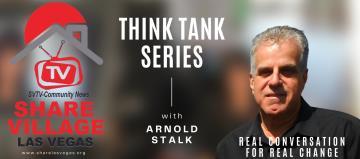











When I was in architectural school in the 1970s, two gentlemen came to our school, The Southern California Institute of Architecture in Santa Monica, California, to talk about the future of computers. I remember them going to their cars to get some equipment to bring in. They set up the equipment in an all-school meeting. They discussed their vision for the application of computers which at that time was so far out as an idea that when they left there were mumblings of how crazy they were.
They described the computer and how it could apply to design in a way that nobody had ever thought of. Their description and presentation included the preparation of design plans, structural drawings, and calculations and a myriad of other disciplines that could plug into the computer. This technology could rapidly produce drawings thereby increasing the efficiency of plans and then later the efficiency of building design through computerization.
When these two gentlemen left, they were literally laughed out of the school by many who were present at the meeting. The two gentlemen that made the presentation were Steve Jobs and Steve Wozniak of Apple computers.
At that time, there were no commercial computers, no Internet, no social media outlets, and no other methods to communicate other than what are now archaic methods of producing graphics, plans, renderings, reports, and other materials
The pace of communication and information sharing across society has increased a thousandfold since those days in the 1970s.“ I am describing this because I think it is important for you to realize how you can apply technology to developing your own organization.
Full disclosure: I did not want to pursue social media when it first came out. I thought it was a waste of time. I was very opposed to pursuing this. How wrong I was!
I am going through this detail to encourage you in the development of your projects to keep an open mind, to pursue your dreams, and in this case keep your mind open to the amazing world of social media and technological advances.

The following are a series of selected graphics in a cross-section of content samples that we typically publish for SHARE Village on our social media outlets.
Currently SHARE Village is on Facebook, Instagram, LinkedIn, YouTube, and Twitter. In addition to social media our digital strategy includes our website www.sharelasvegas.org, our Mobile App which is a directory of community services for those in need of affordable housing, food, medical and mental health services and other vital resources for anyone in need. The SHARE Village Las Vegas Mobile App is available for FREE on both Google Play Store and the Apple App Store.
Aside from these core digital tools there is a myriad of tools available that can be used online as a standalone option or enhanced features that can be added to your own website to increase engagement, raise awareness, and garner support for your cause.
To begin with, I highly recommend a very small group of no more than three people on the selection team. No matter what the composition of your development team is in terms of a “nonprofit” or a “for-profit,” the checklist for the process is essentially the same.
If your project, for example, isn’t affordable housing development, the disciplines are essentially very similar or the same in most cases.
• Legal counsel
• CPA/accountant
• Lender
• Property manager
• Appraiser
• Architect
Building a development team is an essential component and roadmap to any new affordable housing or renovation project.

It is a step in the process that requires a plan of who you’re going to work with, what you need to accomplish your project moving forward, and how you will do this in a carefully calculated approach to team development.
Any team that is assembled, regardless of the discipline, requires for the lack of a better term, “a quarterback” This quarterback can have numerous titles or salutations assigned to them. No matter what you call it, this person is the spokesperson for the team, the guide of the team, the cheerleader of the team, and the taskmaster of the team.
I cannot stress enough how important the preliminary development team selection process is.
• Civil engineer
• Mechanical, electrical and plumbing engineer
• Landscape architect
• Structural engineer
• Licensed general building contractor/project manager
• Interior designer
• Dry utility consultant
• Public works consultant
• Planning consultant
• Building plans and specifications consultant
• Cost estimator
• Environmental engineer
Other project consultants may be helpful on an asneeded bases. This list may vary from project to project so the above list is a generalization of what will be needed. It will change several times from inception to completion of the project.
As I have stated throughout this book, my uppermost recommendation before you start any project is to consult with an attorney who specializes in land use. A land use attorney is invaluable as every site has different conditions, use approvals, density in items, allowable use, and an abundance of other restrictions and parameters that you will need to know before you can move off square one. Over the past 50 years, I have seen it time and time again where nonprofit organizations and for-profit organizations and entities purchase properties without having a single clue as to what can be built on that property. This process should start with looking at your first site, your first building, or whatever your project is about. Having the zoning and entitlement criteria in front of you is absolutely, positively and unequivocally imperative.
Once you have retained competent and experienced land use counsel, you can proceed with your real estate broker or your advisors for the project.
Additionally, once you have the information on what your land is entitled for, its uses and its approvals, you can begin to assemble or hire somebody to assemble a development team that can keep the team on track through the duration of the project all the way up to the certificate of occupancy that you will receive on your project.

It is also vital to begin this process by consulting with the local elected official whose jurisdiction your site is located in. This is extremely critical and imperative moving forward in this process.
It is also imperative to work with local staff such as comprehensive planning department, building safety department, public works department, right of way department, business licensing, and any other
department or division within the municipality that you are working in. Most municipalities will assist you and guide you through this process in a general way in terms of step-by-step pieces to this puzzle.
This is no simple task. I caution you not to try to do this yourself. Too many times I have been brought projects in which nonprofits and corporations have started in house and the only outcome I can assure you is that this will not work.
The problems with zoning, entitlements, use permits, waivers of development standards, zone changes, amendments to master plans, and other entitlement challenges make up a category that adds massive costs to the development of affordable housing in America.

Building strategic partnerships for longevity and success.

Shannon, Jacob and Billy Bob Thornton, Academy Award winner and his band, "The Boxmasters". Shannon talked with Mr. Thornton and left him contact information for Veterans Village. It was a great night.


2018
2021
Children's Campus
village for previously homeless women and women with children. From left to right are Scott Faulkenberry, me, John Moran, Andrew Moran, Richard Steinberg and Leo Magrdichian. If we build it, they will come.

2022
Village Las Vegas Main Campus pictured here with me, Dr. Cornel West and Shannon Kelly at Share Village Main Campus.

2011
Nevada. Pictured here from left to right are Veterans Village Las Vegas representatives Shannon Kelly, Mike Tyson, Jacob Stalk and myself.


2021
Las Vegas Main Campus in Downtown Las Vegas with MJ Maynard, CEO, Regional Transportation Commission of Southern Nevada. We LOVE the RTCSN and all that they do for our US Veterans.


Las
Mr. Anderson was deeply
about homelessness and poverty. It was a great night, and we had a chance to meet with him before his show and talk about the Variety Early Learning Center and our Sancta House efforts. Special thanks to Mr. Anderson for caring.
Share 2019 from left to right with NBA Hall of Famer and superstar Spencer Haywood, NFL retired superstar Steven Jackson at Share Village Las Vegas. With Louie Anderson at his show in Vegas. concerned 2021 WestCare Community Partner breakfast with the amazing Ms. Marilyn Moran "Community Partner Breakfast" for the WestCare Women and housing Share Village 2016 With former World Heavyweight Boxing Champion Mike Tyson at Caesars Forum Shops, Las Vegas,Building a network of supportive services and community supporters will be an essential asset to your organization’s operations. Today’s employer is on a never-ending mission to find creative ways to increase employee engagement. Corporate Social responsibility (CSR) is at the forefront of virtually every business concept in the world.
Invest your time in learning about your local community’s needs and how your local private sector typically supports nonprofits in your area. Armed with data and intelligence you can begin to build a program(s) that is unique and scalable regardless of the business size or business model.
Research your community. Do your homework and create a database of programs and services that are currently available in your community that complement or enhance your mission. Working with organizations that are already offering similar services will enable you to streamline and strengthen your own programs. Be a team player. Donor dollars are tight in today’s economy. By working with existing organizations rather than attempting to compete with them the community achieves more. When potential donors witness a culture of genuine goodwill they can then visualize how their financial support can have a deeper impact and are much more likely to choose to invest their donation dollars.
Build a culture of social responsibility. Engaging with local businesses and industries that have a desire to build or strengthen their social responsibility strategy programs is a win-win. Incorporating an entity’s existing strategy into your own operations opens the doors to employee interaction with your nonprofit. These interactions can include volunteer opportunities, peer-to-peer fundraising programs, and donation drives for tangible products, for example food, clothing, or hygiene supplies.
Leadership buy-in is key! In a world that is seeking inclusive opportunities that encourage human creativity and results that are quantifiable, you’ll need to be prepared to offer examples and statistics that demonstrate measurable results and impact. With leadership buy-in you’ll be able to maximize employee giving and volunteer activities by tailoring programs that fit their specific needs.

Over the years I have met and worked with thousands of people, this is just a partial list of some of those incredible people and organizations I have had the pleasure of working with since 1974.
My apologies in advance if I have missed anyone.
100 Black Men of Las Vegas
Above The Crust
Aetna / CVS
Albertson's
AmeriCorps
American Military University Volunteers
American Red Cross
Anthem Medicaid/Medicare
Aria Landscape Architecture
Asian Community Development Council
Assistance League Las Vegas
Bagelmania
Bank of America
Blue Star Mothers
Bombard Electric
Bombard Mechanical, LLC
Breslin Builders
Builders United
Caesars Foundation
CAL PLY
Capriotti's
CAREPRO Home Health Care
Carpenters Union
Casa De Luz
Casper Construction Las Vegas
Catholic Charities
Central Church
Choice Leadership
Christine G Schulze Trust
Christine G Shows Foundation
City of Henderson
City of Las Vegas
City of Las Vegas Courtyard
City of North Las Vegas
Clark County Social Services
Clearinghouse CDFI
Coca-Cola Bottling of Southern Nevada.
Community Counseling Center of Southern Nevada
Compassion Cares Hospice
Conrad N. Hilton Foundation
Cosmopolitan Hotel & Casino
Cracker Barrel
Creech AFB Volunteers
Dal Tile
Desert Parkway Behavioral Health
Desmond & Julie Stevens
Downtown Alliance
Downtown Cares
DRI Disaster Relief Foundation
DTAC – Las Vegas Metropolitan Police Department
Dunkin Doughnuts
Dunn Edwards Paints
Eagle Scouts (Boy Scouts of America)
East Valley Family Services
Einstein Bagels
ELKS USA
EZ Pawn
Findlay Automotive Group for the Blind and Visually Impaired
Ford Motor Company
Forte
Fox 5 Las Vegas
Freedom House Behavioral Health
Friedman Family Foundation
Glass House counseling agency
Golden Rainbow
Goodwill of Southern Nevada
Grove Madsen
H&E Equipment Services
Habitat for Humanity.
Hansen Mechanical
Heaven Can Wait Animal Sanctuary
Help of Southern Nevada
HELP USA
Henderson Police/Fire Department
HIS Flooring
Home Depot Foundation
Homeless Courtyard
Hope for Prisoners
Howard Poe
HUDVASH
Ideal Supply Company, Inc.
IFA (International Franchising Association) Volunteers
J&R Flooring
Jarmillo Landscaping
Jewish Family Service Agency
Joe's Seafood
John A. Martin & Associates JAMA
John Fogerty Foundation
Kelly Pipe
Kline Veterans Memorial Foundation
Knights of Columbus Las Vegas Chapter
Labor and Local Union 869
Las Vegas Awning
Las Vegas Fire & Rescue
Las Vegas Metropolitan Police Dept.
Las Vegas Rescue Mission
Las Vegas Urban League
Lawyer Trane
LOWE's
Lutheran Social Services
Majoca Plumbing Heating Industrial Supplies
Martin Harris Construction
Medical Reserve Corp of Southern Nevada
MGM Grand Foundation
Mobile Crisis Intervention Team
More Outreach Team
Moser Architecture Studio
NBA Summer League
NBHS
Nedco Supply
Nevada Department of Health and Human Resources
Nevada Division of Veteran Services
Nevada PAC Coalition
Nevada Partners
NFL Superstar Steven Jackson
Noble Home Loans
NV Energy
Operation Tiny Home
Opportunity Village
Oxford House Sober Living
Papa Johns
PENTA Building Group
Pinkbox Doughnuts
Pisos
Port of Subs
Power Plus
Public Guardian’s Program
Rape Crisis Center of Las Vegas
ReBar
Rebel Vets
Renewals By Andersen
Repurpose America
Resorts World Las Vegas
Reyes Coca-Cola Bottling
Rick's Restorations
Rio All-Suite Hotel & Casino Las Vegas
Roseman University
Rotary Club of Southern Nevada
RSVP Party Rentals
RTC Southern Nevada Regional Transportation
Commission
Rugby
Safe Nest
Samaritan House
Sana Behavioral Health
Sands Cares / Sands Expo
Schneider Electric
SHANGO Las Vegas
Shaw Lindquist
Sherwin Williams
Shield of Hope
Sierra Sage Recovery Services
Silver Crest Senior Living – Salvation Army Housing
SNAMHS
So. NV Regional Transportation Commission
Southwest Gas
Spectrum Brands
Standard Plumbing Company
Starbucks
State of Nevada Bureau of Services
Station Casinos
Steet Dogz
STO Design
SW Carpenters Union
TEAM Construction
TGJ Painting
The BAR
The Center
The Crossing Church
The Just On+A132e Project
My good friend, colleague and Las Vegas Icon, Mr. John Moran, Jr. We are partners for the benefit of good helping people behind the scenes with WestCare and with Veterans Village with housing and intensive supportive services. I have learned so much from working with him, and I am so blessed to know him.

The Las Vegas Latin Chamber of Commerce
The Las Vegas Metro Chamber of Commerce
The Moon Ridge Foundation Group.
The Salvation Army
The Shade Tree
The Venetian Hotel, Las Vegas, Nevada
Three Square Regional Food Bank/Feeding America
T-Nick
Touro University
Trader Joe's
Tuscany Suites & Casino
U.S. Department of Housing and Urban Development
United States Veterans Administration
United Way of Southern Nevada
University Medical Center
UNLV Alumni Veterans Club
UPS Foundation
Urban Underdogs
US Vets
USO Las Vegas
VA of Southern Nevada
Valley Auto Mall
VAREP (Veterans Association of Real Estate Professionals)

Vegas Electric
Veterans Treatment Court, Justice Court, Las Vegas
Township
VFW Post 10047
Victims of Crimes Program
Vons
WellCare
WestCare Nevada
Westgate Hotel & Casino
White Cross Market
Whole Foods
WIN Court
Windermere Real Estate
Windustrial
Women's Impact Network
Wynn Design & Development
Wynn Las Vegas
Young Men's Service League
ZAPPOS
2012 With Ms. Paula Martel and Captain Rob Tosatto, Medical Reserve Corps.2022 Central Christian Church, pictured here from left to right are Nick Cope, Business Development: me: Shannon Kelly, Co-Founder, Share Village Las Vegas and Katie Claessens, Outreach Coordinator. Together we feed tens of thousands of people every year. We love partnering with this amazing organization because we share the mutual and specific goal in partnership with Three Square Regional Food Bank of feeding people in need.


With special thanks in memoriam, Thomas P. O’Neill, Architect. Gone from this world too soon. Pictured here at one of our Christmas parties at Veterans Village. Tom and I go back to 1995, working together on many commercial, residential and industrial projects through the years.
2019 Thank you VAREP and its President; Jimmy Vega and Merri Perry for all that you're doing to improve Veterans Village.
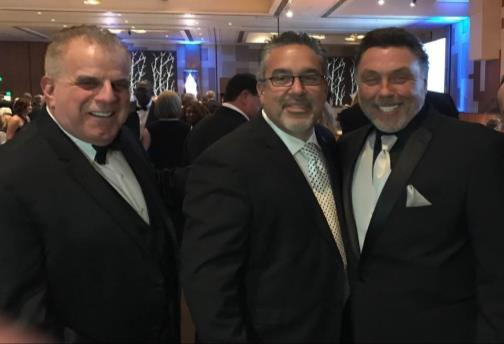





I believe he was a genius. A graduate from University of California at Berkeley, he practiced architecture for decades in Southern Nevada and was with us from the first day that we opened Veterans Village Las Vegas.
Tom was always there when I started a homeless project. He was more than a colleague. He was part of our family and one of my very best friends.
2019
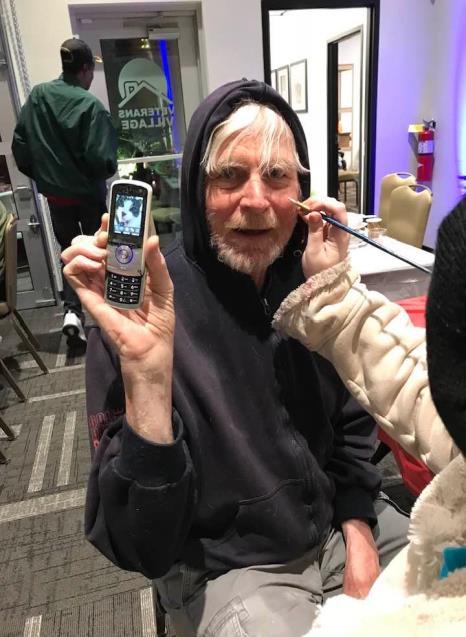














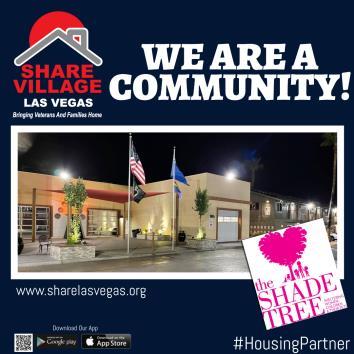
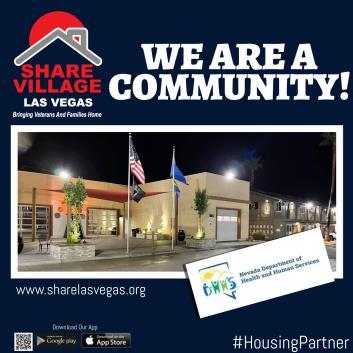







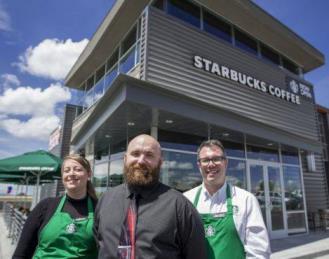



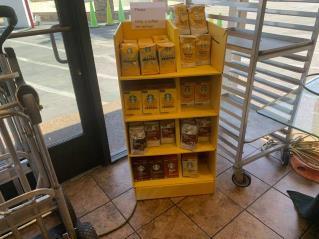

Bringing people together that share a common desire.


Extra special thank you goes out to our staff and our “SUPER VOLUNTEERS.”
Volunteers are our version of first responders. Putting themselves out there day to day or in the middle of a crisis has taught me what true selfless humanitarianism is.
God bless them.
Our facilities wouldn't be possible without the generous contributions of volunteer labor! Thousands of devoted individuals have put in countless hours to build and refurbish our spaces - a true testament to their commitment and resilience.











 2012 Home Depot Foundation Extreme Makeover Volunteers
2014 Nellis Air Force Base Property Maintenance Volunteers
2012 Home Depot Foundation Extreme Makeover Volunteers
2014 Nellis Air Force Base Property Maintenance Volunteers
To kick off the 55th IFA Annual Convention at MGM Grand Hotel in Las Vegas, NV, the International Franchise Association Educational Foundation in collaboration with the VetFran Committee and Roark Capital Group, hosted the “Franchising Gives Back” volunteer event benefitting Veteran’s Village of Las Vegas. It took place Saturday, February 14, 2015, with 115 volunteers.
Roark Capital Group has partnered with the Foundation to launch a year-long, nationwide celebration of community leadership and the countless ways that franchise businesses support their local communities.


Volunteers were transported from the MGM Convention Center to Veteran’s Village, where they chose between a mix of handson projects that included more physical labor such as painting, cleaning, power washing and landscaping or an assembly project putting together toiletry and emergency kits for the residents of Veteran’s Village.




2021
boxes
clients. We distribute thousands of these groceries a week to people who are in need. Thank you all!
our
2015 Volun-tourism at work! 2016 It is volunteers that rock in the USA! Crossing Church volunteers, "Make a difference Day “ 2022 A HUGE SHOUT OUT and thank you to Renewal by Andersen who removed aging windows and replaced them with new windows at our share Village Las Vegas #2 in Downtown Las Vegas. 2021 SHARE Village Las Vegas is so very grateful to Mr. Ross Bryant and special thanks to Amy Lynn Frost and so many UNLV Rebel Vet volunteers.2021 The Venetian Hotel/Sands Cares. Packing food boxes for our pantry clients. We distribute thousands of these groceries a week two people who are in need. Thank you all!




RAIDERS IN THE HOUSE:@ SHARE VILLAGE LAS VEGAS #2 with Trent Brown, offensive tackle (Big guy in photo!!): Hunter Renfrow, Wide Receiver and the rest of us in photo in the plaza at our container house village. Thank you to the Raiders for the donated waters and SPECIAL THANK YOU to Julie Caine from Gaudin Ford for putting all of this together!



2017 We were honored to meet Lionel Richie. We talked about Veterans Village Las Vegas and invited him to tour our residences. It was a great moment in our history carrying the message of honoring our US Veterans
 2021 The Crossing Church volunteers
2021 Rebel Vets volunteers
2021 Southwest Council of Carpenters, Las Vegas. Kitchen and bath extreme makeover event.
2020 LAS VEGAS
2019 Jet Velocity All-Stars Jason Ebs and Janea Ebsworth with Arnold Stalk and Shannon Ross Kelly at SHARE Village Las Vegas.
2021 The Crossing Church volunteers
2021 Rebel Vets volunteers
2021 Southwest Council of Carpenters, Las Vegas. Kitchen and bath extreme makeover event.
2020 LAS VEGAS
2019 Jet Velocity All-Stars Jason Ebs and Janea Ebsworth with Arnold Stalk and Shannon Ross Kelly at SHARE Village Las Vegas.





Let me make it clear though: without the government's involvement and the bureaucracy, we would have nothing to work with. It is an important yet flawed process that needs to be worked through carefully and meticulously.
Homelessness is and should always be a nonpartisan issue. Strengthening relationships with key elected officials is key in the mission to end homelessness.

I consider those who we know as “bureaucrats” as being strategic partners. I utilize them and make friendships and create colleagues in a way that is not the norm. What I mean by that, is that the bureaucracy is a necessary evil.
In a perfect world, funding from private foundations and philanthropic support of the mission to end homelessness would be enough. However, in order to establish sustainable funding for development, advocacy is important in that these elected officials will be the names and faces that carry your mission to the public sector.
Grassroots programs often lack the skills, tenacity and temerity needed to navigate the deep political waters that contain the coffers where grants and other funding dollars lie.
I have given this quite a bit of thought in fact. The bureaucracy is an integral part of any government on the planet. When it comes to the homeless and homelessness, the bureaucracy plays a major part in every aspect of decision making, from funding to citizen input to elected officials' next elections, and a myriad of other things that intersect in an already confusing and dysfunctional social dilemma.
Understanding the political process outweighs partisan issues. Whatever you do with the governmental process, make sure that you plug in and try and keep your organization in first place in terms of connectivity and in terms of making sure that things get done in an orderly fashion.
Understanding at what level(s) city, county, state and federal support of your mission is funded will most likely garner the desired outcome.
Be careful!


This is a key area of importance in your endeavor to start up a nonprofit organization, maintain political contacts, and to ensure that you and your organization are well covered with elected official relationships

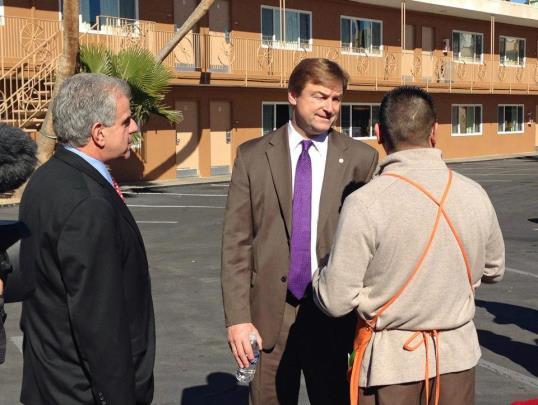
This is a multi-layered process that has to be carefully planned, plotted and based on (1) Politics constantly change, (2) Elected officials constantly change and (3) The political landscape constantly changes. The only thing that doesn’t change is change itself.
The three levels of political support are of course federal, state, and local elected officials. This is a skill that you cannot learn in school. This is a skill that you can develop and must develop over time. It is important that you surround yourself with people from both sides of the aisle and everyone in between. At the time of writing this book the political landscape that exists in 2022 is a roller coaster on its finest day. It is an impossibility to focus on one particular issue such as homelessness because homelessness comes in and out of the news cycle almost daily. I can honestly say that since 1974, not much has changed on the issue of homelessness and how we treat people that live on the streets. They can pin all the fancy names they want such as house challenged, food deserts and other newfangled clichés that they come up with, but the fact remains that homelessness and poverty are issues that will not go away tomorrow. It must be addressed in a master plan type of way.
Make sure that you explore the issue of political contacts to the fullest extent and that you’re able to ally yourself with winners and people that are there for the right reasons. Always make sure that you keep your organization in first place and that you take the high road and do not take any political sides. Your journey to happiness on this issue will be much smoother.
Good luck with this one.
Former United States Congressman Joe Heck Former United States Senator Dean Heller Former City of Los Angeles Mayor Tom Bradley
With U.S.
Congressman Dr. Joe Heck after my testimony at the U.S. House of Representatives, Committee on Financial Services, "Housing for Heroes: Examining How Federal Programs Can Better Serve Veterans."

Congressman Heck invited me to testify. This was an honor to be of service.









 At United States Senator Dean Heller's office with our now longtime colleague and friend, Ms. Scarlett Doyle, Shannon Kelly, SHARE Village Las Vegas Co-Founder, and Jacob Stalk, SHARE Village Las Vegas, Board Member.
Arnold Stalk, Founder SHARE Village Las Vegas with former United States Senator Dean Heller.
At United States Senator Dean Heller's office with our now longtime colleague and friend, Ms. Scarlett Doyle, Shannon Kelly, SHARE Village Las Vegas Co-Founder, and Jacob Stalk, SHARE Village Las Vegas, Board Member.
Arnold Stalk, Founder SHARE Village Las Vegas with former United States Senator Dean Heller.

2021 State of Nevada Attorney General Aaron Ford, me, Shannon Kelly, Owner/Partner, Share Village Las Vegas, Robyn Gerber-Garcia, Executive Director, “ Worth Fighting For” and Judge Cynthia S. Leung, Department 1, Las Vegas Municipal Court.


Dean Heller and Share Village Las Vegas Co-Founder, Shannon Kelly.





Michelle Fiore and Las Vegas Mayor Carolyn G. Goodman.

2019 US Veterans
meeting led by United States Senator and candidate for President of the United States, Elizabeth Warren at Bonanza Hugh School, Las Vegas, Nevada.
 With Las Vegas City Councilman Stavros Anthony at our Veterans Village #2 grand opening and ribbon cutting ceremony, 2016.
2018 With United States Senator Catherine CortezMasto and her staff discussing a plan to secure VA residents at our 88 bed Veterans Village Las Vegas Assisted Living residence. It was a GREAT and productive plan-of-action meeting.
With Mr. Robert Herbert, Brigadier General, Senior Policy Advisor & Director of Operations for US Senator Harry Reid, and Ms. Shannon Kelly, SHARE Co-Founder in Washington , DC., discussing replicating Veterans Villages across the USA, 2014.
With former Nevada Governor Kenny Guinn.
At SHARE Village Las Vegas with Julian Castro, Obama administration HUD Secretary.
2021 SHARE Village #2 Pictured from left to right is Jacob Stalk, Share Village Las Vegas Board member, former United States Senator
2018 At our Veterans Day Celebration and opening of our new Veterans Village Women & Family Campus is from left to right, Blake Boles representing US Senator Jacky Rosen, US Congresswoman Susie Lee, State of Nevada Secretary of State Barbara Cegavske, Las Vegas City Councilwoman
With Las Vegas City Councilman Stavros Anthony at our Veterans Village #2 grand opening and ribbon cutting ceremony, 2016.
2018 With United States Senator Catherine CortezMasto and her staff discussing a plan to secure VA residents at our 88 bed Veterans Village Las Vegas Assisted Living residence. It was a GREAT and productive plan-of-action meeting.
With Mr. Robert Herbert, Brigadier General, Senior Policy Advisor & Director of Operations for US Senator Harry Reid, and Ms. Shannon Kelly, SHARE Co-Founder in Washington , DC., discussing replicating Veterans Villages across the USA, 2014.
With former Nevada Governor Kenny Guinn.
At SHARE Village Las Vegas with Julian Castro, Obama administration HUD Secretary.
2021 SHARE Village #2 Pictured from left to right is Jacob Stalk, Share Village Las Vegas Board member, former United States Senator
2018 At our Veterans Day Celebration and opening of our new Veterans Village Women & Family Campus is from left to right, Blake Boles representing US Senator Jacky Rosen, US Congresswoman Susie Lee, State of Nevada Secretary of State Barbara Cegavske, Las Vegas City Councilwoman
With Las Vegas City Councilman Ricki Barlow and Eric Strain, AIA at our Strong Cities, Strong Communities (SC2) celebration







2015 With former State of Nevada Assemblywoman and United States Congressional candidate Lucy Flores at our Strain/Stalk Strong Cities, Strong Communities (SC2) Celebration.

 At KNPR Studios with Tick Segerblom, Brian Knudsen and Downtown Joe.
With Michael J. McDonald, chair of the Republican Party of Nevada in Washington DC.
With former Vice President Mike Pence at Nellis Air Force Base, Las Vegas, NV.
With HUD Secretary Dr. Ben Carson @SHARE VILLAGE LAS VEGAS FKA Veterans Village , Las Vegas, NV.
With Beto O’Rourke attending our Veterans Roundtable/Town Hall yesterday. It was amazingly powerful meeting with great participation from our Veterans!
2023 At Inaugural dinner for State of Nevada Governor Joe Lombardo. Pictured here from left to right is SHARE Village Las Vegas Board members Jacob Stalk, me, Las Vegas Councilwoman Victoria Seaman and Shannon Kelly, cofounder, SHARE Village Las Vegas. It was a great night. Thank you, Councilwoman Seaman.
2013 With U.S. Congressman Steven Horsford & Veterans Village. What an honor it was to meet and talk about Veterans issues with him
At KNPR Studios with Tick Segerblom, Brian Knudsen and Downtown Joe.
With Michael J. McDonald, chair of the Republican Party of Nevada in Washington DC.
With former Vice President Mike Pence at Nellis Air Force Base, Las Vegas, NV.
With HUD Secretary Dr. Ben Carson @SHARE VILLAGE LAS VEGAS FKA Veterans Village , Las Vegas, NV.
With Beto O’Rourke attending our Veterans Roundtable/Town Hall yesterday. It was amazingly powerful meeting with great participation from our Veterans!
2023 At Inaugural dinner for State of Nevada Governor Joe Lombardo. Pictured here from left to right is SHARE Village Las Vegas Board members Jacob Stalk, me, Las Vegas Councilwoman Victoria Seaman and Shannon Kelly, cofounder, SHARE Village Las Vegas. It was a great night. Thank you, Councilwoman Seaman.
2013 With U.S. Congressman Steven Horsford & Veterans Village. What an honor it was to meet and talk about Veterans issues with him




One of the proudest moments of my life, pictured here with First Lady, Michelle Obama.

The date was January 12, 2016, when Ms. Cynthia Dias, United States Navy Veteran and I were invited to The White House.
Ms. Dias was honored to sit with The First Lady at President Obama's Final State of the Union Address.
It was a 72-hour whirlwind of representing our US Veterans and our City of Las Vegas, NV.
What came out of this was briefing meetings with The White House staff, The HUD Secretary, The VA Secretary, US Congresswoman Dina Titus, US Senator Dean Heller and US Congressman Joe Heck's staff directly helping us with our new Veterans Village #2 residence in Downtown Las Vegas.
Special thanks to Las Vegas Mayor Carolyn G. Goodman for initiating these meetings.
I am blessed.







I would like to take a moment and thank Ms. Cynthia Dias, UNITED STATES NAVY Veteran and resident at Veterans Village Las Vegas for the courage, determination and her willingness to be an advocate with me for US Veterans and Veterans Village Las Vegas during our trip to meet in Washington, D.C.. Thank you, Ms. Dias, you are an amazing American!



2018 This was at my meetings at The White House with Ms. Sarah E. Makin-Acciani, Deputy Assistant to the President and Director of Public Liaison and Intergovernmental Affairs, Vice President Mike Pence. Ms. Makin-Acciani is a Patriot, friend to our US Veterans and friend to Veterans Village Las Vegas.


Special thanks to United States Congresswoman Dina Titus and staff members and United States Veterans Terry Care and Daniel Carranza for your continued assistance at SHARE Village Las Vegas.
2017
& Senior HUD management @ HUD Headquarters in Washington, DC. Veterans Village Las Vegas continues our quest to make sure our US Veterans are treated with respect and dignity.



2016 Veterans Village Founder Arnold Stalk at U.S. Senator Dean Heller's office with Skarlett Doyle and Cynthia Dias. Great meeting advocating for all U.S. veterans.

 2018 Office of the Secretary US Department of Veterans Affairs, Washington DC with from left to right, Michael J. Kraycinovich, Associate Chief Counsel: James Byrne, Acting Deputy Secretary: me-and Anthony Love, Senior Advisor & Director, Community Engagement National Homeless Programs Office.
White House staff
2018 With White House Advisor and Veterans Village Las Vegas supporter Corey Lewandowski.
2016 With HUD Secretary Julian Castro discussing Veterans Village
2018 Office of the Secretary US Department of Veterans Affairs, Washington DC with from left to right, Michael J. Kraycinovich, Associate Chief Counsel: James Byrne, Acting Deputy Secretary: me-and Anthony Love, Senior Advisor & Director, Community Engagement National Homeless Programs Office.
White House staff
2018 With White House Advisor and Veterans Village Las Vegas supporter Corey Lewandowski.
2016 With HUD Secretary Julian Castro discussing Veterans Village
Democratic presidential candidate and Congresswoman Tulsi Gabbard visited Veterans Village on May 11th for a tour of Veterans Village and a veterans townhall to meet the local public, listen to their stories and answer their questions.



After Founder of Veterans Village, Dr. Arnold Stalk gave Tulsi the grand tour, the room flooded with people and became standing room only with everyone waiting to listen to Tulsi. Mike Kelly, Chair of Nevada Democratic Veterans and Military Family Caucus (NDVMFC) first welcomed the congresswoman for taking the time for the townhall. Whilst recognizing the majority of veterans in the room he told Tulsi, “We have higher expectations because you’re one of us, you share our hopes, our dreams, our anxieties and the fears that we have. You’ve been there, you’ve been in the sock just like many of us have.”
Tulsi started by talking about her own service and the values that doing service brings. “We [in the military] come from all parts of this country. Every race, ethnicity, orientation, religion, all walks of life coming together, and we wear that same uniform and that same flag on our shoulder. Each of us made that commitment to put service above self, willing to put our life on the line on service to our country; It is that focus on that mission of service, those values of service above self, that I seek to bring to the White House.”
One of the first people to speak was from Caesar Lopez, who asked Tulsi to sponsor a bill for him, “I been deported for six years, I don’t have any ID, the government took everything from me; Since I don’t have any protection at all I’m asking if you could sponsor a bill for me.” He then tells everyone the day he got deported, “I always considered myself American, I grew up In America. When I’ve been called wetback and I’ve been called everything, it never bothered me. What bothered me was on January 16, 2013, when the judge told me I was a threat to the nation, that I was a criminal and that I was a terrorist and that is why he was removing me from the country; For them to tell me I’m not an American and that I’m a terrorist and then expel me from my country, it’s the worst thing anyone ever did to me.” Tulsi responded saying she knew the Governor of New Mexico, “I know the governor of New Mexico, we’ve served together in congress, and I look forward to meeting her and to work with her to do all we can to help you.”
Congresswoman Tulsi Gabbard and Dr. Arnold Stalk, Founder SHARE Village Las Vegas. Tulsi Gabbard receives flag from Dr. Arnold Stalk and Shannon KellySu Phelps, President of Society of Military Widows Chapter 34, asked Tulsi about her stance on the Survivor Benefit Plan (SBP) and Dependency and Indemnity Compensation (DIC) offset. “I understand that our President just voted down for us, but I do believe our SBP is from our husband and purchased for their wives. The DIC is for the widows, who deserve that benefit from their husband, but at this moment all the widows who have DIC and or SBP but couldn’t receive the benefits because they offset that. How would you stand for that?”

Tulsi’s responded, “I would not stand for that. The laying down of one’s life in service to our country is a sacrifice made by that individual, their family and loved ones. When we see what happened now, where once again there’s not enough money to make it so those gold star families and those gold star widows to get the benefits they earned through that sacrifice and service from their loved one.”



To end the event Dr. Arnold Stalk and Mrs. Stalk present a U.S.A. flag to Tulsi as a gift.
 Kelly Miller, Councilman Isaac Barron, Assemblywoman Britney Miller, Mikey Kelly, Chair of NDVMFC, Congresswoman Tulsi Gabbard, Vic Rivero, Communications Officer of NDVMFC, and Greg Fleming, NDVMF
Congresswoman Tulsi Gabbard
Kelly Miller, Councilman Isaac Barron, Assemblywoman Britney Miller, Mikey Kelly, Chair of NDVMFC, Congresswoman Tulsi Gabbard, Vic Rivero, Communications Officer of NDVMFC, and Greg Fleming, NDVMF
Congresswoman Tulsi Gabbard
Veterans Village welcomes all 2020 presidential candidates to take a tour of the Veterans Village facility and to participate in a Town Hall organized by Mike Kelly, President of Nevada Democratic Veterans and Military Families Caucus to speak to veterans and local media. On Friday, July 12th, the Nevada Democratic Veterans and Military Families Caucus presented New York Senator Bernie Sanders Town Hall to veterans from Veterans Village and members of the media. Among the attendees was Assemblywoman Brittany Miller.


One of the first questions was from Su Phelps, “Senator Sanders, I’m the President of Society of Military Widows Chapter 34; I’d like to talk about one thing that’s been overlooked since 1972, it’s benefits for widows. There’s a bill called S622 and Dependency and Indemnity Compensation (DIC) offset. It’s a right our husband earned for us, and the Survivor Benefit Plan (SBP) is the insurance that our husband purchased for us; so, as a widow if we qualify for both of them, why do we have to be deducted DIC from the SBP.”
Bernie Sanders: “Su raises a very important question I should’ve talked about earlier and that is, when we talk about veterans' issues, you’re not just talking about the veteran, you’re talking about the entire family; When we are talking about veterans needs, Su was right in saying, we got to be looking at family needs for the veterans”

From a veteran in the audience, “My question to you is what needs to happen at the end of the month debate, what needs to happen to bring veterans issues to the forefront. What can you do, because I’m conscious of your record; but when you got millions of people watching the debates, that’s not the time to use the veterans name to get a cheap pop from the audience. I think it’s a time to bring forward the many issues on homelessness, education, medical for veterans exclusively.”
Bernie Sanders: “The debates are a kind of a crazy format, where you got 45 seconds to answer, but I think the more important point to find is the issues we’re talking about today, have got to be addressed, dealt with and discussed not only in a democratic debate, but on the floor of the congress.”
Dr. Arnold Stalk, Founder of Veterans Villages thanked the Senator, “You’ve invigorated this group Senator let me tell you; what I wanna say is what I say everywhere I go, there is a solution to this problem. It’s complex, but there is a solution, with us it’s five steps, it’s emergency housing, transitional housing, permanent and rental housing and assisted living; there’s no reason, no reason in the world our veterans should be suffering like this and a forum like this is priceless to us; Thank you”
 Veteran attendees with Founder of SHARE Village Dr. Arnold Stalk, Mike Kelly President of Nevada Democratic Veteran and Military Families Caucus and SHARE Village staff.
Senator Bernie Sanders
Veteran attendees with Founder of SHARE Village Dr. Arnold Stalk, Mike Kelly President of Nevada Democratic Veteran and Military Families Caucus and SHARE Village staff.
Senator Bernie Sanders
Collaborating with your mayor is a wonderful way to make positive changes in your community. By getting to know them, sharing your ideas, and staying in communication, you can work together towards a shared goal of making your community a better place for everyone who lives there.
Mayors are often open to hearing from their constituents about the issues that matter most to them. As a community developer, I have had the unique experience of collaborating with some extraordinary leaders in both California and Nevada.
Working with former city of Los Angeles Mayor Tom Bradley and the Los Angeles Community Redevelopment Agency, an independent agency dedicated to revitalizing and refurbishing economically challenged areas of Los Angeles, was truly a memorable experience. As an iconic Angeleno, he had the rare gift and ability to build bridges between opinions, find common ground and make things happen. His presence gave off an aura of reassurance and commitment to the people of Los Angeles.

His ideas and reforms embodied President Lyndon Johnson's War on Poverty, underscoring the importance of social initiatives to improve the lives of all citizens. He was not afraid of tackling issues such as fighting for healthy food access in under-resourced communities as well as securing affordable housing for low-income families.
Once we completed the conversion of the Valley Shelters Motel in North Hollywood, I had the opportunity to work directly with the Bradley administration. The timing was ideal as I was no longer working for the CRA/LA. Bradley and his staff were amazingly committed to stopping homelessness in its tracks. In those days everybody was a beginner. We were all working our way through the processes through different disciplines, connecting the dots and joining together for the common cause of ending homelessness
It was quite literally an experiment as everyone involved had dealt with homelessness but never in such a comprehensive way.
It is no wonder that Tom Bradley is considered one of the major political icons in recent times his dedication to aiding those in need has enabled countless individuals and communities to improve their living conditions over the years.
I will never forget Mayor Tom Bradley; he was a tremendous influence in both my personal and professional life.
The year was 1989. I received a call from Jan Laverty Jones who had just become the first elected female mayor in the history of Las Vegas, Nevada. We talked about homelessness and the underlying issues that are linked to homelessness such as housing people that are mentally ill, people with special needs, and stopping homelessness before it spread out of control.
1988 With former Los Angeles Mayor Tom Bradley, former Los Angeles County Supervisor Ed Edelman at Chernow House Homeless Family Shelter along with many other supporters.Jan Laverty Jones was is an immediate inspiration to me and I saw a path to replicate what I was doing Los Angeles and other cities across the United States.
In a rare moment of unity, The City of Las Vegas and Clark County, Nevada retained my architectural and planning firm to conduct a year-long study in homelessness. To be more specific It was a study on housing affordability with an emphasis on the homelessness problem. We hosted a series of workshops at the United Way SN and Nevada offices that were open to the public. These workshops provided valuable insight through public comments and interviews with experts. The findings of our research helped identify the most needed services for those experiencing or facing homelessness in the Las Vegas valley. As part of our contract with The City of Las Vegas and Clark County these findings were compiled and shared with both the city and the county in a report titled Mobilized Assistance and Shelter for the Homeless. Upon review of the findings of our research both entities unanimously agreed and from thus the M.A.S.H. project was born.
It was a lengthy battle which eventually ended up in Washington DC with the Clinton administration, Henry Cisneros, who served as President Bill Clinton’s HUD Secretary 1993-1997 and, subsequently Andrew Cuomo. My work with Mayor Jones continued and from 19931995. I served the city of Las Vegas as Housing Chief and in 1994 SHARE was formed. Following my tenure with the city, my work continued resulting in many developments that served and continue to serve the needs of the homeless, those with special needs, senior citizens, and veterans.
In 1999 the leadership in the city of Las Vegas changed as Oscar Goodman was elected as Mayor. Along with the new leadership came a new vision, a vision that brought a new level of vitality and development to the downtown Las Vegas area. In October of 2001, a trust fund was set up by the city initially consisting of $100,000.00 in federal money to serve as a single funding mechanism for homeless services. The trust fund would also serve to avoid the duplication of services.

1995 in downtown Las Vegas at The Shade Tree Shelter (Original building) with former Las Vegas Mayor Jan Laverty Jones.

In those days, there were no awards, honors or fancy commissions. We battled to get the initial funds from Washington, DC for what are now St. Vincent's Plaza, The Shade Tree, Salvation Army. Las Vegas M*A*S*H, Help USA, Christmas in April, Habitat for Humanity, SHARE nonprofit organization, Parson's Place and many other organizations helping people in need.
Thank you, Mayor Jones, for fighting for the tough causes and standing up for what you believed in.

In 2011 the gavel would change hands again as Mayor Oscar Goodman would become the only mayor to swear in his spouse as his successor. Prior to being sworn in as the Mayor of Las Vegas, Carolyn G. Goodman was best known for the founding of the Meadows School in 1984 for Pre-k through 12th grades. The Meadow School was my first opportunity to work with her one-on-one on the initial protype of what is now known as the SHARE Village Las Vegas Container Home. Today Mayor Carolyn G. Goodman continues to champion improvements for inner-city schools and is a strong advocate for improving access to services for the homeless and moving people to a path of self-sufficiency.



Las Vegas Mayor Carolyn G. Goodman is my Mayor! Without her, we would not have one single affordable housing unit open, we now house over 500 people a night at our three SHARE Village Las Vegas campuses. She was there for me over eight years ago when I opened Veterans Village, and I am always there for her and former Las Vegas Mayor Oscar B. Goodman in whatever they do.
 2021 Las Vegas City Hall, Jacob Stalk, SHARE Village Las Vegas Board Member with Las Vegas Mayor Carolyn G Goodman, Myself and Shannon Kelly, Co-founder, SHARE Village Las Vegas, discussing affordable housing and the future of our city.
2021 Las Vegas City Hall, Jacob Stalk, SHARE Village Las Vegas Board Member with Las Vegas Mayor Carolyn G Goodman, Myself and Shannon Kelly, Co-founder, SHARE Village Las Vegas, discussing affordable housing and the future of our city.
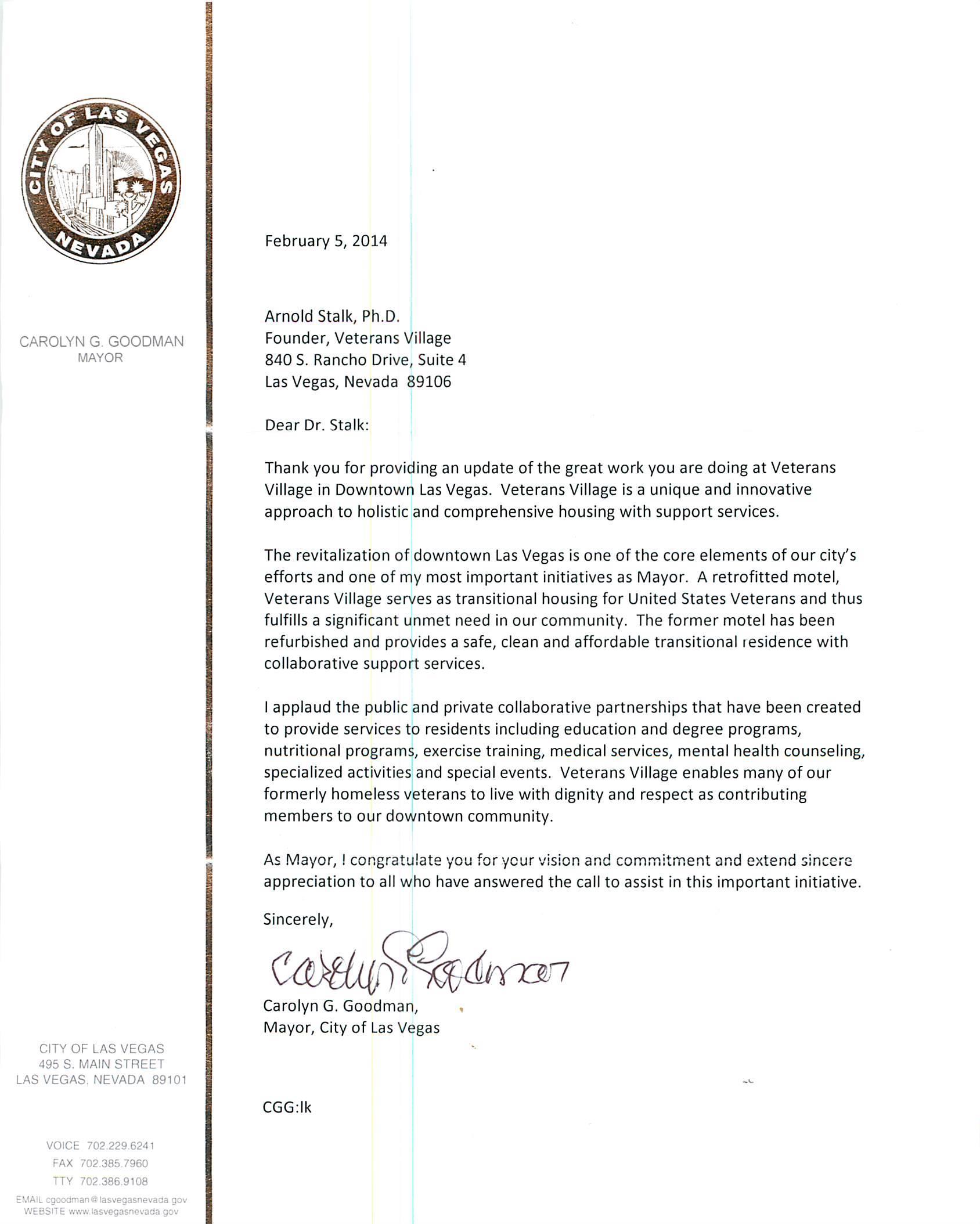
As you begin your journey to work with the leadership in your own community, I encourage you to also work with the leadership in your surrounding townships. SHARE has enjoyed working with city of Henderson mayor Debra March and city of North Las Vegas John Lee on several community collaborations. It is only when we truly embrace the spirit of community, teamwork, and collaboration that we begin to experience a series of small successes that lead to big wins for people in need and begin the process of ending homelessness in America.



 2017 City of Henderson Mayor-Elect Debra March a longtime friend of the Veterans Village Las Vegas family
2020 City of North Las Vegas Mayor John Lee
2012 Stalk, Founder, SHARE Village Las Vegas, with City of Las Vegas Mayor Carolyn G. Goodman and former City of Las Vegas Mayor Oscar Goodman at Veterans Village Las Vegas Home Depot Foundation Donation event.
2017 City of Henderson Mayor-Elect Debra March a longtime friend of the Veterans Village Las Vegas family
2020 City of North Las Vegas Mayor John Lee
2012 Stalk, Founder, SHARE Village Las Vegas, with City of Las Vegas Mayor Carolyn G. Goodman and former City of Las Vegas Mayor Oscar Goodman at Veterans Village Las Vegas Home Depot Foundation Donation event.

Working with the neighbors and NIMBY-ism’s
(Not In My Backyard Syndrome)

When I first started out in Los Angeles one of the primary things, I learned was to study the neighborhood in which you want to build. Many times, I found myself working like a reporter or a journalist. Doing your homework on neighborhoods is essential.


Step #1
• Start out with historic research of the city that you will be building in.
• The neighborhood that you will be building in.
• The site you’ll be building on.
This type of homework is essential before starting anything.
2017 Respecting the people who live in our city: Passing out neighborhood meeting invitations door to door for an upcoming neighborhood meeting. All inclusive and transparent.
This is what city planning should be like.
Step #2
• Conduct due diligence on the neighborhood in question.
• Conduct due diligence on the subdivision or tract you will be building in.
• Conduct due diligence on your immediate neighbors. It is extremely important to complete this research before doing any other work on the site.
With friend and former City of Las Vegas Planning Commissioner, Victoria Quinn, thank you for your years of friendship and support.

Step #3
• Make sure that this process is thorough and that you cover as many bases as you can.
• Meet your immediate neighbors.
• Keep in touch with your neighbors.
• Bond with your neighbors.
• Make sure that you exchange phone numbers, emails and other vital information to keep clear and open communication with your immediate neighbors.
• Keep in contact with the neighbors in the surrounding area.
• This is key and essential.
• Simultaneously and in conjunction with the above steps, meet with your local councilperson or ward chairperson. It is also essential to keep a clear and open communication channel with elected officials, especially the ones voting on your site.
• I especially recommend that you make contact with the staff at the city municipalities that you will be building in. In other words, make contact with the Mayor, Commissioner or City Councilperson or other officials that will most likely be voting on the approval of your project at some point in some fashion. This will happen, so please make sure that you make contact with these folks and that you keep them apprised throughout the process of how your project is progressing.
Once the above has been done simultaneously meet with your architects and designers and engineers to develop the initial diagrams and sketches for the design. This is essential.
Once you have thoroughly briefed local electric officials, local staff and jurisdictions, i.e., planning department, public works, code enforcement,
and other bureaucratic components or departments, meet also simultaneously and continuously with the local neighbors particularly the ones that touch your property line. Please note that every jurisdiction may have required neighborhood meetings so make sure that you work closely with municipal staff members and elected officials on the issue of neighborhood meetings. Utilize social media outlets to announce and document such meetings and make sure that you follow all instructions regarding neighborhood meetings so that the meeting places, dates and times are properly posted.
It I highly suggested to retain professional consultancy every step along the way and throughout the duration of the development. Do not attempt to do things on your own in areas that you have no expertise and especially areas that require licensure.
Once this process is complete, then call a neighborhood meeting before any applications are submitted. This is key to help avoid "NIMBYISM" or "not in my backyard syndrome" (see the Wikipedia definition at the end of this chapter) so that the neighbors do not feel alienated by the more-oftenthan-not arrogant nature of most developers. Most developers wait until the absolute last minute to present their designs and ideas because it doesn’t give the neighbors a chance to review it, to provide input, to like it, to hate it, or anything and everything in between.
Following this process in a methodical manner and a professional manner is absolutely essential to getting the approval of any entitlement that you will want for this site and for your project.
Keeping in communication with staff, elected officials, and neighbors is essential and critical.
Depending on the size, scale and scope of your development, it is often recommended to hold a neighborhood meeting. On minor entitlement actions, a neighborhood meeting may not be required but more often than not it is highly suggested to at least go door to door and introduce yourself as the owners/developers and brief the neighbors. I have seen so many times where the developers show up with arrogant, negative and cynical attitudes about the neighbors and, many times, they talk down to them, they treat them in an unprofessional manner, and they assume because they have money and power, they can get whatever they want. Nothing could be further from the truth. Over the years, neighbors have become empowered, and they do not just lie down and roll over. Also, many times, newer neighborhoods have a homeowner’s association/HOA. You must also conform with the standards of the architectural regulations and limitations for new development. It is highly recommended that you make good contact and make good friends with neighbors immediately adjacent to your development. Following the above outline will save you time, effort and money with the guidance of professionals heavily experienced with the development process.
According to Wikipedia, the term NIMBYISM is defined:
The word appears in a June 1980 newspaper article from Virginia, with the origin of the phrase explained thus:
Some call it the Nimby Syndrome. That's Nimby, as in "Not-in-my-back-yard"


The phrase '"not in my back yard" syndrome, without the acronym, is found from February of the same year. The Oxford English Dictionary earliest citation is a Christian Science Monitor article from November 1980, although even there the author indicates the term is already used in the hazardous waste industry.
The concept behind the term, that of locally organized resistance to unwanted land uses, is likely to have originated earlier. One suggestion is it emerged in the 1950s.
In the 1980s, the term was popularized by British politician Nicholas Ridley, who was Conservative Secretary of State. Comedian George Carlin used the term in 1992 for his Jammin' in New York special, implying that people had already heard of it.
The NIMBY acronym has also been used by social scientists since the early 1980s to describe the resistance of communities to the siting of controversial facilities and land use.
The term's connotation has harshened since its introduction in the 1980s. Beyond their impact on any single development or neighborhood, NIMBY organizations and policies are now painted as worsening racial segregation, deepening economic inequality, and limiting the overall supply of affordable housing.

From the front lines fighting homelessness and poverty.



Emergency shelters are unable to provide the intensive long-term assistance which homeless Veterans require in order to stabilize their lives.
While master planned housing programs do provide such assistance, veterans are more responsive to service interventions from a stable, permanent housing base.
Homelessness for U.S. veterans is one of our nation's most serious social problems. The primary source of homelessness among veterans includes the lack of available and affordable housing
• 1/3 of the adult homeless population are veterans.
• 70% of these suffer from substance abuse problems.
• 45% of these suffer from some form of mental illness.
• 196,000 homeless veterans in U.S. on any given night.
• 3-11% of homeless veterans are women.
• The current unemployment rate for veterans is 12% in the U.S.
• The U.S. government states that Post Traumatic Stress Disorder (PTSD) is the leading cause of homelessness among veterans.
The emergency shelter system can accommodate only a small fraction of the growing number of homeless veterans and veterans' families in need.
Veterans are often forced to live in their cars, in garages, in other places unfit for human habitation or to move from place to place with their children, staying intermittently with friends and families.

Even a short period of homelessness can lead to depression, mental illness and child neglect, yet increasing numbers of Veterans are homeless for months and sometimes years.
• According to VA Secretary Eric Shineski, an estimated 22 Veterans commit suicide in the United States every day.
• The most common suicide method is drug overdose.
• 7,000 to 9,000 homeless veterans
• 20,000 veterans at risk of becoming homeless
• No new housing starts for veterans in recent years

• Assistance with determining eligibility for any benefits
• Assistance in filing claims for compensation for serviceconnected disabilities

• Assistance with coordinating medical care with the VA
• Assistance in obtaining military service records, to include inservice medical records
• Assistance with determining claim status and appeals with the VA
• Assistance in filing for correction of military records and discharge upgrade
• Assistance for eligible widows and dependent children filing for survivor benefits
• Assistance with seeking use of the GI Bill
• Assistance with filing for VA Pension for eligible veterans

United States Veterans are Men and women, old and young, families and individuals. Each is different with unique needs.























 Sandy Epstein, United States Korean Combat Veteran.
Roxanne, United States Marine Veteran.
Lita, United States Marine Veteran.
Cynthia, United States Navy Veteran.
Chuck, United States Navy Veteran.
Joseph, United States Navy Veteran.
James, Vietnam Era United States Army Veteran. Ms. Marvaleen, United States Veteran.
Veterans Village Las Vegas first resident, Mr. Carrol Painter, United States Marine Korean War era Veteran
Paul, United States Army Veteran
2022 Share Las Vegas Board member, Jacob Stalk with “Herbie”, United States World War II Veteran at Herbie’s 102nd birthday party.
Sandy Epstein, United States Korean Combat Veteran.
Roxanne, United States Marine Veteran.
Lita, United States Marine Veteran.
Cynthia, United States Navy Veteran.
Chuck, United States Navy Veteran.
Joseph, United States Navy Veteran.
James, Vietnam Era United States Army Veteran. Ms. Marvaleen, United States Veteran.
Veterans Village Las Vegas first resident, Mr. Carrol Painter, United States Marine Korean War era Veteran
Paul, United States Army Veteran
2022 Share Las Vegas Board member, Jacob Stalk with “Herbie”, United States World War II Veteran at Herbie’s 102nd birthday party.
People often ask what does being homeless mean? My best definition of homelessness is any individual or family that lacks a fixed, regular, adequate nighttime residence where they can prepare meals, and a place to maintain the most basic of hygienic needs.

Families and individuals living in places not fit for habitation such as tunnels, parks and elsewhere in public places are not the only individuals experiencing homelessness.
Hidden homelessness often goes unnoticed. The hidden homeless are those that live with others such as friends or family, often referred to as “couch bouncing,” or those living in multi-generational homes on a temporary basis.
Whether a person is chronically homeless, among the hidden homeless or coping with a transitional need, when we begin moving people on a path to self sufficiency, we must address these basic needs:
• Affordable Housing/Shelter
• Food & Nutrition
• Medical & Mental Health needs
• Employment Status
• Income/Resources
This delivery of compassionate and intensive service at SHARE Village Las Vegas is a one-of-akind model in Southern Nevada. This method of delivery of services is designed to be replicated throughout the United States.

The assessment of the individual’s needs and a plan of action which includes housing, job referral, food/nutrition, clothing, medical or mental health access, recovery services and 12 step meetings, if needed, results from this model.
To move people from homeless to housed, hungry to fed, and from scared to secure, requires rapid assessment.
Centralizing the assessment process expedites the act of removing people from the streets and setting them on a path to self sufficiency. It’s here that hope, and dignity begin to be restored, by addressing the most immediate needs and resources, both actual and potential.
The average length of stay for a resident at Share Village Las Vegas Transitional Housing is 6 to 18 months, depending the individual’s situation and plan of action to re-enter mainstream society.
The Share Village Las Vegas Emergency Housing Fund is the “Safety Net” that is a unique, efficient and effective method to triage and expedite the process to provide housing and intensive supportive services to a United States Veteran or family from the streets to housing within hours, as opposed to the weeks and months that it normally takes for a veteran or family to obtain housing on their own. This solves a major problem with the elimination of lead time in delivering housing and services.
Case management is provided through partnerships with local collaborating agencies such as WestCare Nevada, HELP of Southern Nevada, US Vets, HELP USA, Workforce Connections, Southern Nevada Mental Health, the US Department of Veterans Affairs and other nonprofit agencies. Veterans Village Las Vegas has Memorandums of Understanding with agencies that define the services that are provided.

The process of housing a U.S Veteran or veteran family resident at Share Village Las Vegas is as follows:
Step #1:
A complete triage of the veteran or family is made which determines why they are homeless, where they are living, what income they may have and how we can get them comfortable and stabilized.
Step #2:
Once the initial triage is completed, Share Village crisis intervention staff may confer and reach out to its partnering agencies who may provide immediate assistance, depending on the need which could include emergency suicide prevention, emergency room/urgent care needs, employment and other needs that could arise, depending on the individual and the crisis at hand.
Step #3:
Assess the financial situation of the veteran. Many arrive with no funds and Share Village Las Vegas can provide emergency housing assistance, if available, and in many cases provides gap funding until benefits are restored, or vouchers may be available from Veterans Village Las Vegas partners. All methods are explored to prevent the veteran from going back onto the street. Nobody is ever refused service at Share Village Las Vegas 24/7/365. This 24/7/365 crisis intervention process is unique to Veterans Village as the only agency that provides this type of service to our veterans in the USA.
A plan of action is implemented during the residency at Share Village Las Vegas and is monitored by the crisis intervention specialist for the duration of residency.
The United States veteran or family moves into permanent housing and the Share Village Las Vegas mission is accomplished.
Our most innovative method of connecting people to the services they need most is the SHARE Village Las Vegas mobile app. Empowering people in need by providing immediate access to emergency services and information for housing, medical and mental health services, food and nutrition, supplies, emergency relief and more.
“With the release of our new mobile app we have unlocked an easy one-step method for people to become strong and independent. Access to information is the key to escaping the vicious cycle of homelessness and poverty in our country. This innovation captures the true spirit of agency and individual collaborations in our community.” SHARE Village Las Vegas founder, Arnold Stalk.
The SHARE Village Las Vegas mobile app is available for download in both the Google Play Store and the Apple App Store. http://m.appbuild.io/sharevil

An in-depth presentation of working models in real world context.


When starting a new project or property development, many people are unsure of the roles to fulfil and the differences between being the property developer and the developer's consultant.
A property developer will typically be responsible for acquiring the land, obtaining planning permission and carrying out legal formalities. A developer's consultant will provide advice and assessments on market conditions, suggest necessary changes in order to gain success, offer financial advice on areas such as borrowing capacity, track record in finding successful funding options as well as advising on taxation costs.
As property developers rely heavily on their consultants for guidance, it is crucial that they research potential consultants thoroughly to ensure that they have earned a reputation for success.
It remains essential for any development project to recognize the distinct roles between being a property developer and their consultant so that both parties can set realistic goals and objectives throughout their partnership.
This chapter includes a variety of projects and case studies, some when I acted as the developer and others where my role was the developer's consultant.

Project: Qintang Bridge Mixed Use Project
Project Type: Developers Consultant - Commercial, residential, transportation mixed use. Chinese Logo

I went to China with a group of businesspeople that I was working with in the United States on developing, repurposing and refurbishing ocean containers into affordable housing villages.
We first went to Guilin; we had several back-to-back meetings with city officials. Upon further discussion the City of Guilin representatives asked me to work on a mixed-use project which was to incorporate a major transportation link, the movement of water from the Li River and a total large scaled mixed-use project of retail, housing and mass transit.
When I was able to sit down with my contemporaries who are elected officials, government employees, technical staff, urban planners and designers, we had no trouble communicating whatsoever.



It was an amazing time spent in Guilin. I spoke no Chinese whatsoever, but we had a great interpreters that helped us talk through the process.
All of our communications were through sketches, plans and renderings. Through the interpreters the Chinese officials told me exactly what they wanted to do.
 Qintang Bridge early concepts, Guilin, China
Qintang Bridge early concepts, Guilin, China
We set up shop in the hotel lobby where we were staying and had a mini “charette” there, which is a series of nonstop planning sessions dealing with the issues of a specific problem statement on a specific site responding to the specific needs of the area.
At the end of the working session, I went on to a city called Kunming then finished my trip to China in Beijing.
It was a stunning experience for me and an exercise of intellectual, contextual, and creative expression that had no boundaries or borders whatsoever.
The Qintang Bridge mixed use project and the subsequent renderings need very little explanation. The professionals that produced the renderings presented the final product of an intense process of creativity.


It was a trip I will never forget, and I established business relationships that I still have, which is more than 13 years later.








1988 South Central Los Angeles With my former partner Tanya Tull. We were 32 years ahead of our time developing permanent housing with supportive services. I learned so much from Tanya. We were real trailblazers.


Project Type: 501(c)(3) Nonprofit Organization
Location: Greater Southern California
Impact on City: To create an organization dedicated to the development of emergency shelters, transitional housing, scattered site rental infill housing and home ownership.
Founding Goal: To create a model for replication across the United States.
LA Family Housing Corp. was founded by myself and Tanya Tull in Los Angeles California in 1983. It started out as an “extreme grass roots,” “in the trenches” effort to address the increasing homeless problem not just for homelessness as we knew it in those days (to be a single male living on the streets.) The new homeless as it was termed was now homeless families with children.
This new twist took on a whole different side of the issue of homelessness and created a new wave of concern and for what, in my way of thinking, was a limited response that had occurred in American cities over the years. There has never been a national master plan to deal with ending homelessness.
To this day, the approach and response to this epidemic has been fragmented and “seamed” as opposed to “seamless.”
This was my initial push in the 1980s and it has still not come to fruition.
In 1983, LA Family Housing Corp. brought together two young people in myself and Tanya Tull who had no experience with affordable housing development. Tanya was very experienced already in the case management part and fundraising.. I was most definitely on a “learning curve.”
Today LA family housing is a wonderful example of what a nonprofit organization can do and continues to do in Southern California to end homelessness.
Me with former HUD Secretary Henry Cisneros and my former nonprofit housing partner, Tanya Tull, (Housing expert extraordinaire)It was the year 1989 or so. I working in downtown Los Angeles, and I was driving from City Hall south on Figueroa Street. The city of Los Angeles was tearing down housing on a large site which later became the site where the Staples Center was built.

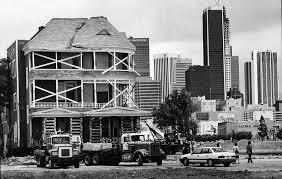

I saw a demolition crew tearing down a three-story house which was standing alone surrounded by lots of houses and an apartment building. I looked at the house and thought this house had character. Many others had been torn down in this area before. I pulled over to the side of the road and struck up a conversation with the site superintendent and I asked him why they were tearing this down. His reply to me was that they’re just tearing down this old piece of shit building to make way for the modernization of downtown. It should be noted that this is just when renovating buildings started to become popular. I started thinking that this mansion could be used for special-needs housing. I called my friend over at Mayor Bradley‘s office and I asked her if we could do anything with it. She told me that restoring it as affordable housing was a good idea, but we didn’t have a site. I went into accelerated mode and, to make a long story short we ended up acquiring an old leftover vacant lot that was owned by the Department of Water and Power. We ended up moving the entire three-story structure by truck at 3:00a.m. to a site just west of downtown near the corner of Alvarado and Seventh. I just want to emphasize that politicians like Tom Bradley come along once in a lifetime. I asked the mayor to please work with us and we would see that it was restored. There just happened to be some funding available and the rest is history. I present you the restored Edward Strong Mansion, housing for HIV/Aids Families, Los Angeles, California.
“We were 30 Years ahead of our time!!”
May 11, 1989: The Edward Strong mansion in downtown Los Angeles is moved from its site of 102 years on West 15th to the Alvarado Seventh Street area. May 11, 1989: The Edward Strong mansion in downtown Los Angeles, Arnold Stalk, Ph.D with City of Los Angeles Mayor Tom Bradley. An artist rendering of the Edward Strong Mansion before any renovation was done. This rendering was very close to the finished product.Source: Ramos, George “Mansion Moves Out Ahead of Wrecker’s Ball” The Los Angeles Times; May 12, 1989, p. 3




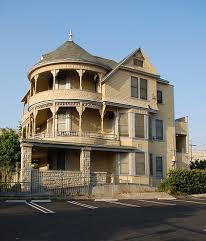
Transitional housing provides the individual or family facing homelessness an opportunity to stabilize.
Once the stress and trauma of where one is going to sleep at night is removed, individuals are then able to begin transitioning back to a state of normalcy and productivity.
When people hear the words “transitional housing” there is often a stereotype or stigma attached to it. They often have a vision of institutional type settings. The truth is that transitional housing can come in many shapes and forms. Some transitional housing facilities cater to niche demographics such as women & children, the elderly, the disabled, or United States Veterans.
Additionally, transitional housing is segmented for those that have specific needs for a more structured environment such as sober living or those in need of more concentrated supervision due to mental health or medical needs.
No matter the circumstances in which someone has a need for transitional housing, supportive services such as access to food, personal hygiene items, medical and mental healthcare and assistance with employment or other financial assistance are paramount at this stage. Those lacking knowledge regarding public resources or government benefits will need guidance and referrals to navigate the web of bureaucratic paperwork.

• Nevada
• Fertitta Community Assistance Center, Las Vegas, Nevada
• Reach-out Learning Center for children with HIV/AIDS
• PATH (People Assisting the Homeless) transitional housing, Los Angeles, California
• Filipino American Service Center Housing, Los Angeles, California
• Triangle Transitional Housing, East Los Angeles, California
• Argyle Courts Housing for HIV/AIDS Victims, Los Angeles, California
• Immanuel Church of Christ Transitional Housing, Los Angeles, California

• Citrus House shelter for teenagers, Hollywood, California
• CRI-HELP alcohol and drug detoxification residence/treatment center, North Hollywood, California
• Our House AIDS Project LA Hospice for HIV/AIDS Victims, Los Angeles, California

• Pediatric AIDS Clinic, Los Angeles, California
• Golden Passages Transitional housing for released offenders, Los Angeles, California
Project: AIDS Project LA “Our House” Renovation/Restoration


Year Built:: Approximately 1915

Year Restored: 1986
Project Type: 501(c)(3) Nonprofit Organization
Location: Los Angeles/Pico-Union neighborhood, California
Impact on City: To develop an “AIDS hospice in Downtown Los Angeles, California

Project Size: Two story mansion
Founding Goal: To create a model for replication across the United States.
Archival Website:: www.apla.org
In the 1980s, it became very apparent that there was a major epidemic occurring with people that were contracting HIV or had the aids virus. It was a nightmarish epidemic that needed to be addressed quickly. I was approached by Shelter Partnership in Los Angeles to help with what would be the first aids hospice in Los Angeles County. AIDS Project LA was in its infancy, and I worked with their staff to renovate a beautiful historic home on Lake Street in the Pico-Union area of Los Angeles. The integrity in the architecture was highly respected by the organization and this residence opened with major announcements because not only was the facility able to be renovated, but it also established the advocacy portion of the urgency of the need to respond to the AIDS crisis.
The agency provides HIV/AIDS services, housing services and volunteer opportunities for people of all ages who live in Los Angeles County. Individuals must be HIV positive or have AIDS for some services. Services are provided at multiple locations.
Project: CRI-HELP
Year Built:: 2019
Year Restored: 1986
Project Type: Development Consultant - 501(c)(3) Nonprofit Organization
Location: Greater Southern California
Impact on City: CRI-Help, Inc., a nonprofit organization established in 1971, maintains as its mission an increasing commitment to: the belief that addiction is a treatable disease; provide programs of treatment, education, prevention, counseling and rehabilitation for chemically dependent individuals and their families; improve the welfare of the community through our programs and by linkages with other groups, agencies, etc.; help our clients in sustaining a drug free life, while being self-sufficient, law-abiding and productive members of society; make available at least 51% of our beds to those unable to pay for treatment; maintain our programs in safe, healthy facilities; provide long term residential treatment in conjunction with other appropriate levels of care; involve our clients with an appropriate 12step program; seek and implement improved modalities of treatment.
Founding Goal: To create a model for replication across the United States.
Archival Website: www.cri-help.org
CRI-Help opened its doors in Sun Valley, California and moved to its current location in North Hollywood, shortly thereafter. Initially six clients and their families paid what they could and stayed in treatment for up to 18 months. One of CRI-Help’s first clients reported paying $25 a month, while another reported paying $200 upfront to cover their entire stay. From its humble start, CRI-Help has served the greater Los Angeles community for over 44 years, creating a lasting legacy that has touched thousands of lives. The CRI-HELP organization, which is based in North Hollywood, operated a series of older bungalows for many years, helping people to recover from alcoholism and drug abuse. The organization embarked on a major fundraising campaign and received funds to construct an alcohol and drug detoxification residence that was at that time state-of-the-art. Nobody was building projects of this size at that time. The most well-known residence at that time was the Betty Ford Center in Palm Springs, California. This facility was and is a grassroots, in-the-trenches, operation helping people in need. We were part of the fundraising team and coordinated as owner’s representative with the development team. It was all part of my learning curve and with each project that I worked on I learned more and more in terms of organizational infrastructure, development processes, and other steps necessary for nonprofit development.


Project: Veterans Village Emergency and Transitional Housing repurposed “Roadside Motel” in Downtown Las Vegas.


Year Built: 1960
Year Repurposed: 2012
Project Type: Developer - 501(c)(3) Nonprofit Organization
Location: Downtown Las Vegas, Nevada
Impact on City: To develop an emergency and transitional housing village by renovating a slum dwelling in the center of a city into a one-stop residence and food pantry to rescue homeless veterans from the streets and to be a part of a neighborhood redevelopment/revitalization effort.
Project Size: 120 Room Motel Conversion
Founding Goal: To create a model for replication across the United States.
Archival Website: www.sharelasvegas.org
Home Depot Foundation $600k Grant Presentation.
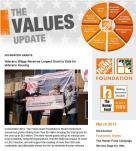
Dr. Arnold Stalk, Ph.D, Founder Veterans Village, Las Vegas City Councilman Bob Coffin, City of Las Vegas Mayor Carolyn G. Goodman, Fred Wacker, COO of The Home Depot Foundation.
 Home Depot Foundation Extreme Makeover Volunteers.
Home Depot Foundation Extreme Makeover Volunteers.
“Thank God for the Home Depot Foundation for letting me take the lead in attacking homelessness in the USA.”
Veterans Village #1 is a re-purposed old roadside former Travelodge motel that was built in 1960. When we took it over, there were only nine motel rooms filled by rent-paying customers. The site was so neglected by the owners that it was overrun by prostitutes, drug dealers, gangs and squatters.
Through a series of extreme makeovers for which we got labor and materials donated, it took a few years to get the renovation done. We did all this while we were ramping up the occupancy, which made for a particularly difficult project to do in terms of day-to-day logistical operations.
We received a grant from The Home Depot Foundation to replace the roofs, the windows, flooring, repair of the boiler system, placing new window air conditioners in all units, resealing the parking areas and renovating the lobby reception area.


We also used this site to advocate for real change in the way our veterans were treated at the time. We had numerous elected officials, community activists, veterans' organizations, religious organizations, and private sector contributors help in many ways.
Veterans Village #1 paved the way for others to follow. Which they have. Many similar motel conversions have occurred in Southern Nevada utilizing Veterans Village #1 as a template for replication.

Share Village Las Vegas stopped managing this site in 2021 due to a lease dispute with the owners. This enabled us to concentrate on our master plan to end homelessness on the east end of downtown, which we have done.
Photos of the Veterans Village #1 renovation. The Home Depot Foundation helped us with financial and labor contributions. At times we had hundreds of volunteer workers on site. It was a phenomenal demonstration of the community coming together.


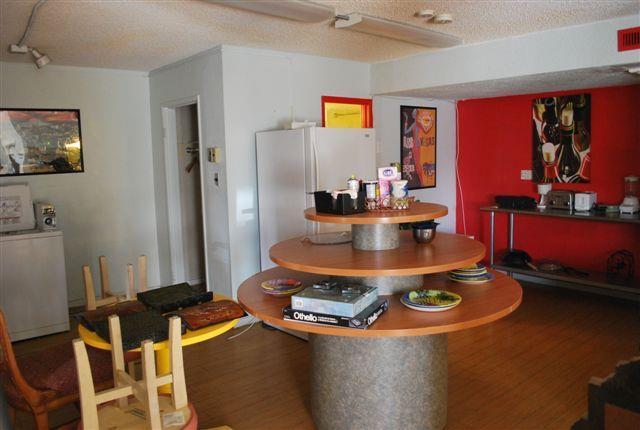





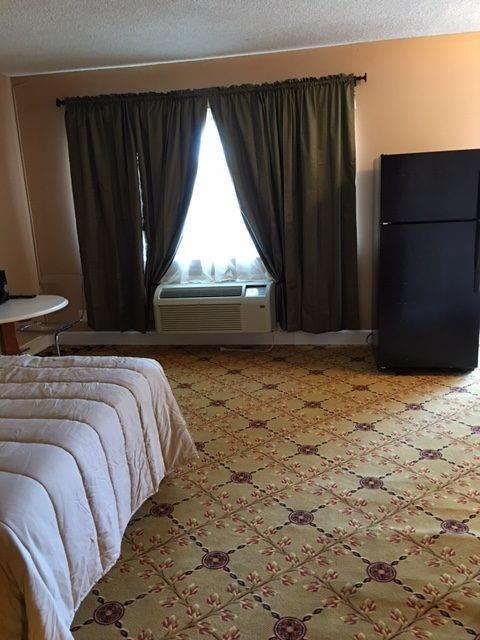



Project: WestCare Women & Children’s Campus Homeless Shelter for Women & Children
Year Built:: 1960
Year Renovated: 2015
Project Type: Development Consultant - 501(c)(3) Nonprofit Organization
Location: 5659 Duncan Drive, Las Vegas, Nevada 89130


Impact on City: To create an emergency shelter for women and children
Project Size: 150 Beds
Founding Goal: To create a model for replication across the United States.
Archival Website:: www.westcarenevada.com
Arnold Stalk’s Role on Project: Development Consultant
Skilled and non-skilled volunteers completed a variety of tasks including a complete makeover of each special needs portion of the women and children’s residence. The renovations were part of an effort to completely update the facility to better serve the pregnant and parenting women and children, along with female U.S veterans with children, who call it home. The year-long makeover series continued in alternating months throughout 2015 in different areas until the entire campus was renovated.
ABOUT WESTCARE: WestCare is a local Nevada human services organization that was started in Las Vegas over 40 years ago and now provides services in over 17 states and two U.S. territories. The WestCare Women and Children’s Campus provides safe shelter services for area youth and residential substance abuse and mental treatment for women and their children 24 hours a day, seven days a week. This facility provides much needed services to several thousand clients annually.
WestCare WCC Makeover Event Partners:
• The Crossing Church
• The Home Depot Foundation
• SHARE nonprofit organization
• MGM Volunteer Match Program
• Veterans Tribute Career and Technical Academy
Volunteers: Approximately 1,800
Donor funds raised for building materials:
• The Home Depot Foundation Celebration of Service Grant: $24,000

• Individual donors: $30,000
Makeover Events 2013
• The Home Depot Celebration of Service
• The Crossing/SHARE SERVE Day
Makeover Events 2014
• The Crossing/SHARE SERVE Day #1
• The Crossing/SHARE SERVE Day #2
• MGM Match Volunteer Day
• Veterans Tribute Career and Technical Academy
Makeover Events 2015
Makeover Day #1: January, 2015
Makeover Day #2: March, 2015
Makeover Day #3: May, 2015
Makeover Day #4: July, 2015
Makeover Day #5: September, 2015
Makeover Day #6: November, 2015


ALL VOLUNTEERS ARE HEROES AT EXTREME MAKEOVER EVENTS


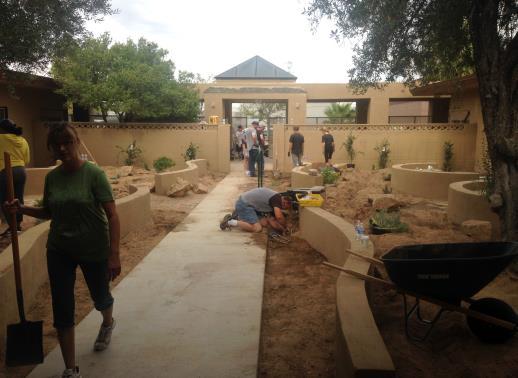





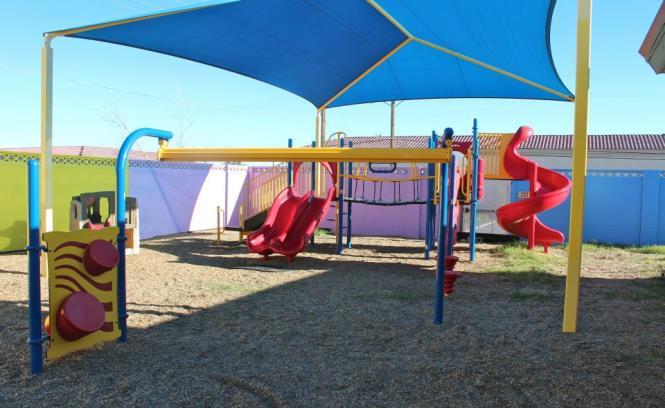
Project: SHARE Village Las Vegas #5 Women and Children’s Family Campus
Year Founded: 2019
Project Type: Developer - 501(c)(3) Nonprofit Organization
Location: Downtown Las Vegas, Nevada
Impact on City: To create permanent housing for women, children and families and to be a part of a neighborhood redevelopment/revitalization effort.
Project Size: 20 units infill neighborhood housing.
Founding Goal: To create a model for replication across the United States.
Archival Website: www.sharelasvegas.org
Share Village #5 is part of a master plan created by Share Village Las Vegas to end homelessness in Southern Nevada and across the United States through building models and Case Studies for replication. This development is a neighborhood infill site that contains 20 units of housing comprised of one- and two-bedroom apartments.

This residence houses female veterans, female veterans with children, and families in need of permanent affordable housing.


.
The site design and configuration is comprised of a “California Court,” which means all the living units face other giving the residents a sense of security and a “window on the world” which fosters social and visual connectivity.
The courtyard is heavily landscaped and connects to parking on the side and in the rear of the site.

This development was built in 1980 and has oversized living spaces and bedrooms not seen in today’s small unit developments.

SHARE Village Las Vegas Women & Children’s Family Campus














Project: Westcare/The Village at The Women and Children's Campus Transitional Housing

Year Renovated: 2015
Project Type: Development Consultant - 501(c)(3) Nonprofit Organization
Location: 5659 Duncan Drive, Las Vegas, Nevada 89130
Founding Goal: To create a model for replication across the United States.
Archival Website: www.westcarenevada.com
Arnold Stalk’s Role on Project: Development Consultant

WestCare/The Village at Women and Children’s Campus Transitional Housing Interior Courtyard




Rendering



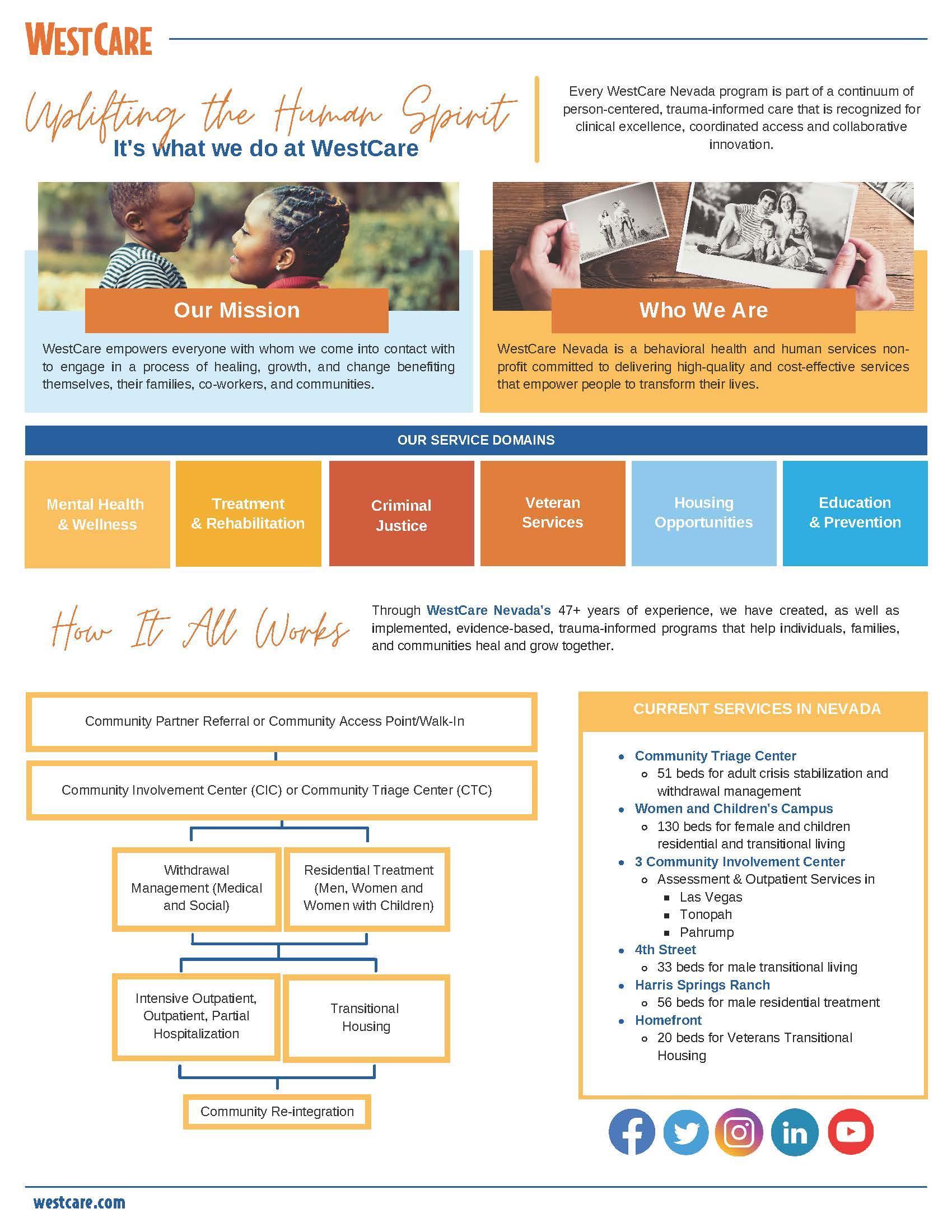
Project: Veterans Village #3 Assisted Living Residence
Year Built:: 1960
Year Repurposed: 2018
Project Type: Developer - 501(c)(3) Nonprofit Organization
Location: Downtown Las Vegas, Nevada
Impact on City: To develop a state-of-the-art assisted living residence for United States Veterans.
Project Size: 56 units infill neighborhood housing.
Founding Goal: To create a model for replication across the United States.
Archival Website: www.sharelasvegas.org
By the year 2000, the number of homeless veterans had increased by a staggering amount in Southern Nevada. At that time, there was no assisted living other than the veterans’ home in Boulder City and and a few independently-owned under-10 bed facilities.

I decided that we were going to venture into assisted living with a state-of-the-art facility and state-of-the-art high-quality services for our heroes.
Assisted-living requires a high degree of experience, a comprehensive track record in the field, and a load of cash. We contracted with three different operators, and, for various reasons, it did not work out. This came at a time when I was also expanding, virtually tripling our size overnight and concentrating on new developments with supportive services.
Veterans Village Las Vegas #3 Reception DeskThe need for comprehensive assisted living for United States Veterans is acute in the USA.
We acquired a building that was completely burned down and shelled out. An extremely comprehensive renovation was done to include state-of-the-art fire alarm facilities, fire sprinkler systems, HVAC for the entire facility, state-of-the-art commercial kitchen with a fully furnished dining room, a pharmacy, and shared rooms.







The exterior contained a heavily landscaped serene garden, outdoor furniture, shaded areas, and a separate parking area for visitors and staff.



The facility also had a complete beauty salon and examination room. It is truly a model for replication.

 Billiard/Game Room
Multi-Media Center and Library
Music Room
Dining Area and Snack Bar
Building Exterior.
Patio and Garden Courtyard
Commercial Grade Kitchen
Billiard/Game Room
Multi-Media Center and Library
Music Room
Dining Area and Snack Bar
Building Exterior.
Patio and Garden Courtyard
Commercial Grade Kitchen

A state-of-the-art assisted living facility in a totally renovated building designed for assisted living with comprehensive services. This was an experiment for me that I had never done highly specialized care like this before. We had hired three different companies to run this in a two-year span and eventually we sold this facility to another operator that was more experienced.
“The lesson I learned here was very expensive and taught me to ‘stay in my lane’. That is, do what you know how to do and concentrate on what your expertise is.”






 ADA Compliant and Accessible Lavatories and State-of-the-Art Room Monitoring Safety Systems.
ADA Compliant and Accessible Lavatories and State-of-the-Art Room Monitoring Safety Systems.
Once the navigation through the labyrinth of public resources is completed and financial resources have been established, the individual family transitioning out of homelessness can begin to experience a more permanent housing setting.

Fostering an environment that supports individuals and families as a whole, including children and pets, promotes independence and is the final step toward achieving selfsufficiency.
Supportive services including easy access to food, transportation and medical/mental healthcare and access to recovery programs and job search/referrals is still essential at this stage.
Other types of supportive services can include assistance with compliance for benefits issued by government agencies. This is most often achieved through partnerships with other agencies and organizations in the community.
Structure is an essential need at this point in the transition. Establishing a schedule for access to services reinforces the need for personal responsibility and accountability.
Centralizing services and establishing community collaborations along with public/private partnerships are the keys to establishing a program that engages the public at large to be a part of the solution to end homelessness.
March 22, 2019, Southern Nevada Congressional Delegation presented a Veterans Job and Resource Fair at SHARE Village Main Campus.
Pictured here: Congresswoman Dina Titus with SHARE Village Las Vegas Founder Arnold Stalk, Ph.D.



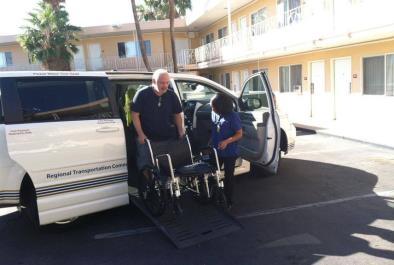

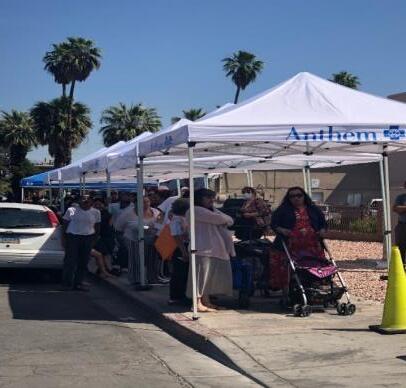



Share Village #2 became the main campus of the Share Village Las Vegas organization in a neighborhood where we had created a master plan to end homelessness through the development of a series of villages. This village sits on a 4-acre parcel and contains 204 apartments and a 10-unit repurposed ocean container village that was constructed using repurposed and recycled ocean containers. The site contains a series of solar panels harnessing energy from the sun, a large internal park, a dog park, an outdoor amphitheater, a veterans’ memorial plaza saluting our heroes, a fully outfitted food pantry and food storage area, large community room for public activities and a leasing office.
It should be noted that before Share Village Las Vegas took ownership of this apartment complex it was a dilapidated slum dwelling that hosted drug dealing, prostitution, gangs, and an overall high crime rate. Through a careful partnership with Metro Police and local government and businesses, this has become truly a model for replication.
All apartments are self-contained with a kitchen and dining area, a sleeping area and a full bathroom. The site also contains sweeping views of the Las Vegas valley from the second floor and has ample landscape and a very comfortable village-like setting.





This village has multiple events such as two food pantries a week, Nevada Homeless Alliance multi service fairs, medical enrollment, and a myriad of other services on site.
This village has become a hub in the area for food distribution, wraparound supportive services, high-quality affordable housing, and connectivity to the other villages in the neighborhood.
Project: SHARE Village Las Vegas #4 Emergency SRO Housing
Year Founded: 2019
Project Type: Developer - 501(c)(3) Nonprofit Organization
Location: Downtown Las Vegas, Nevada
Impact on City: To create affordable housing and to be a part of a neighborhood redevelopment/revitalization effort.
Project Size: 56 units infill neighborhood housing.
Founding Goal: To create a model for replication across the United States.
Archival Website: www.sharelasvegas.org
Formerly a Travelodge motel built in the 1960s, this village contains 56 single apartments. Each unit contains an individual cooking area, a full bathroom, living/sitting area, and is fully equipped with airconditioning and heating of all units.
We pioneered the re-purpose and recycling of motels in Southern Nevada and many others have begun to follow suit. This is an under-utilized resource of otherwise disposable architecture that needs to be and can be replicated in any city in America.


It’s a very simple and modest layout that worked in the 1960s and still works today.
We highly encourage the replication of this model throughout the state of Nevada and across the United States. There is a plethora of underperforming motels in the U.S. and it’s an ideal opportunity to fill these residences with people in need that are transitioning to permanent housing situations.



54 ADDITIONAL units PLANNED ON SITE NEIGHBORHOOD “INFILL”

ADDITION TO A FORMER TRAVEL LODGE MOTEL
THIS IS A PROOPOSED ADDITION OF 30 units TO AN EXISTING MOTEL IN DOWNTOWN LAS VEGAS, NV







Project: Fremont Villas, Downtown Las Vegas Permanent Infill Housing

Year Built:: 1998
Project Type: Development Consultant - 501(c)(3) Nonprofit Organization
Location: Downtown Las Vegas, Nevada
WE WERE 25 YEARS AHEAD OF OUR TIME!

Casa Villas, Los Angeles, California.
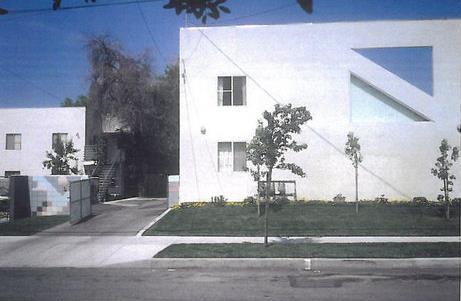
Brandermill Woods Retirement Community Midlothian, Virginia/Continuing Care/Assisted Living/Independent Living.


Casa Central, South-Central Los Angeles, California.
Gentry Village North, North Hollywood, California 30-bed transitional housing residence for previously homeless families. The courtyard design features a relationship between the indoor and outdoor spaces. The interior units included a townhouse design which defined a “home” environment and sets this transitional housing apart from more institutional designs.
PENTA, Wynn Design & Development, and local industry partners joined together to build a new thirty-five hundred square-foot Crisis Intervention Center for Veterans Village in seven days.
More than 100 local companies and trade unions donated $1 million in materials and labor to build the facility.
The one-stop Crisis Intervention Center helps provide food for those coping with hunger and food insecurity, resources for permanent or temporary housing, mental health counseling, medical care, meal assistance, career planning and 12-step meetings to help escape addictive behavior.
Wynn Las Vegas entertainment headliner John Fogerty, a U.S. Army Reserve veteran, participated in a groundbreaking ceremony with Las Vegas Mayor Carolyn Goodman, an avid supporter of the project.
The complex includes a food pantry — a “mini-Costco,” Stalk calls it that has products donated by Trader Joe’s, Smith’s, Whole Foods, Dunkin’ Donuts and the Three Square/Feeding America food bank network.
An intake office enables workers to triage arriving veterans with computers and resources to assist with health concerns and employment opportunities.
The center has partnerships with the new UNLV Medical School, the UNLV Dental School, Touro University, the University Medical Center, the Veterans Administration Hospital and United Health Care to assess medical concerns through checkups and screenings.

A multipurpose room adorned with flags representing the five military service branches — as well as some 53-inch flatscreen televisions for residents to gather to watch sports and movies — can be divided into two rooms for Alcoholics Anonymous and Narcotics Anonymous meetings. The room opens into a welcome plaza for indoor-outdoor events.
The plaza has a public memorial tribute to veterans with a simulated eternal flame.~ Las Vegas Review Journal.









“PENTA, Wynn Design & Development, and local industry partners joined together to build a new thirtyfive hundred square-foot Crisis Intervention Center for Veterans Village in seven days.




More than 100 local companies and trade unions donated $1 million in materials and labor to build the facility.
The one-stop Crisis Intervention Center helps provide resources for permanent or temporary housing, mental health counseling, medical care, meal assistance, career planning and 12-step meetings to help escape addictive behavior.”
https://www.pentabldggroup. com/timeline.php

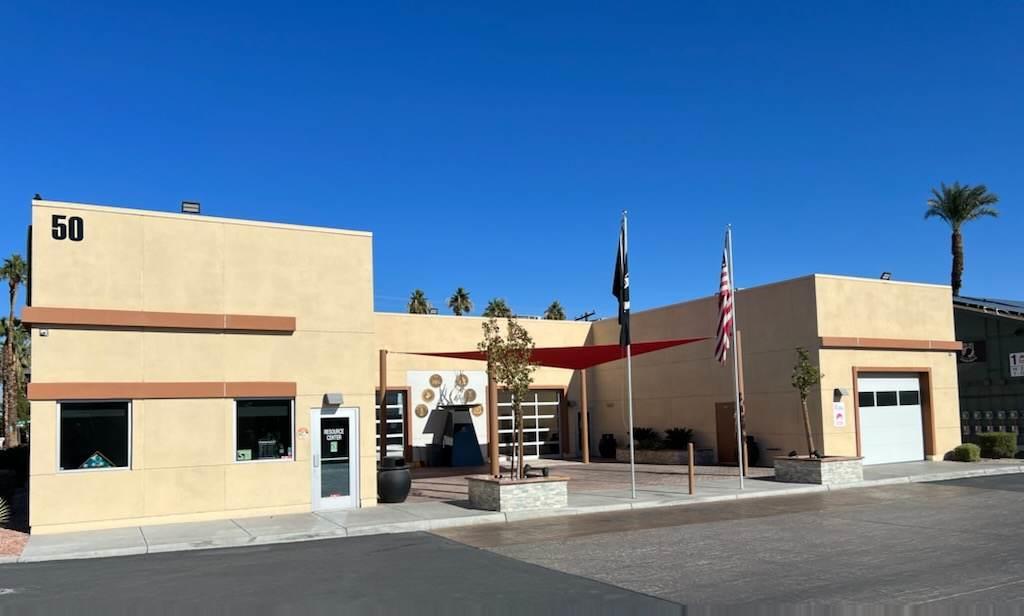






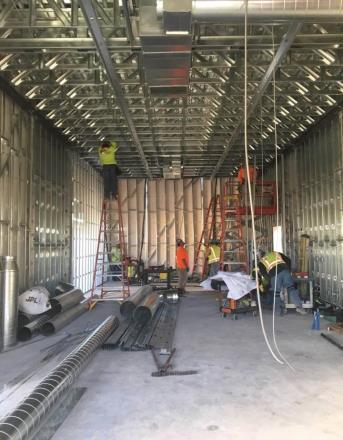
VOLUNTEERS ARE



VILLAGE LAS VEGAS MAIN CAMPUS WYNN/PENTA MULTI-SERVICE CENTER
















Providing healthy and nutritious foods to neighbors in need.






Access to nutritious food for families is a growing need. The demographic of those seeking assistance has broadened as many individuals as possible, and families come to the realization that they need assistance with food. Having access to healthy food is vital in helping people live better and plays a role in the well-being of individuals both physically and economically in all stages of life.
The SHARE Village Las Vegas Community Pantry provides fresh and ready-to-eat food items to anyone who is facing food insecurity.
In addition to food items the community pantry provides access to personal and feminine hygiene items, baby supplies such as diapers and formula, and pet supplies.
Currently open to the public twice weekly, the SHARE Village Las Vegas Community Pantry operations are scalable.

Humble beginnings, our first pantry was no bigger than a closet.
In March of 2020 at the onset of the COVID-19 Pandemic, pantry distributions expanded from three days a week to twice daily, seven days a week, serving 2000-3000 people daily.
By the numbers from March 2020-March 2021
• 67,235 Individuals were served
• 628,494 Pounds of food were rescued and served to the community.

• 6,050 Emergency Packets have been supplied to vulnerable individuals and families
• 7,450 Deliveries made door-to-door to shut-ins

Fresh food items including meats, dairy and produce, canned items, commodities and staples distributed from the pantry are provided by Three Square Regional Food Bank/Feeding America.
In addition to the partnership with Three Square/Feeding America, SHARE Village Las Vegas has developed an extensive food rescue network in the Las Vegas community that includes partnerships with the Las Vegas resort community, local businesses and national brands including 77 local Starbucks locations.
Since the implementation of the innovative online ordering program SHARE Village Las Vegas has distributed more than 250,000 pounds of food to neighbors in need.


OrderAhead is a partnership among Three Square Food Bank, Feeding America and SHARE Village Las Vegas. Access the “Order Ahead” system by visiting www.orderahead.org.


Out of a need to provide services to the community at large and maintain safe and proactive COVID protocols, SHARE Village Las Vegas was selected as one of 14 non-profit organizations across the USA to partner with Feeding America and Three Square Food Bank to launch a new and innovative “OrderAhead” fresh food pantry distribution program.
OrderAhead has been specifically designed for neighbors in need who are routinely worried that their food may run out. The newly established OrderAhead service will allow those in need of assistance the ability to place an online order once per week for grocery pick-up.
Emergencies do not occur from 9-5 Monday through Friday. Now more than ever, our United States Veterans, individuals, and families need emergency food assistance and will no longer have to wait in long lines. This new program will be faster, fresher, and environmentally higher quality. Pandemic approved protocols for distance separating, ordering and pickups for those in need of emergency help were in place 24/7/365.



Project: Wynn/Penta Courtyard Park



Project Type: Developer - 501(c)(3) Nonprofit Organization
Location: Downtown Las Vegas, Nevada
Archival Website: www.sharelasvegas.org
The conversion of shipping containers to affordable housing.
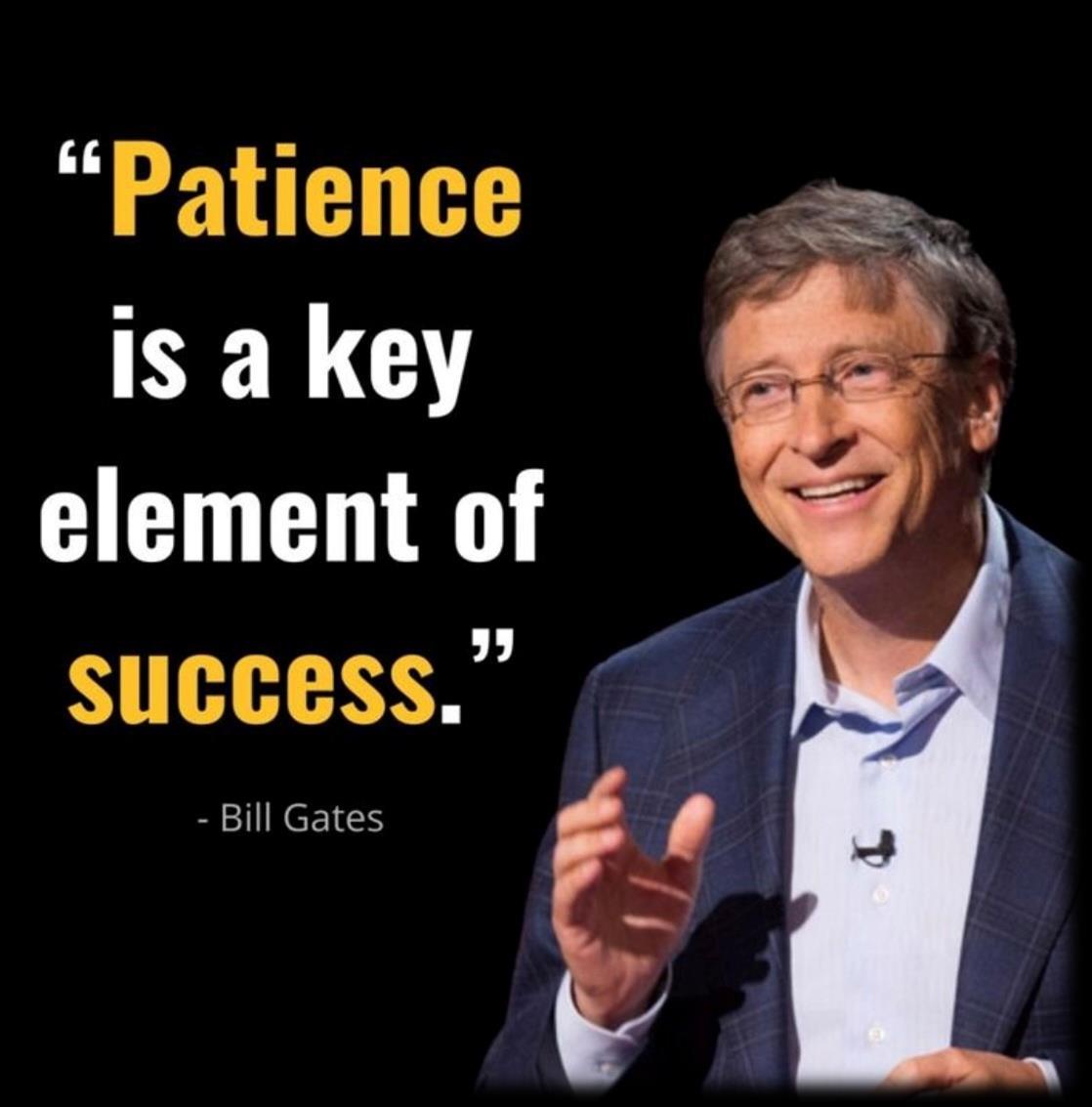
Downtown, Las Vegas, NV
The future of emergency and transitional housing for our United States Veterans, individuals and families at SHARE Village Las Vegas


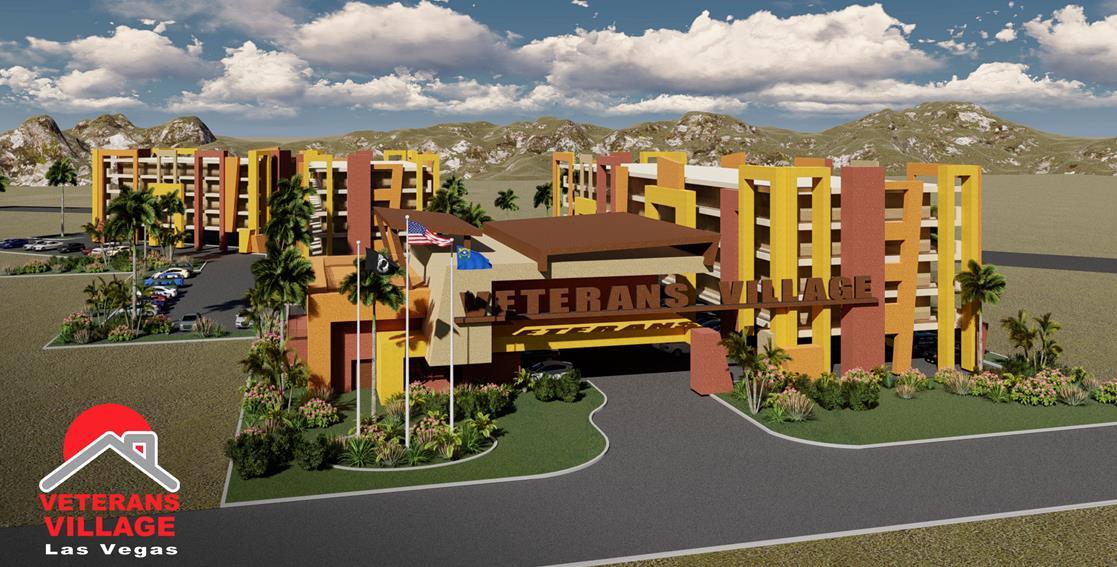
Business as usual is over at SHARE Village Las Vegas. By utilizing 100% recycled ocean containers and off-the-shelf components we have created affordable, well designed and efficient housing called "The Village @ Sands Cares." This breakthrough allows our U.S. veterans and others across the USA to leave homelessness in the streets.
A housing unit can be made from a standardized, recycled ISO shipping container.
These recycled housing units can be rapidly transported anywhere in the country via railroad “piggy-back” trains, semi, or jumbo air cargo transports for immediate occupancy, providing affordable housing, stability and support for our homeless, displaced and disadvantaged United States veterans, individuals and families to successfully transition from homelessness to stable living.
This fast construction, economically sound, environmentally friendly option aims to create a comprehensive housing solution to meet the need for affordable housing that provides stability and support for those facing housing insecurity.
1 2
The Instant-Built House prototype constructed on the campus of the Meadows School was funded by the Friedman Family Foundation and constructed by students attending the Meadows School.


To convert them into housing, ISO containers would be retrofitted with the addition of windows, walls, insulation, hot and cold running water, a kitchen, bathroom with septic tank, roof-top airconditioning unit, solar panels and a generator, among other amenities.
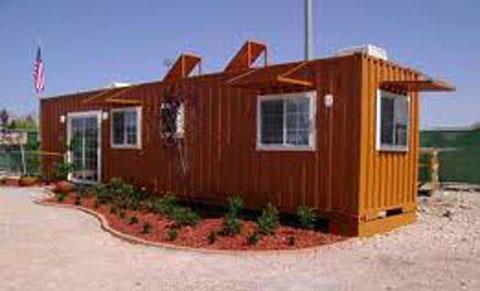

3



1
2011 Finalist “Building Back Better Communities Expo” winning prototype of rapid-deployable, high-quality modular home ships its award-winning SANCTA Haiti House, to Port-au-Prince, Haiti, for a competition sponsored by the Clinton Foundation to support the global relief effort underway there.
2

SANCTA’s basic housing units are made of lightweight, earthquake-resistive, steel-clad insulated panels that can be assembled by two installers in as little as 6 hours. units range from approximately 160 to 640 square feet and include basic sleeping quarters and bathroom facilities.


The shell of an Instant-Built House is the standard steel shipping container box used on ocean freighters and railroads. Known as ISO (International Standard Organization) modules, the hollow boxes measure 40 feet long by 8 feet (some stand 8 feet, 8 inches tall). There are 250 million ISO containers in use worldwide with as many as 12.5 million currently sitting unused at ports around the world.
Special thanks to Yamilka Valdés de Puga for being an integral part of the innovation for the ocean container village competition and the prototype that was built in Haiti.
3
Rapidly deployable, high-quality modular homes for use in natural disasters, at military installations or any large project that requires immediate housing.






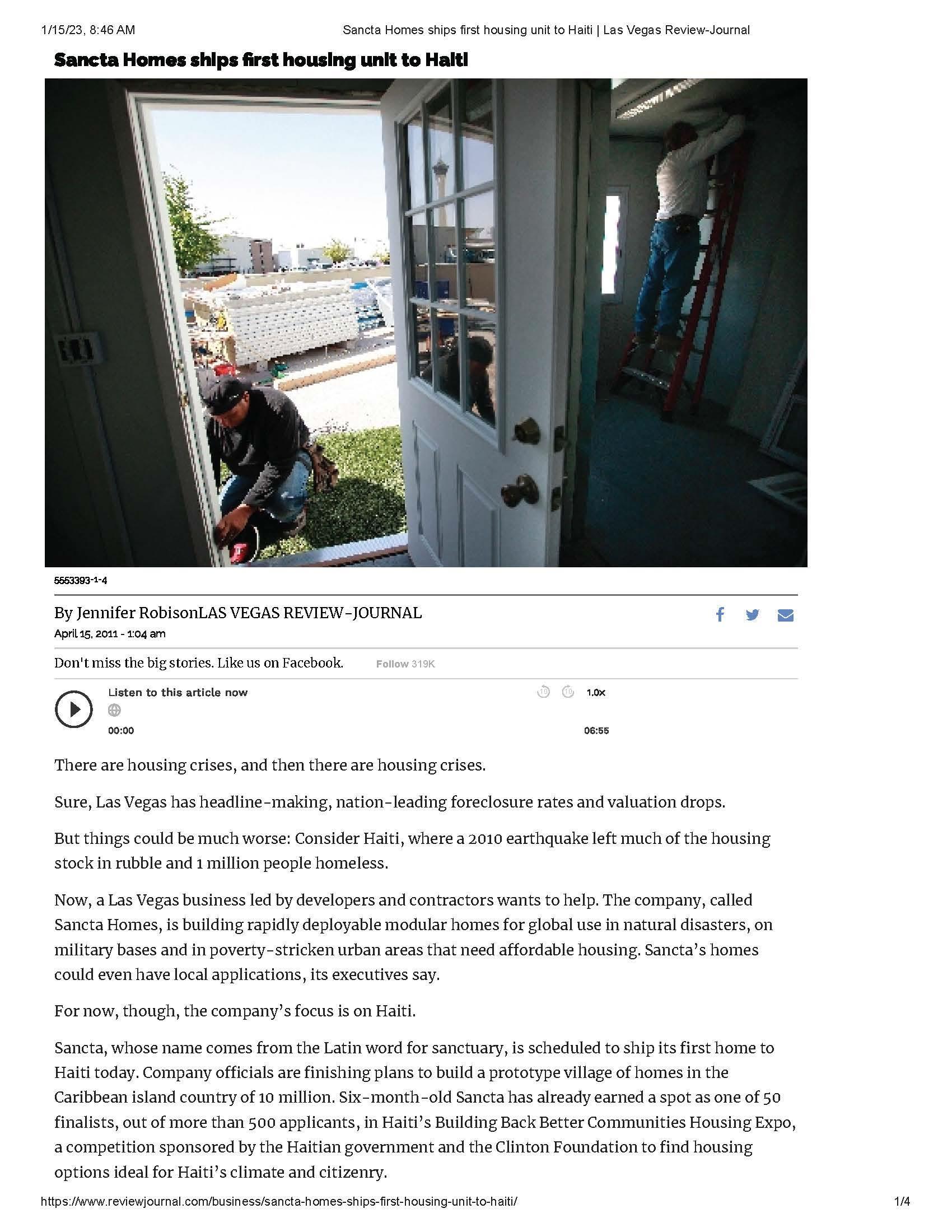






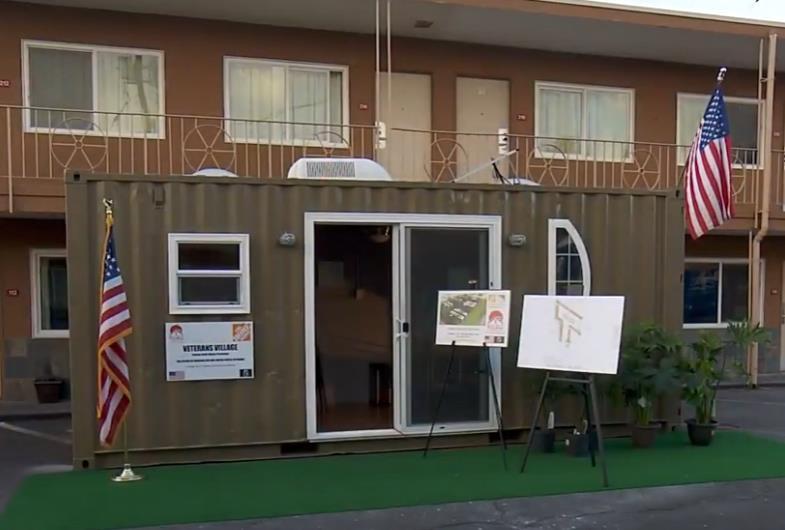

Project: Studio Model Repurposed Shipping Container Housing Conversion
Year Built:: 2015
Project Type: Developer - 501(c)(3) Nonprofit Organization
Location: Downtown Las Vegas, Nevada
Impact on City: Intensely positive
Archival Website: www.sharelasvegas.org


Project: One-Bedroom Repurposed Shipping Container Housing Conversion
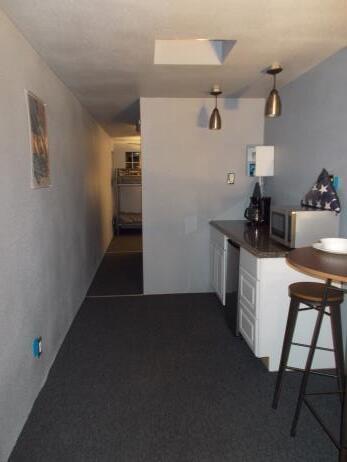



Year Built:: 2016
Project Type: Developer - 501(c)(3) Nonprofit Organization
Location: Downtown Las Vegas, Nevada
Impact on City: Intensely positive
Archival
Website: www.sharelasvegas.org


Project: One Bedroom Repurposed Shipping Container Housing Conversion
Year Built:: 2018
Project Partners:

• Sands Cares
• Raiders Foundation

• Builders United
• Martin Harris Construction
Project Type: Developer - 501(c)(3) Nonprofit Organization
Location: Downtown Las Vegas, Nevada
Impact on City: Intensely positive
Container Size: 8’ wide x 40’ long x 8’ tall ISO Shipping Container
Archival Website: www.sharelasvegas.org
 Raiders Foundation Donation 2018
Raiders Foundation Donation 2018


 8’ wide x 40’ long x 8’
8’ wide x 40’ long x 8’

Project: One-Bedroom Repurposed Shipping Container Housing Conversion





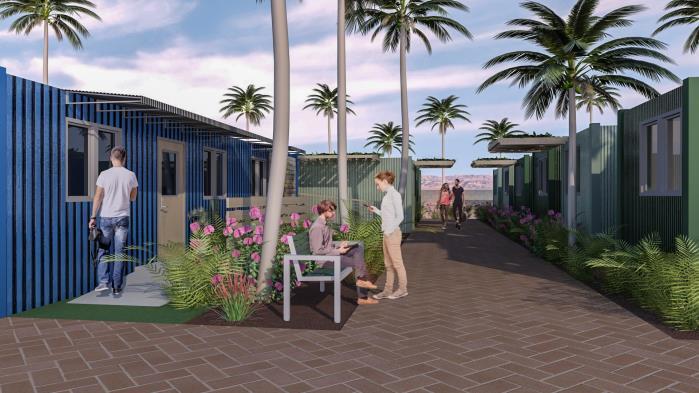
Year Built:: 2019
Project Type: Developer - 501(c)(3) Nonprofit Organization
Location: Downtown Las Vegas, Nevada
Impact on City: Profound
Container Size: 8’ wide x 40’ long x 8’ tall ISO Shipping Container
Archival Website: www.sharelasvegas.org





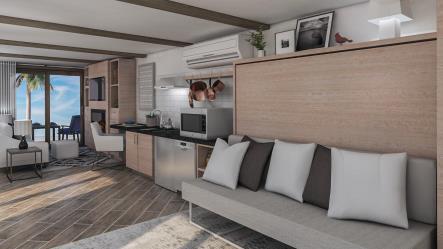
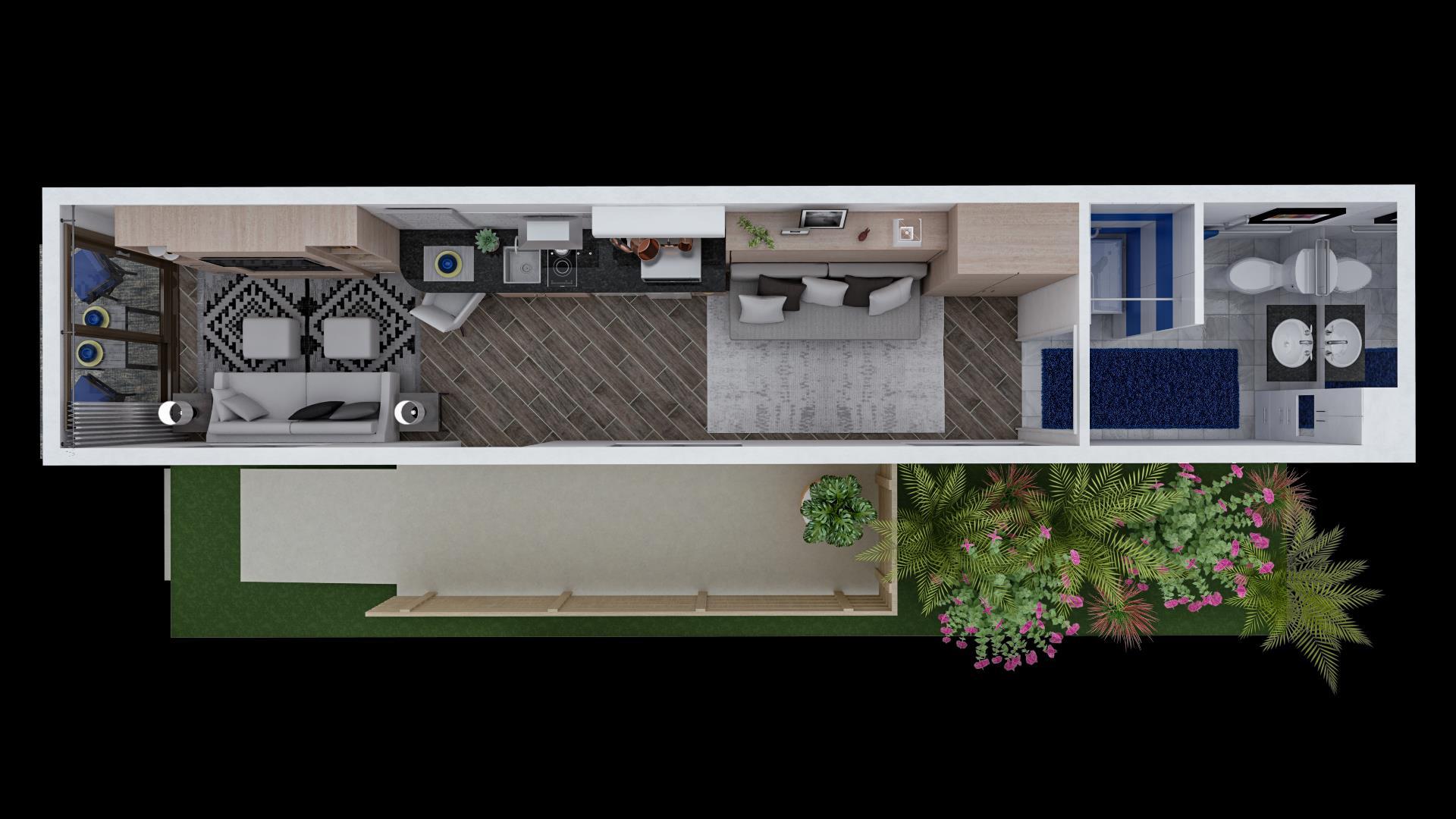





The problems that veterans face in our country today are multiple, one of which is the total lack of affordable housing. We do not have the inventory. We just do not have enough housing to supply the demand. We have veterans that live in their cars and their trucks on the hillsides in places that are unimaginable.
For people that have served our country to live like that is inexcusable. To me, that is the problem.
The action is to build housing and build it right and make it affordable with respect and dignity.







Project: One-Bedroom Repurposed Shipping Container Housing Conversion
Year Built:: 2019
Project Type: Developer - 501(c)(3) Nonprofit Organization
Location: Downtown Las Vegas, Nevada
Archival Website: www.sharelasvegas.org








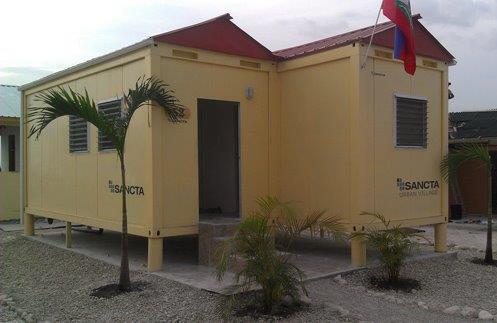


This fast construction utilizing recycled ISO shipping containers is an economically sound, environmentally friendly option which aims to create a comprehensive housing solution to meet the need for affordable housing.


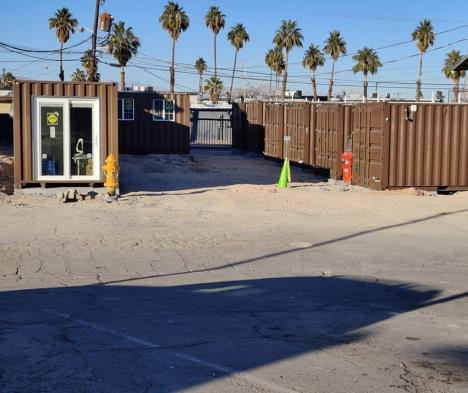













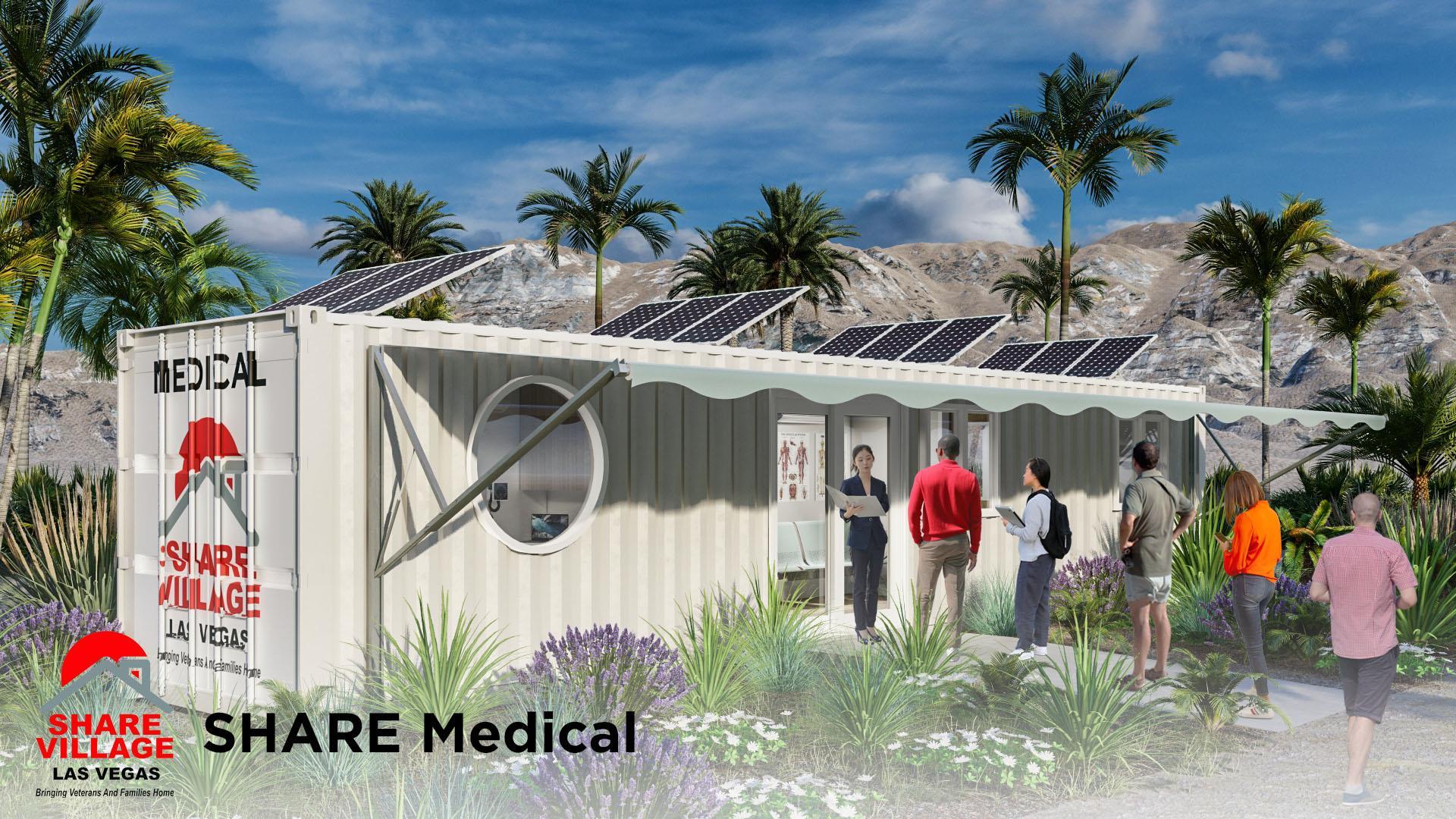











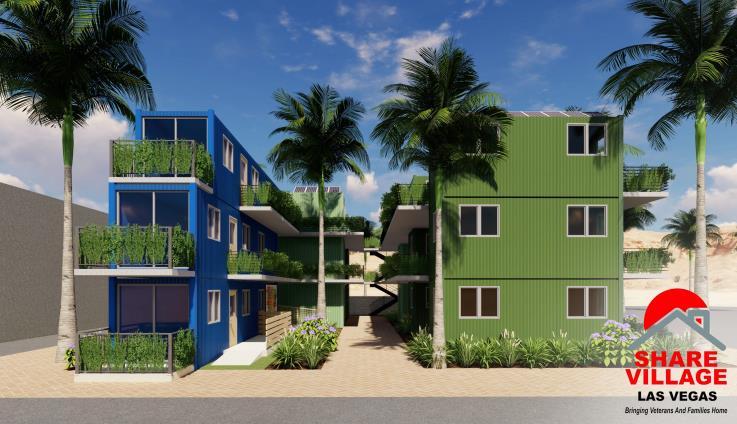

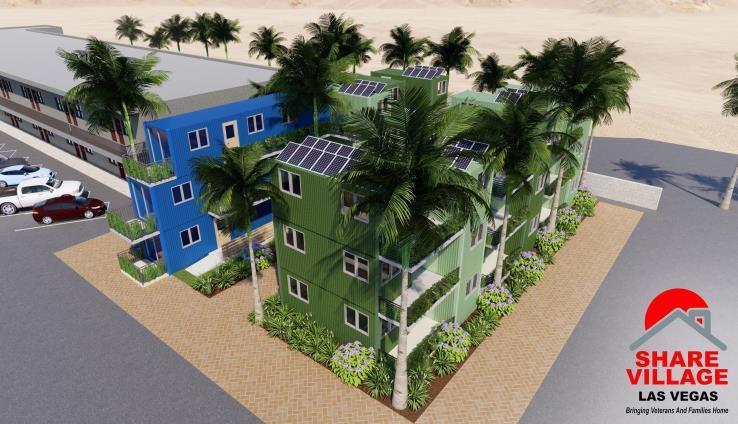


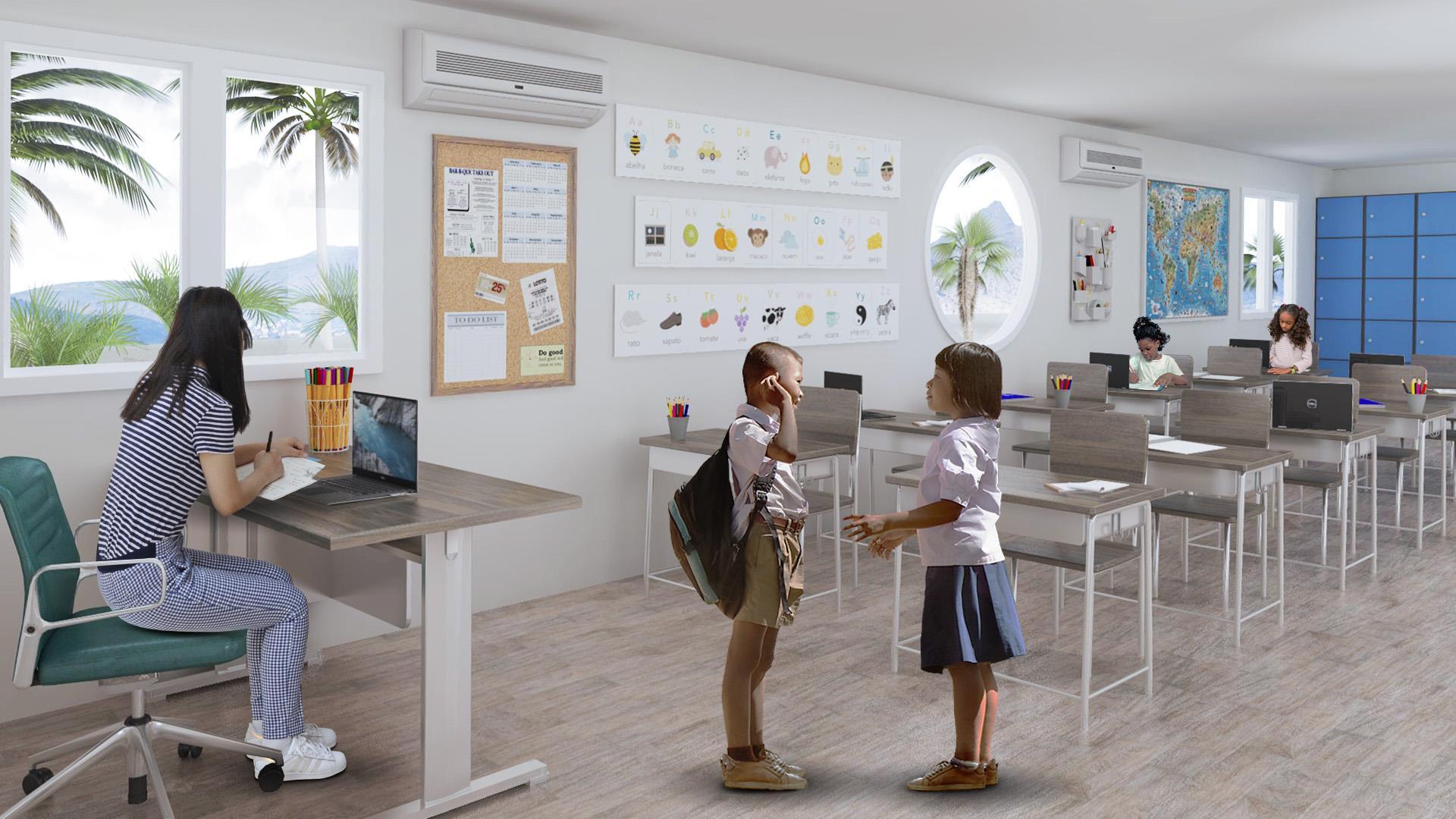

A glimpse into the future of strong cities and strong communities from the SC2 City of Las Vegas open competition.

The NEXT portion of this book ( pages 175-189) is an excerpt form the City of Las Vegas
“ Strong Cities, Strong Communities” SC2 competition. Credits for this section go to assemblageSTUDIO, Eric Strain AIA and Arnold Stalk PhD.

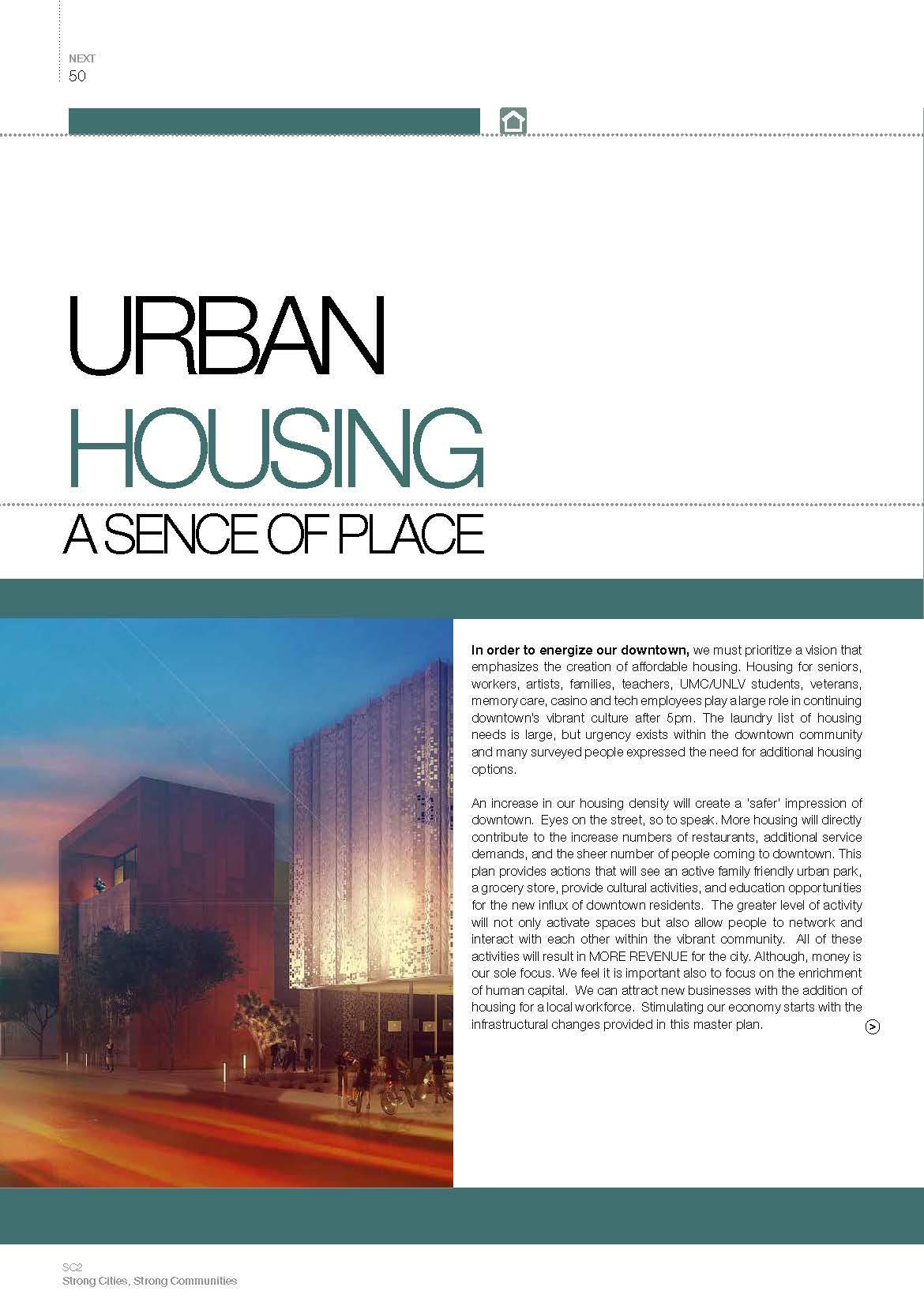









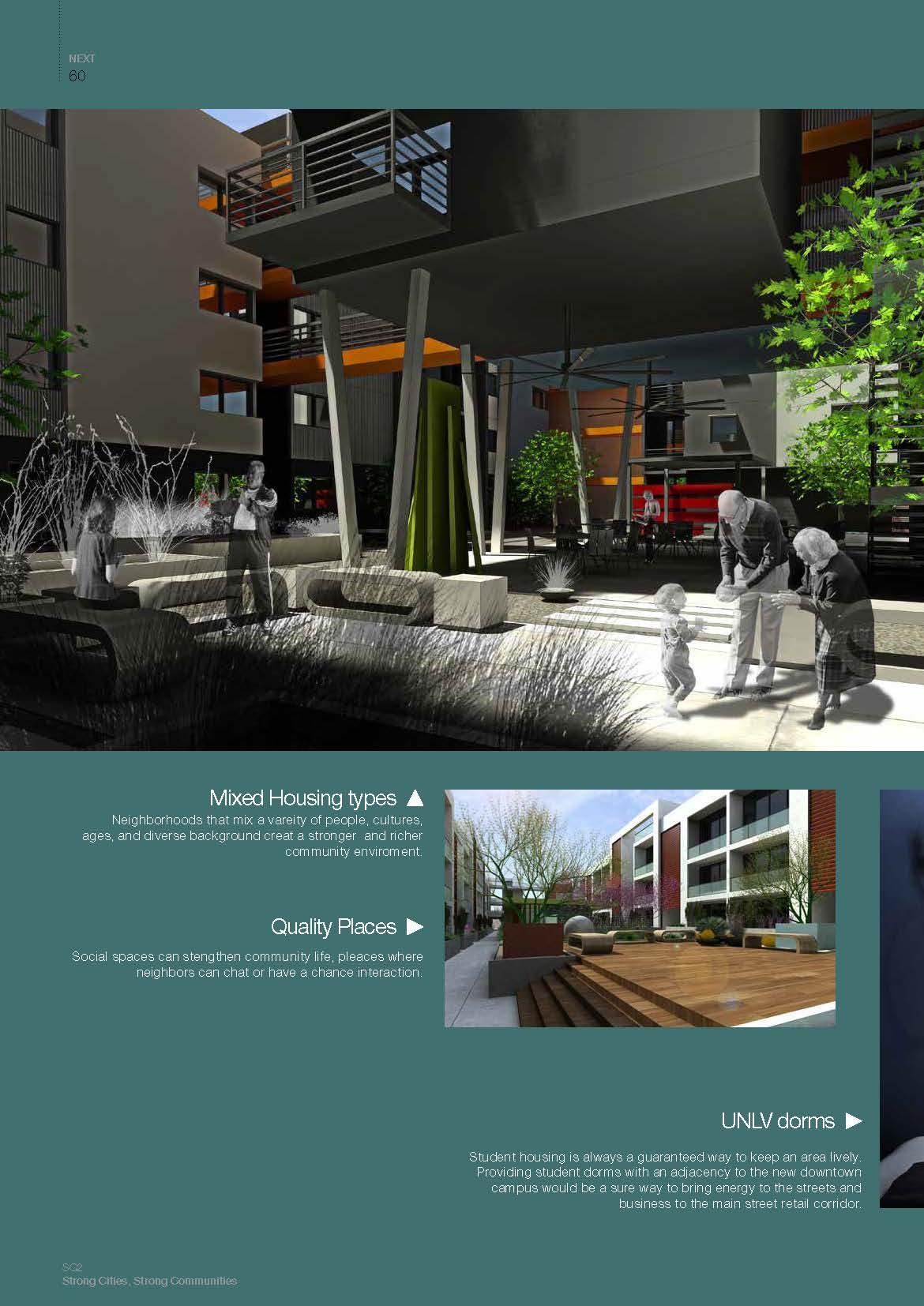



Taking the Guesswork Out of Nonprofit Funding.


It is a topic that no one wants to talk about: money. Raising money for your nonprofit can be a daunting task. With so many choices and strategies to consider, it can be difficult to know where to start. Fortunately, there are several reliable sources of funds that nonprofits can access to get the resources they need. Let us look at some of these funding sources and how best to make use of them.
There are many private foundations that provide grants specifically for nonprofits. These grants range in size and scope, and they can be used for everything from operational costs to special projects or initiatives. Researching potential grant opportunities is essential; you should identify which foundations align with your mission and goals before applying for a grant. It is also important to remember that grant proposals must adhere to certain guidelines make sure you read each foundation’s requirements thoroughly before applying.
Crowdfunding platforms like Kickstarter or GoFundMe offer another fantastic way for nonprofits to raise money quickly and efficiently. The key here is making sure you have a compelling story that will draw people in—a great narrative combined with visuals, videos, or other multimedia elements can really help make your project stand out from the crowd. You should also take advantage of social media platforms like Twitter, Facebook, and Instagram when promoting your crowdfunding campaign; without proper promotion, it is unlikely you will reach your goal.
In addition to private foundations, government organizations often offer grants for specific programs or initiatives related to your organization’s mission. To find out what sort of funding is available in your area, contact your local state representative or senator’s office they should be able provide more information on any relevant programs or grants available at the federal level as well as any state-specific funding sources for which you may qualify.
Funding a nonprofit requires creative thinking and strategic planning but with the right approach, it does not have to be an overwhelming process. There are plenty of reliable sources out there that allow organizations to get the resources they need without breaking the bank. From grants from foundations and crowdfunding platforms to government programs, nonprofits have multiple avenues available when seeking funds you just must know where (and how) to look!
Affordable housing trust funds are tools and vehicles in which the government establishes a good amount of funds so that nonprofit organizations do not have to compete to build their projects.
The thought of nonprofits competing is archaic and an “old school” way of doing business.
I propose that affordable housing trust funds be established in all 50 states. This is a revolving fund that replenishes itself every year. The rents and other subsidies could well cover the cost of operating new projects.
Funds that I have used developing affordable housing trust funds include the central business district affordable housing trust fund in and the Bunker Hill affordable housing trust fund in Los Angeles, California.
The following information is directly from the U.S. Department of Housing and Urban Development.
The Housing Trust Fund (HTF) provides grants to states to produce and preserve affordable housing for extremely low- and very low-income households. States and state-designated entities are eligible grantees for the HTF. HUD allocates HTF funds by formula annually. A state must use at least 80 percent of each annual grant for rental housing; up to 10 percent for homeownership; and up to 10 percent for the
grantee's reasonable administrative and planning costs. HTF funds may be used for the production or preservation of affordable housing through the acquisition, new construction, reconstruction, and/or rehabilitation of non-luxury housing with suitable amenities. All HTF-assisted units will be required to have a minimum affordability period of 30 years.
The National Housing Trust Fund (HTF) is a new affordable housing production program that will complement existing federal, state and local efforts to increase and preserve the supply of decent, safe, and sanitary affordable housing for extremely low-income and very low-income households, including homeless families. Statutory Background: The HTF was established under Title I of the Housing and Economic Recovery Act of 2008, Section 1338 of the Federal Housing Enterprises Financial Safety and Soundness Act of 1992 (Public Law 110-289). Publication of Program Rules: HUD published the proposed HTF Formula Rule (FR5246-P-01) on December 4, 2009 and the HTF Proposed Program Rule (FR-5246- P-02) on October 29, 2010. On January 30, 2015, HUD published an Interim Program Rule (FR-5246-I-03). The interim rule provides the guidelines for states to implement the HTF.
Grantees: HTF is a formula grant program, which is to be administered by states. A state may choose to administer its own program or designate a state-designated entity to administer the HTF funds on its behalf. Program Requirements: The HTF funds will be distributed by formula.
Reference Link:
https://www.hud.gov/program_offices/comm_pla nning/htf
Grantees are required to use at least 80 percent of each annual grant for rental housing; up to 10 percent for homeownership housing; and up to 10 percent for the grantee's reasonable administrative and planning costs. HTF funds may be used for the production or preservation of affordable housing through the acquisition, new construction, reconstruction, and/or rehabilitation of non-luxury housing with suitable amenities. All HTF-assisted rental housing must meet a 30-year affordability period.
All HTF-assisted homeownership housing must meet the minimum affordability period of 10, 20 or 30 years based on the amount of HTF investment in the unit. Eligible activities and expenses include:
• Real property acquisition
• Site improvements and development hard costs

• Related soft costs • Demolition • Financing costs
• Relocation assistance • Operating cost assistance for rental housing (up to 30% of each grant)

• Reasonable administrative and planning costs program
More Information: HUD is developing guidance and training to assist grantees and program partners in designing and implementing their programs. For more information on HTF, visit https://www.hudexchange.info/htf
SOURCE:
https://www.hud.gov/sites/dfiles/CPD/documents/National-Housing-Fund-Trust-Factsheet.pdf
Downtown Los Angeles Bunker Hill Urban Design Massing Model.
Our mission has always been to build affordable houses that people are proud to call home with supportive services to lift individuals and families out of poverty.
Our progress would not be possible without the support and generosity of the Las Vegas Community.
It's a privilege and an honor to be named among so many incredible community leaders.

Dr. Stalk’s work has been recognized by numerous prestigious organizations and has been awarded with many honors including from First Lady Michelle Obama at the 2016 State of The Union for the creation of housing homeless Veterans and the National Daily Points Of Light Award from the White House, President George H.W. Bush and President George W. Bush. Other awards Include Community Associations Institute’s “Ordinary People, Extraordinary Measures” award; was a nominee for the Volunteer Service Humanitarian Award for the Las Vegas Chamber of Commerce; Volunteer Center of Southern Nevada; Received Community Partners for Better Health-Veterans Village US Veteran Services Award and was nominated for the “CNN Heroes” award.







 2012 Ordinary People-Extraordinary Measures Award Recipient
2016 Strong Cities Strong Communities Finalist
2016 CNN Heroes Award Nominee
2020 James Ebert and the Military Order of Purple Hearts Nevada for this amazing award today! We are honored to have partnered with this organization providing food, housing, jobs and other items to our Veterans for over eight years.
2012 Ordinary People-Extraordinary Measures Award Recipient
2016 Strong Cities Strong Communities Finalist
2016 CNN Heroes Award Nominee
2020 James Ebert and the Military Order of Purple Hearts Nevada for this amazing award today! We are honored to have partnered with this organization providing food, housing, jobs and other items to our Veterans for over eight years.
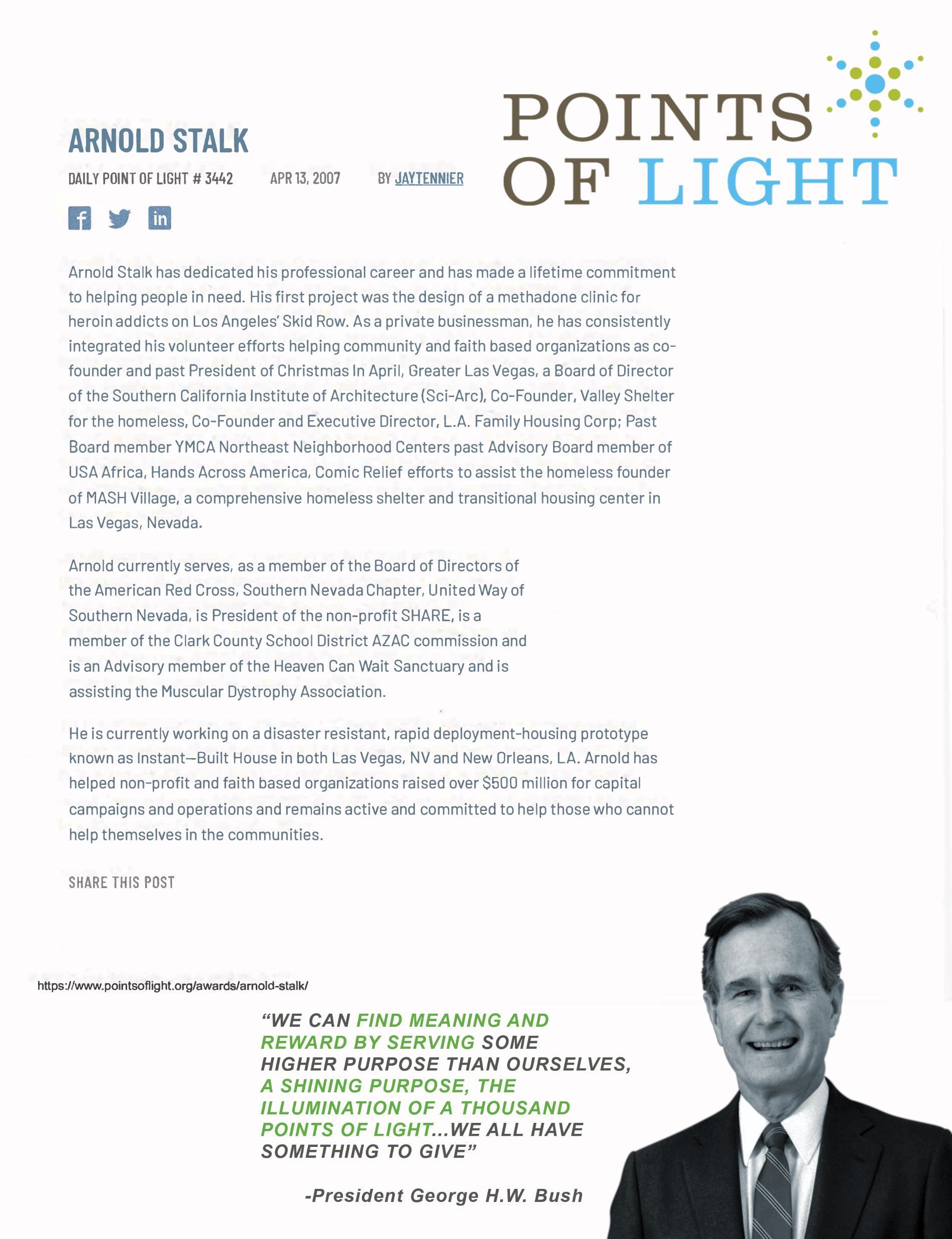







 2022 Left to right: SHARE Board Member Jacob Stalk, SHARE Co-Founders Shannon Kelly and Arnold Stalk and Urban Land Institute’s Tyler Fegert.
2020 Key To The City Award.
Left to right: SHARE Board Member Jacob Stalk, SHARE Founder Arnold Stalk , City of Las Vegas Mayor, Carolyn G. Goodman, SHARE Co-Founder Shannon Kelly.
2020 Community Collaborator of the Year Award Wynn Las Vegas Inaugural Nonprofit Awards SHARE Founder Arnold Stalk and SHARE Co-Founder Shannon Kelly.
2021 Clark County Medical Society Winged Heart Award.
2022 Left to right: SHARE Board Member Jacob Stalk, SHARE Co-Founders Shannon Kelly and Arnold Stalk and Urban Land Institute’s Tyler Fegert.
2020 Key To The City Award.
Left to right: SHARE Board Member Jacob Stalk, SHARE Founder Arnold Stalk , City of Las Vegas Mayor, Carolyn G. Goodman, SHARE Co-Founder Shannon Kelly.
2020 Community Collaborator of the Year Award Wynn Las Vegas Inaugural Nonprofit Awards SHARE Founder Arnold Stalk and SHARE Co-Founder Shannon Kelly.
2021 Clark County Medical Society Winged Heart Award.
Congress shall make no law respecting an establishment of religion or prohibiting the free exercise thereof; or abridging the freedom of speech, or of the press; or the right of the people peaceably to assemble, and to petition the Government for a redress of grievances.
Advocating for your mission and gaining public support
Building relationships with media outlets is essential to the success of any nonprofit organization.

Advertising is most often an afterthought for nonprofit organizations. The mindset is backward, it should not be thought of as an expense but rather in an investment.
For a nonprofit organization, media coverage is by far the most beneficial resource for reaching a broader audience when advocating for your cause.
I highly recommend adding a public relations professional to your team. PR pros understand the protocols of interacting with the media and often have pre-established relationships with local and national outlets.
Be selective! Send only newsworthy information to media outlets when seeking coverage.
Be prompt! Reporters and camera crews run on very tight schedules, they won’t have time to wait for you and you could lose your shot.
Be prepared! Make sure you have a printed copy of your press release or talking points to provide to reporters.
Keep it brief but complete! Time slots are often limited to only a minute or two. Don’t ramble. Answer questions clearly and concisely to maximize the amount of information you can provide.
1986 - Para Los Ninos’ Tull Takes On a New Challenge : Founder of Skid Row Agency Shifts Sights to Homeless
https://www.latimes.com/archives/la -xpm-1986-02-03-vw-3993-story.html
1989 - Architects Building on Their Social Conscience https://www.latimes.com/archives/la -xpm-1989-10-05-vw-879-story.html
2007 - Housing Idea Unveiled Housing idea unveiled | Las Vegas Review-Journal (reviewjournal.com)
2011 - Sancta Homes ships first housing unit to Haiti https://www.reviewjournal.com/busi ness/sancta-homes-ships-firsthousing-unit-to-haiti/
2012 - Old motel converted into housing for homeless veterans https://lasvegassun.com/videos/2012 /jul/24/7468/
2013 - Housing advocate pursues transitional residences for homeless vets https://www.reviewjournal.com/life/ housing-advocate-pursuestransitional-residences-for-homelessvets/
2014 - Surprise Squad honored to surprise Las Vegas' Veterans Village https://www.youtube.com/watch?v= NWiDUsyExhU
2015 - Wynn Las Vegas Partners
With Habitat for Humanity Las Vegas to Rehabilitate Veterans Village in Downtown Las Vegas https://www.3blmedia.com/news/wy nn-las-vegas-partners-habitathumanity-las-vegas-rehabilitateveterans-village-downtown-las
2016 - Fighting for Our Homeless Vets https://knpr.org/knpr/2016-04/fighting-ourhomeless-vets
2016 - Veterans Village doubles down on bid to house homeless vets in Las Vegas Valley https://www.reviewjournal.com/news/milita ry/veterans-village-doubles-down-on-bid-tohouse-homeless-vets-in-las-vegas-valley/
2017 - New veterans' facility in downtown
Las Vegas was built in a week
https://www.reviewjournal.com/local/locallas-vegas/downtown/new-veterans-facilityin-downtown-las-vegas-was-built-in-a-week
2017 - An angel for homeless veterans
$1 million gift from former NFL running back and Las Vegan Steven Jackson
https://thenevadaindependent.com/article/a ngel-homeless-veterans
2018 - Veterans Village 5’s Shade Tree
Women & Family Campus Ribbon Cutting
https://www.veteransreporternews.com/vet erans-village-5s-shade-tree-women-familycampus-ribbon-cutting/
2018 - Veterans Village holds grand opening for its container homes.
https://www.raiders.com/photos/veteransvillage-holds-grand-opening-for-its-containerhomes
2018 - New Veterans Village Park may be a game-changer for local veterans
https://news3lv.com/news/local/newveterans-village-park-may-be-a-gamechanger-for-local-veterans
2018 - Raiders donate $150K to Veterans Village in Las Vegas
https://www.ktnv.com/sports/raiders/raiders -foundation-makes-donation-to-veteransvillage-las-vegas
2019 - Home for the Brave https://www.multifamilyexecutive.com/d esign-development/design/home-for-thebrave
2020 - Abandoned shipping containers transformed into affordable homes for veterans
https://wpde.com/news/nationworld/abandoned-shipping-containerstransformed-into-affordable-homes-forveterans-03-03-2020
2020 - Rock legend John Fogerty sends positive vibes to homeless advocate https://www.reviewjournal.com/entertai nment/entertainmentcolumns/kats/rock-legend-john-fogertysends-positive-vibes-to-homelessadvocate-2150240/
2020 - From tents to tiny houses, advocates get creative to address Nevada’s affordable housing shortage https://thenevadaindependent.com/articl e/advocates-and-nonprofits-work-toaddress-nevadas-affordable-housingshortage
2021 - Carpenters volunteer to remodel Veterans Village apartments https://www.reviewjournal.com/local/loc al-las-vegas/carpenters-volunteer-toremodel-veterans-village-apartments2316194/
2021 - WestCare Women and Children’s Campus https://lasvegassun.com/photos/galleries /2021/jul/01/west-care-womenchildrens-campus/#/10
2022 - Urban Land Institute Nevada Announces 2022 Award Winners, Honors Mayor March as Placemaker of the Year https://www.vegasbusinessdigest.com/ur ban-land-institute-nevada-announces2022-award-winners-honors-mayormarch-as-placemaker-of-the-year/



It’s time to get to work!

You’ve just finished reading this book and your head is probably swimming with ideas on how you can get started on your own journey to help end homelessness in America or in your own community. My hope is that your take-away from this book is that it is possible to end homelessness. It won’t be easy and hopefully, by reading this book, you can avoid some of the knocks on the head I’ve earned (taken) on my journey so far.
Now, it’s time to get to work!
There are billions of people around the world who are homeless, and it’s up to us to do something about it. Here are some tips you can take to get started in your own community.
Educate Yourself on Homelessness - Before you can effectively help those who are homeless, you need to educate yourself on the causes and effects of homelessness and how they manifest in different cultures and locations. Researching these causes can help provide insight into why it is so hard for people to find shelter or employment and what solutions may be available. You should also research the laws that apply to the homeless population in your area as some cities have stricter regulations than others.
Connect with Organizations That Help - There are many organizations out there dedicated to helping those experiencing homelessness. By connecting with these organizations, you can get involved and learn more about how they work and what kind of support they offer. Additionally, you will be able to learn more about the resources available for those experiencing homelessness in your area and how you can best utilize them.
Talk With Those Experiencing HomelessnessTalking directly with people who are living on the streets is an effective way to gain insight into their lives and experiences first-hand.
This will allow you to better understand their individual needs and any potential solutions that could help them overcome their current situation. It’s important that when talking with someone experiencing homelessness that we listen without judgement or assumptions as everyone has a unique story behind why they are in their current position.
Volunteer Your Time - Volunteering your time is one of the best ways that you can help someone experiencing homelessness as it not only provides them with immediate support but also offers longterm assistance through mentorship or providing guidance on job searches or housing opportunities. Consider volunteering at a soup kitchen or local shelter where you will be able to directly connect with people who need assistance most urgently.
Donate Money or Resources - Donating money or resources such as clothing, food items, hygiene products, sleeping bags etc., is an excellent way to provide assistance without expecting anything back in return other than knowing that your donation has made a difference in someone’s life. You should research organizations working on ending homelessness in your area before donating money so that you know where exactly your money is going towards making a difference!
Advocate for Change - Advocacy work is essential if we are ever going to make strides towards ending homelessness permanently. Take part in campaigns by writing letters/emails/petitions demanding change from government officials. Organize public events such as rallies or marches calling attention towards homeless issues. Attend town hall meetings/legislative hearings advocating for policy changes etc., all of which will bring greater attention towards this cause nationally/locally depending on which level of advocacy work interests/suits you most!
Spread Awareness Through Social Media - Social media plays an important role when it comes to spreading awareness about various social issues such as homelessness too! Posting regularly about issues related to lack of affordable housing/inadequate support services offered by local governments etc., encourages people both online & offline alike to talk more openly about these topics & eventually become more engaged when trying figure out ways of combatting this problem!
Start Community Projects - Working together with other members within local communities provides an opportunity for everyone involved (volunteers & people experiencing homelessness alike) to come together & create positive change allowing individuals to get hands-on experience whilst tackling pressing issue like poverty head-on! Examples include starting gardening projects or organizing fund raisers at schools/colleges etc., all which could potentially benefit those affected by lack of economic security greatly!
Lobby For Funding - Lobbying government officials & other influential individuals outside of political circles helps ensure adequate resources being provided towards combating poverty and other related social issues to keep individuals off streets permanently. Additionally, lobbying private sector businesses encourages creation fair wage jobs which would eventually reduce the number of homeless individuals significantly over time too!
Starting business specifically aimed at helping those affected by poverty could potentially create much needed employment opportunities for unemployed, thus reducing overall number citizens living on the streets considerably! Additionally having extra income coming from such activities allows a person running a business to contribute even more positively towards society around him/herself, creating a sustainable cycle of growth instead of just one-time donation-based approach alone!
Ending homelessness won’t be easy but hopefully after reading this book, readers now have some ideas on how they can begin taking action immediately within their own communities . With some effort and dedication , it is possible for all of us make a difference no matter how small our contributions may seem initially ! So, let's get started ! We can do this !
We have the power , knowledge , information , connections , tools , resources , skills , guidance , inspiration and motivation necessary achieve our goal . Together we can end poverty and give hope back millions struggling survive every day . Now…it’s time for us get work & make a difference . Are you ready? I sure am !!
I’ve shown you the way, it’s up to you to take action. These ten steps are your outline and the personal experiences I’ve shared along with the case studies that I’ve included are the blueprint for success.

#1 Keep politics out of the whole process. Focus on getting into the action of building housing so people can live with respect and dignity.

#2 Create a master plan. This master plan could be developed in urban cities, counties and rural counties across the USA.
#3 Create public and private partnerships, implementing ideas, concepts and dreams to build affordable housing.
Pillar 1: Emergency Shelter
Pillar 2: Transitional Housing
Pillar 3: Permanent Affordable Housing both Rental and Ownership
#4 Master planning to end homelessness to include the specific creation of emergency shelters (1–90-day stays), transitional housing (91–180-day stays) and permanent rental housing models to be built on scattered sites within residential neighborhood contexts.
#5 Create a local, statewide and federal overhaul of all planning codes. This will encourage and incentivize new developments of all types, increase density bonuses by public and private partnerships.
#6 Amend and overhaul the local, state and federal building codes which will dramatically reduce the bureaucratic delays and irrelevant costs that drive up the cost of development and construction.
#7 Create an Affordable Housing Trust Fund of evolving funds made available to nonprofit and for-profit organizations. This would create a constant supply of funds for and allow loans for new housing and rehabilitation of existing structures.
#8 Create a public/private citizens’ panel to provide constant and interactive communication tools between governmental entities, financial institutions, neighborhood voices and developers.
#9 Streamline all approval processes to adopt local, state and federal legislation which will mandate a project’s length of time limit for all approvals to expedite the production and implementation of emergency shelters, transitional housing and permanent housing models.
#10 Create and adopt annual and five-year work programs backed up with legislation which details and will delineate project concepts, goals, development timelines and build-outs of emergency shelters, transitional housing and permanent housing models.
SCI-Arc Commemorates 50th Anniversary - SCI-Arc
https://www.sciarc.edu/news/2022/sci-arc-turns-50
Jan 10, 2022 · Starting this month, and throughout 2022, the school will be commemorating this banner milestone with special events, lectures, podcasts, public programs, exhibitions, editorial features, community initiatives, and more to honor the myriad contributions SCI Low-Cost Building Opens for Homeless - Los Angeles Times
https://www.latimes.com/archives/la-xpm-1989-0912-me-2125-story.html
Published: Sep 12, 1989
Once-homeless vet to be among Michelle Obama's speech guests
https://apnews.com/7676601578ae4308990f80bd7e 039d5b
WASHINGTON (AP) A formerly homeless veteran from Las Vegas will sit in first lady Michelle Obama's visitor box during the State of the Union address Tuesday night. … Las Vegas homeless veterans advocate attends speech https://www.reviewjournal.com/local/local-las...
Las Vegas homeless veterans advocate attends speech Veterans Village founder Arnold Stalk, left, and Cynthia Dias, right, an advocate for Veterans Townhall with Congresswoman Tulsi Gabbard
https://www.veteransreporternews.com/veterans...
Jun 4, 2019 · After Founder of Veterans Village, Dr. Arnold Stalk gave Tulsi the grand tour, the room flooded with people and became standing room
Veterans Village Town Hall with Bernie Sanders
https://www.veteransreporternews.com/veterans..
Senator Bernie Sanders By Megan Way | Photos by Su Phelps Veterans Village welcomes all 2020 presidential candidates to take a tour of the Veterans Village facility and to participate in a Town Hall organized by Mike Kelly, President of Nevada Democratic Veterans and Military Families Caucus to speak to veterans and local media.
https://www.wynnresponsibility.com/esg-reports
▪ Wynn Resorts 2021 Environmental, Social, and Governance Report. Wynn Resorts 2020 Environmental, Social and Governance Report. Wynn Resorts 2019 Environmental, Social, … Wynn Resorts 2016 Social Responsibility Report
▪ Wynn Resorts 2017 Sustainability Report
The Development of PENTA | PENTA Building Group
https://www.pentabldggroup.com/timeline.php
Apr 3, 2000 · The Development
of PENTA | PENTA Building Group Founded by Jeff, Ken, and Blake April 3, 2000 First project Our first project was a $2.8 million truck terminal for Con
New veterans facility in downtown Las Vegas was built in a week
Veterans Village President Arnold Stalk stands in a food pantry filled with donated items at the newly established Veterans Village Crisis Intervention Center in Las Vegas on Friday, Nov. 10, 2017. Daniel Clark/Las Vegas Review-Journal Follow @DanJClarkPhoto
www.reviewjournal.com/local/local-lasvegas/downtown/new-veterans-facility-i…
SC2 Challenge — assemblageSTUDIO
https://assemblagestudio.com/projects/sc2challenge
SC2 Challenge Competition Entry. Previous. Previous. CK23. Contact us. (702) 756-9428 817 S Main St #200, Las Vegas, NV 89101
HUD.gov / U.S. Department of Housing and Urban … https://www.hud.gov
Find Housing Assistance Prepare and protect yourself from COVID-19. Get current … https://www.hud.gov/program_offices/comm_planni ng/htf
Berkadia and Freddie Mac Partner with Nonprofit Organization for ...
https://base.berkadia.com/aboutus/newsroom/...
Mar 28, 2019 · March 28, 2019. LAS VEGAS – March 28, 2019 – Berkadia today announced it worked to arrange permanent refinancing through Freddie Mac for Veterans Village II in …
Arnold Stalk - Points of Light
https://www.pointsoflight.org/awards/arnold-stalk
Apr 13, 2007 · Arnold Stalk Daily Point of Light # 3442
By jaytennier Arnold Stalk has dedicated his professional career and has made a lifetime commitment to …
The Village at The Women and Children’s CampusWestCare …
https://westcarenevada.com/the-village-at-thewomen-and-childrens-campus
2022 State of Homelessness
This is an excerpt of All In: The Federal Strategic Plan to Prevent and End Homelessness. Read the full plan at usich.gov/fsp.
Homelessness in America 2023: Statistics, Analysis, & Trends
https://www.security.org/resources/homelessstatistics
The states with the largest proportion of veterans in their homeless populations were:
Photo Credits
Valerie Harper, Ron Frehm | Associated Press
Cedars-Sinai Hospital
Las Vegas Review Journal
Las Vegas Sun
Veterans Reporter News/Su Phelps
DayjaLite Photo Productions
SAHRE Village Las Vegas Archives
Graphic illustrations by Vegas Visual Design, LLP
Informational graphics from Adobe Stock Images
Back Cover Photo from Adobe Stock Images
SCI-Arc Media Archive
Resources
https://www.bytebridge.com
https://www.legalzoom.com
https://www.irs.gov
https://www.nvaccountantcy.com
https://donorbox.org/nonprofit-blog/nonprofitbusiness-plan
https://www.e-secretaryofstate.com/
There is not a day that goes by that I don’t think about my father , Seymour Stalk, United States Navy Veteran, World War II. He drove me to do positive and game changing things that I didn’t think were possible through hard work, discipline and being a little bit crazy.



Veterans Village, Downtown Las Vegas was founded in honor of our Father, Seymour Jay Stalk, Veteran, United States Navy pictured here top row, fourth from left. What an honor it is to name this after a great American and all the United States Veterans who we treat with honor, respect and dignity.
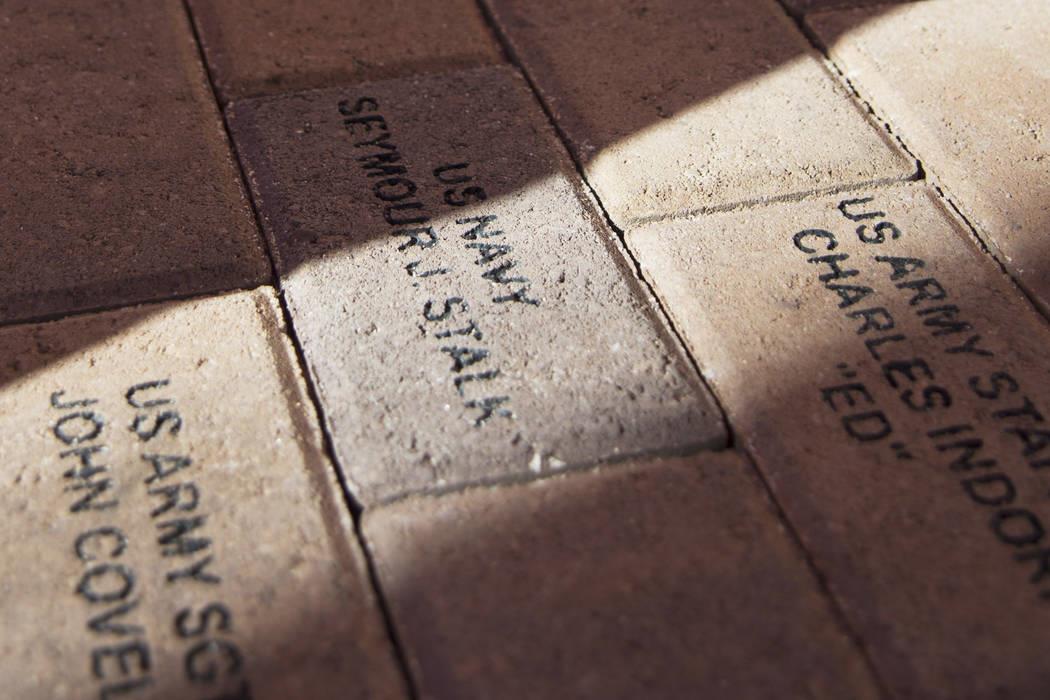

Loving husband, father, grandfather and greatgrandfather. Born in Chicago, Illinois and moved to Los Angeles in 1938. He was the essence of the American Dream, starting his own paint business from nothing.




My personal experiences have shaped my view of homelessness and the best way to fight it. I am now more convinced than ever that we need to take action to end homelessness in America. I want people to understand that there is a way to help people so that they do not need to live on the streets. The homelessness crisis stems from a lack of prioritization on the part of the government. If we could produce a vaccine for a killer virus in record time, why the hell are we not producing other solutions? We can no longer afford to ignore this problem, it's time to get to work.
For more than four decades he has been responsible for dozens of notable residential, industrial and commercial projects throughout the United States, Haiti and China in both the public and private sector.

ISBN: 979-8-218-15470-7

“Theonlyonewaytosolvethehomelessproblemin Americaistobuildaffordablehousingwith supportiveandintensivewraparoundservices."